
EDGING PUSH THEIR PUNK TO THE POINT OF NO RETURN BY MICCO
FREE AND FREAKY SINCE 1971 | MAY 2, 2024
CAPORALE P. 34
BY DMB P. 12
BERLIN CLOSED FOREVER. IS THE UNION TO BLAME?
04 Readers Respond 04 Editor’s Note CITY LIFE
06 Street View A mother-daughter duo
07 Passages The Raven Room closes.
08 Business Chicago Fair Trade advocates for workers.
FOOD & DRINK
10 Profile Bo Durham is Mindy Segal’s right-hand man.
11 Sula | Reader Bites A Gỏi vịt (duck salad) at Nhà Hàng Vietnam Restaurant

NEWS & POLITICS
12 Brown | Labor A look back at Berlin’s abrupt closure
16 Social housing Chicago is primed for its most significant housing program in decades.

COMMENTARY
18 Isaacs | On Culture A new genocide exhibit opens at the Holocaust Museum.
ARTS & CULTURE
20 Exhibition Get acquainted with Dada provocateur Mina Loy.
22 Cra Work Galen OdellSmedley melds art with cra .
23 Chicago history Arionne Nettles’s love letter to Black Chicago
THEATER
24 Reviews The late August Wilson is onstage with Congo Square and Goodman Theatre.

26 Reid | Profile Second City’s Evan Mills on AAPI representation and RuPaul dreams
28 Plays of Note Hamlet, Little Orphan Boy: The Musical! and Warm on the Coolin’ Board
FILM
30 Profile The Chicago Film Archives presents stories from the 1968 DNC.
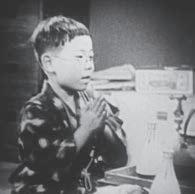
31 The Moviegoer Kat Sachs on film logs, benshi, and more
32 Movies of Note Challengers doesn’t reach Zendaya’s potential; Flipside is a warm, discursive documentary; and more.
MUSIC & NIGHTLIFE
34 Caporale | Profile Edging push their punk to the point of no return.
38 Chicagoans of Note Anaiet Soul, pianist, performer, and lifelong student

40 Shows of Note Previews of concerts including the Erwin Helfer Celebration, Cindy Lee, Bongripper, Giggs, and Eiko Ishibashi
44 Early Warnings Upcoming shows to have on your radar
44 Gossip Wolf ZBR Fest Midwest packs Subterannean with 28 screamo bands, WZRD celebrates 50 years with a free Martyrs’ show, and more.
OPINION
45 Savage Love Quick answers to quick questions
CLASSIFIEDS
46 Jobs
47 Professionals & Services
47 Auditions
47 Matches
ON THE COVER: THE BAND EDGING BY JOSH DRUDING FOR “EDGING PUSH THEIR PUNK PAST THE POINT OF NO RETURN” BY MICCO CAPORALE. FOR MORE OF DRUDING’S WORK, VISIT JOSHDRUDING. COM OR FOLLOW THEM ON INSTAGRAM AT @JOSHDRUDING.
TO CONTACT ANY READER EMPLOYEE, EMAIL: (FIRST INITIAL)(LAST NAME) @CHICAGOREADER.COM
CEO AND PUBLISHER SOLOMON LIEBERMAN
ASSOCIATE PUBLISHER AMBER NETTLES
EDITOR IN CHIEF SALEM COLLO-JULIN
MANAGING EDITOR SHEBA WHITE
ASSISTANT MANAGING EDITOR
SAVANNAH HUGUELEY
ART DIRECTOR JAMES HOSKING
PRODUCTION MANAGER KIRK WILLIAMSON
SENIOR GRAPHIC DESIGNER AMBER HUFF
THEATER & DANCE EDITOR KERRY REID
MUSIC EDITOR PHILIP MONTORO
CULTURE EDITOR: FILM, MEDIA, FOOD TARYN ALLEN
CULTURE EDITOR: ART, ARCHITECTURE, BOOKS KERRY CARDOZA
NEWS EDITOR SHAWN MULCAHY
ASSOCIATE EDITOR & BRANDED
CONTENT SPECIALIST JAMIE LUDWIG
DIGITAL EDITOR TYRA NICOLE TRICHE
SENIOR WRITERS LEOR GALIL, DEANNA ISAACS, BEN JORAVSKY, MIKE SULA
FEATURES WRITER KATIE PROUT
SOCIAL JUSTICE REPORTER DMB (DEBBIE-MARIE BROWN)
STAFF WRITER MICCO CAPORALE
SOCIAL MEDIA ENGAGEMENT
ASSOCIATE CHARLI RENKEN
VICE PRESIDENT OF OPERATIONS
ANN SCHOLHAMER
INTERIM CHIEF DEVELOPMENT
OFFICER MARY GRACE WOLF
VICE PRESIDENT OF PEOPLE AND CULTURE ALIA GRAHAM
DIRECTOR OF MARKETING AND STRATEGIC
COMMUNICATIONS CHASITY COOPER
MULTIMEDIA CONTENT PRODUCER SHAWNEE DAY
MARKETING ASSOCIATE MAJA STACHNIK
MEMBERSHIP MANAGER MICHAEL THOMPSON
GRANTS MANAGER JOEY MANDEVILLE
VICE PRESIDENT OF SALES AMY MATHENY
SENIOR SALES REPRESENTATIVE LINDSAY FIGURSKI
SALES REPRESENTATIVE WILL ROGERS
DIGITAL SALES ASSOCIATE AYANA ROLLING
MEDIA SALES ASSOCIATE JILLIAN MUELLER
ADVERTISING
ADS@CHICAGOREADER.COM
CLASSIFIEDS: CLASSIFIEDS.CHICAGOREADER.COM
NATIONAL ADVERTISING VOICE MEDIA GROUP 1-888-278-9866













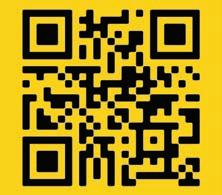
VMGADVERTISING.COM JOE LARKIN AND SUE BELAIR
DISTRIBUTION CONCERNS distributionissues@chicagoreader.com 312-392-2970
READER INSTITUTE FOR COMMUNITY JOURNALISM, INC.
CHAIRPERSON EILEEN RHODES
TREASURER REESE MARCUSSON
SECRETARY TORRENCE GARDNER
DIRECTORS MONIQUE BRINKMAN-HILL, JULIETTE BUFORD, JAMAL DEGERATTO, DANIEL DEVER, MATT DOUBLEDAY, TIMO MARTINEZ, JAKE MIKVA, ROBERT REITER, CHRISTINA CRAWFORD STEED
READER (ISSN 1096-6919) IS PUBLISHED BIWEEKLY BY THE READER INSTITUTE FOR COMMUNITY JOURNALISM 2930 S. MICHIGAN, SUITE 102 CHICAGO, IL 60616 312-392-2934, CHICAGOREADER.COM
COPYRIGHT © 2024 CHICAGO READER
PERIODICAL POSTAGE PAID AT CHICAGO, IL ALL RIGHTS RESERVED. CHICAGO READER, READER, AND REVERSED R: REGISTERED TRADEMARKS ®
2 CHICAGO READER - MAY 2, 2024 LETTERS
CHICAGO READER | MAY 02, 2024 | VOLUME 53, NUMBER 15 IN THIS ISSUE
THIS WEEK
member today.
publish
Comprehensive arts and culture news and reviews, deeply researched coverage of civic affairs, and unique voices from every part of Chicago. The nonprofit Chicago Reader needs your support! Please make a gift today to support the Reader!
Donate any amount, or just $5 per month to become a
Your support helps us continue to
the journalism Chicagoans love in print and online, absolutely free with no paywalls and no log-ins.










































MAY 2, 2024 - CHICAGO READER 3 Our first-ever store opens May 23. MARK YOUR CALENDAR
coming to your neighborhood! Discover the best of all things home with an inspiring selection of furniture, decor, and more – up close and personal.
US FOR THE GRAND OPENING WEEKEND May 23–27
Plaza | 3232 Lake Avenue Wilmette, IL 60091
us @wayfair_chicago SCAN TO LEARN MORE MAKE SOMETHING ART & DESIGN CLASSES for adults, teens, and kids. Online and on-campus classes available. REGISTER NOW
We’re
JOIN
Edens
Follow
EDITOR’S NOTE Reader Letters m
Re: “The Chicago Palestine Film Festival is here for eager audiences,” written by Nora Paul and published at chicagoreader.com on April 19



The festival has always showcased such incredible films by even more talented filmmakers. I’m so glad to see they’re finally getting more exposure. —Farha Khan, via Facebook
Re: “Review: Rebel Moon—Part Two: The Scargiver,” written by Kyle Logan and published at chicagoreader.com on April 24
This is how I felt! I enjoyed Part One and was looking forward to Part Two, but missed seeing all the cool locales from the first movie. —Jenny Lam, via X
Re: “Invasion of privacy,” written by Kerry Cardoza and published in the April 18 issue (volume 53, number 14)
This guy will never be held accountable. —Emilie, via Instagram
Thank you for reporting on this. I le Audiotree a er news initially broke amongst our close circles, and I think a press statement had dropped by then as well. . . . Never heard from them a er I resigned except for when I had to chase down a $100 check. —True Romance, via X
Re: “The Thanksgiving Play sends up white liberal guilt,” written by Charli Renken and published in the April 18 issue (volume 53, number 14)
This play is so painfully funny. I hope everyone goes to see it. —Jack Disselhorst, via X
Find us on socials: facebook.com/chicagoreader twitter.com/Chicago_Reader instagram.com/chicago_reader linkedin.com search chicago-reader
The Chicago Reader accepts comments and letters to the editor of fewer than 400 words for publication consideration.
m letters@chicagoreader.com



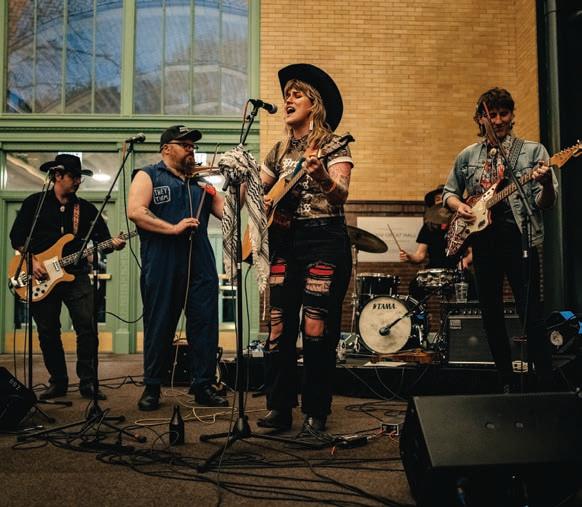
Iwasn’t expecting to be moved, delighted, and amused, and even get closer to nature on a Thursday night, but our Best of Chicago celebration gave me all the feels . . . and yet another level up in my Chicago journey.
Thank you to all of you who joined us! From longtime Reader readers whom I’ve spied at membership events to first-time new Chicagoans who found us in print while waiting for a bus, I loved chatting with all of you about, well, everything! Our coverage, the weather, the polar bears at Lincoln Park Zoo eating popsicles made with turkey legs, the Chicago Bears trying to eat a little bit more than we had prepared for them at the table—Reader fans are well-versed in Chicago and ready to share. We welcome your thoughts and thank you, always
and forever, for your support.
Big praise and thanks to LPZ, our vendors, our sponsors, and all of our guest hosts and performers. To the South Shore Drill Team, Deanna Ortiz, Shermann “Dilla” Thomas, Olivia & the Lovers, Luis Carreon, SoloSam, DJ Scary Lady Sarah, DJ Bonita Appleblunt, and Rich Robbins: thank you for showing up and showing out.
And to the ducks who sacrificed their lives in favor of the lions getting a snack: thank you for providing us all with the most metal display at a Reader party, ever. v
—Salem Collo-Julin, editor in chief m scollojulin@chicagoreader.com
4 CHICAGO READER - MAY 2, 2024
From top le , clockwise: a South Shore Drill Team fl agger; a strong male lion infl uence; Olivia & the Lovers; Rich Robbins JOSH DRUDING FOR CHICAGO READER




FOR CELEBRATING WITH US

PRESENTING SPONSOR

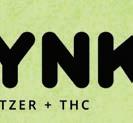










TITLE SPONSORPREMIUM SPONSOR
SPECIAL THANK YOU TO OUR FOOD AND DRINK VENDORS AND SAMPLERS:











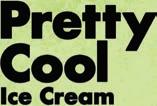







MAY 2, 2024 - CHICAGO READER 5
THANKS!
CITY LIFE
STREET
VIEW
Hitting the bull’s-eye
A mother and daughter serve impeccable style at Target.
By ISA GIALLORENZO
Dawn and Lauren Bockhorst casually strolled through the Target store in Avondale, standing out from the more athleisure-adjacent vibe their fellow shoppers were giving. Both Bockhorsts were dressed in muted and neutral colors but both exuded fashion proficiency.
Despite looking very polished and modern, Dawn’s entire outfit was thrifted. Lauren’s pre-owned dress was purchased at Buffalo Exchange. “Nearly everything in my closet is secondhand. I have always loved thrifting. Going to the thrift store on my day o is very cathartic, and I love the thrill of the hunt—not to mention lessening my environmental impact,” said Dawn, 40.
Lauren, 21, added, “We love shopping at the Salvation Army and Goodwill the most. I will usually find what I’m looking for at the thrift store. It is such a sustainable way to shop, and you never know what you’ll find.” Lauren also enjoys shopping in her mother’s closet, which is easy to understand when you have a mother like Dawn.
After spending their Sunday afternoon at the Art Institute, mother and daughter got inspired to experience an “art evening.” Dawn planned to make pottery and Lauren intended to work on a sweatshirt design. They were at Target so Lauren could find a hoodie to embellish. “She’s very talented—you should see the pants she’s created,” gushed Dawn. Fashion is definitely a way that the Bockhorsts express love for one another. “We eat, sleep, and breathe fashion. She is truly my inspiration and I am hers,” said Lauren. “Sometimes we will sit over brunch or a happy hour and talk about what trends we are seeing for the season,” Dawn added. “We often thrift together, or one of us might go solo but will send the other one photos of our finds.”
The Bockhorsts’ wardrobe collab is not 100 percent conflict-free. “Don’t bring up the

birthday dress incident with Lauren: it might still be a touchy subject,” Dawn said.
“We always borrow from each other’s closets. More often than not, my mom’s statement pieces will somehow end up in my closet. Unfortunately, there have been multiple occasions where we both have thought of the same outfit to wear that day, but we always compromise,” Lauren said.
Happily, their styles work together but are not exactly the same. “My mother has a more mature style. [She has] some pieces I will never step foot outside in, but my mom always finds a way to pull them off. I, on the other hand, am more free-spirited when it comes to fashion. I always wear whatever I want,” said Lauren.
Dawn, an executive assistant, describes her own style as “boho badass.” “I wear what I want, and I express myself through fashion,” said Dawn. “I’m obsessed with vintage, typi-
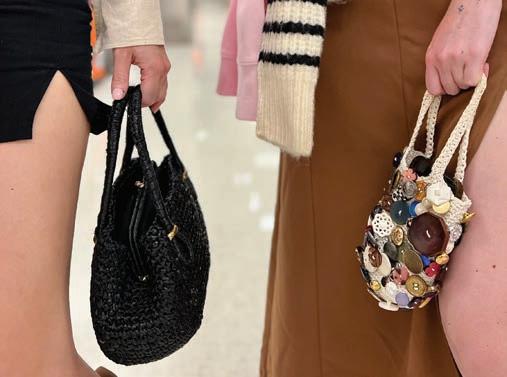
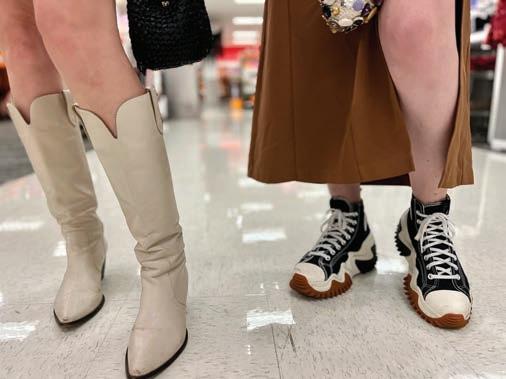
cally 60s and 70s attire.”
Having recently moved to Chicago from Indiana, Dawn and Lauren enjoy exploring the city together and “have been eating their way through the city’s best burgers.” (Dawn recommends Little Bad Wolf, “hands down.”)
“We have always loved the city, even before we moved. I probably couldn’t do it without my mom being by my side, so I’m really appreciative of that. There is always so much to do here! I love going out with my mom on the weekends. I just love meeting new people in the city,” said Lauren, who works as a barista.
To celebrate Mother’s Day, the Bockhorsts might go to the Logan Square Farmers Market as a family and have a picnic. “I am just grateful for any time we can all be together as a family,” said Dawn, who has four children (including Lauren) ranging from 18 to 23 years old. Dawn said she has always encouraged her children to express themselves through their
personal style and “to be individuals, to stand out in a crowd, and feel comfortable and confident.” She also nurtures her children by not sweating the small stu and focusing on what matters most.
“Always remember to laugh and, contrary to what most people say, be a friend. It’s a tough world out there, and a lot of times our kids really do need someone to talk to and who can relate to them,” said Dawn. Her approach seems to be successful, at least as far as Lauren is concerned. “My mom has always been my best friend,” said Lauren. “I tell my siblings that it’s hard being the favorite child. She supports us no matter what, and will always have our backs. She is an independent woman that I look up to in my life.” Lauren adds, “Be your mom’s best friend. I wouldn’t have it any other way.” v
m letters@chicagoreader.com
6 CHICAGO READER - MAY 2, 2024
Dawn (le ) and Lauren Bockhorst ISA GIALLORENZO
MORE STREET STYLE chicagoreader.com/city-life
PASSAGES
The Raven Room shuts down despite strong community support
The Ravenswood bar and entertainment venue’s last day open to the public was April 28.
By CHARLI RENKEN
When my favorite bartender at the Raven Room told me that the bar and event space was planning to shut down at the end of April, I nearly burst into tears.
For more than a year, I had been visiting the establishment every Wednesday night for its weekly Dungeons and Dragons (D&D) events. I’d made close friends with not only my fellow players but also other regulars.
I became close to the staff, the drag performers that frequent the Raven Room’s weekly Chucklehead drag comedy competition, and the artists who called the bar’s quirky walls home.
Anneliese, the bartender who gave me the bad news, made sure to hug me and wish me a safe trip home every night before I left. And I had an ongoing bit with one of the regulars who shares my name. It was my own little Cheers ; so the news of my home away from home closing was a gut punch.
hosted D&D nights at the Raven Room. “The owner and staff have always been willing to work with us on a level that wasn’t just about making them money. For example, they’ve always o ered our Dungeon Masters two free drinks as a kind of reward for DMing.”
Save Point’s D&D Wednesday group has grown since its inception from just a handful of
you serious?!’”
Part of the reason for that generosity was due to Sawyer’s own experience in the Chicago theater community. “He knows how di cult it is to secure spaces for projects like ours, and he believed in what we were doing,” McCall continued.

Part of what made the Raven Room so special was its versatility. The bar started in 2019 as Redline VR, a virtual reality–focused venue where patrons could rent virtual reality (VR) headsets to play games while enjoying drinks from a colorful cocktail and beer menu.
While the VR aspect of the bar remained when it became the Raven Room in 2021, over the years the venue transformed into an event space hosting a range of experiences, including the aforementioned drag performances and D&D nights, but also performances of Shakespeare and stage combat lessons.
“It’s an incredibly unique space,” said Cody Siemiatkowski, one of the organizers of the Save Point gaming community, the group that
players gathered around one table to as many as 60 people showing up week after week. Siemiatkowski credits a lot of that growth to the support the Raven Room provided.
That support extended to the venue’s artists in residence, including Counterfeit Combat and the Olde School Shakespeare Collective. The Raven Room offered generous deals to these theater groups when they reached out to book performances.
“We got an 80/20 split of ticket prices, which is unheard of in the industry,” said Wyatt McCall of the Olde School Shakespeare Collective. “It’s usually the other way around. You go home with 20 percent and the venue keeps the rest. So when [the owner] Aaron [Sawyer] offered us that, we were like, ‘Are
Despite being a “nerd-forward bar,” the Raven Room was home to other communities that wouldn’t necessarily call themselves nerdy. Wrestle League is a popular group that managed to fit an entire wrestling ring into the performance space at the bar. Raven Room also hosted a Skee-Ball league that recently wrapped up its third season.
The interesting thing about all of these communities at the Raven Room is that they held each other up throughout their tenure at the bar. “There’s a kind of cross-pollination that happens between all the crowds that come to the bar. People come for Magic: the Gathering and then join the Skee-Ball league or come for D&D and then catch a drag show,” said bar manager and Magic: the Gathering night organizer Ryan Reynolds (not to be confused with the Deadpool actor). That kind of mingling of scenes helped the communities at the Raven Room thrive, supporting each other and ensuring good turnouts for events.
Unfortunately, there’s no saving the Raven Room through community support alone. The business is in a lot of debt both from taking out loans just to open its doors five years ago and keeping it afloat during closures due to the pandemic.
“We didn’t get a lot of the grants that other businesses did during the pandemic,” Sawyer
said. “I had to take out an SBA loan of $30,000 which we went through really quickly; and then we got the chance to expand that loan to $90,000 . . . I made the mistake of being the guarantor for that loan, so I’m on the hook for that.” With the cost of doing business rising, Sawyer said he just can’t keep things going anymore.
“I’ll probably have to file for personal bankruptcy,” he said, adding that his family has been living below the poverty line for the past five years while trying to keep the Raven Room up and running.
As the bar shuts down, the communities that gather there are in search of a new home. For Save Point, the search for a new space has been community-led. The group was looking for a bar in the Ravenswood area with a lot of room for their frequently large turnouts. Save Point was also dedicated to finding a space that would allow the group to keep admission to its events free of charge.
Thankfully, the organizers at Save Point think that they’ve found a home at XMarket Food Hall, a vegan eatery, bar, and grocery store in Buena Park. XMarket is big enough to fit the group of 60-plus people who tend to show up for D&D each week. It’s not a perfect location, they said, but organizers feel that the food hall is close enough to Raven Room that D&D regulars won’t have to make much of a commute. The group says it expects to lose some of its members due to the move, but the core group of dedicated players should remain.
And all is not lost for the self-proclaimed weirdos who called the Raven Room home. Reynolds and Wrestle League organizer Alex Horist hope to bring the bar back to life in the future.
“There is a group of people in talks about picking up the mantle,” Reynolds said. While he couldn’t say much about plans for resurrecting the business, he did say that he hopes to take the lessons learned from the previous business while conceiving “Raven Room 2.0.” Currently, the group is in talks with Sawyer to buy the Raven Room’s assets.
Horist added, “This place really shouldn’t close down. And with a couple of tweaks, it can be a real Chicago staple.” v
m crenken@chicagoreader.com
MAY 2, 2024 - CHICAGO READER 7 CITY LIFE
A full crowd at the Raven Room MATTHEW FREER
CITY LIFE
BUSINESS
Fair flair
Ethics and sustainability are essentials for Chicago Fair Trade.
By ISA GIALLORENZO
Chicago might not be widely known for its fashion industry, but there are some local businesses and institutions that bring hope for a brighter future. Chicago Fair Trade (CFT) is one of those organizations: a nonprofit dedicated to helping local companies both provide fair labor conditions to their workers and also adopt more ecological practices.
As CFT’s director of outreach and engagement Nancy Demuth explains, “We advocate for fair trade: an alternative way of doing business that benefits [both] people and the planet by paying fair wages to workers, providing safe and fulfilling working environments, and using environmentally friendly production methods.”
CFT finds its roots in a 2005 project sponsored by the nonprofit Oxfam America, which hired former CFT director Nancy Jones to create the first grassroots fair trade organization in the U.S., with the hopes of sparking a fair trade movement. Jones linked up with a group of committed academics, activists, and entrepreneurs to create CFT, which became an independent 501(c)3 nonprofit organization within one year. Since then, CFT has accomplished remarkable feats such as successfully campaigning for the city of Chicago to become an o cial Fair Trade Town, which entails multiple initiatives and goals supporting fair trade. Chicago’s city council passed a fair trade resolution in 2010 and made the o cial declaration in 2011.
shop ordinance preventing Chicago’s police, fire, and other city departments from purchasing uniforms, footwear, or headgear produced using child labor and requiring the city to purchase only from garment vendors who sign affidavits ensuring a sweatshop-free supply chain. The ordinance was approved and went into e ect in 2015.
Executive director Katherine Bissel Córdova, 59, will celebrate ten years at the helm of the organization this summer.
Córdova, a longtime champion for human rights causes, says, “It’s been a wonderful ten years. I feel so lucky to have the job I have. The organization has grown and the fair trade landscape has changed tremendously. . . . When CFT was founded, we’d
CHICAGO FAIR TRADE
CFT celebrates World Fair Trade Week with events from Sat 5/ 11 through Sat 5/ 18. The Chicago Fair Trade Museum reopens on Sat 5/ 18 with an opening reception from 4-8 PM. chicagofairtrade.org
CFT currently mentors 60 local companies from all kinds of industries. “Often there is confusion around what constitutes fair trade. We often meet people running businesses that follow fair trade principles but don’t think they qualify for membership in fair trade because they aren’t certified. While fair trade
Today, many people not only know about fair trade but seek it out. I never could have imagined that ‘supply chain’ would be a commonly used term—one silver lining of the pandemic.
certification is important, it is one piece of the fair trade movement. Most of our business members work with women makers (80 per-
“Generally speaking, our organization supports all businesses and initiatives dedicated to doing trade in a better, fairer way. We don’t focus on specific industries as such, although we definitely spend more time highlighting powerful industries with particularly poor track records on workers’ rights and environmental sustainability. The fast fashion industry is an obvious example of this, but sadly, there is no shortage of others, particularly in agricultural and commodity supply chains. The chocolate industry is a big one, as cocoa production is rife with child labor and a major driver of deforestation. But there are huge social and environmental issues associated with so many everyday products, like co ee, sugar, bananas,

In 2014, CFT advocated for an anti-sweat-
get a lot of blank stares when we talked about fair trade. Today, many people not only know about fair trade but seek it out. I never could have imagined that ‘supply chain’ would be a commonly used term—one silver lining of the pandemic.”
cent) in small workshops and/or cooperatives. They make a variety of products: home decor, tablewares, jewelry, accessories, candles, and more. Some of our members work with farmers and sell cacao, chocolate bars, and co ee,” says Córdova.
avocados, cotton . . . the list goes on and on. In reality, all manner of fair trade products exist, including gold, flowers, wine, and even sports balls,” Demuth explains.
CFT boasts successful members such as Metropolis Coffee, Mata Traders (clothing
8 CHICAGO READER - MAY 2, 2024
COURTESY OF CHICAGO FAIR TRADE
A protest in March in front of the Levi’s store on Michigan Avenue initiated by CFT to pressure the company to sign a pledge for worker safety
CITY LIFE

and accessories), Global Mamas (clothing, accessories, bath and body products), and Ten Thousand Villages (gift shop) in Evanston and Oak Park. Another remarkable a liate is local shoe brand Seres, which has an impressive track record of sustainable and fair labor practices with its suppliers from León, Guanajuato in Mexico.
“I decided to reach out to the CFT because I was looking for a community with the same principles and values as me,” says Seres founder Vanessa Arroyo, 34. Arroyo previously designed shoes for high-end label Rag & Bone in New York.
“There are a lot of economic disparities, racial inequities, and gender inequalities in the fashion industry—whether they take place at the forefront of the industry or behind the scenes in manufacturing facilities. I have a social responsibility to make a positive impact with the work I do. Being a part of the CFT allows me to raise awareness for these issues,” says Arroyo.
“If I can operate a business with a clean supply chain, provide fair wages, manage to o set our carbon footprint, and provide circular packaging, why can’t these big corporations do it too? I am a one-person show, completely bootstrapped this business. I’m ready to make a change from a foundational level. As you can see, I am very passionate about these topics just as much as I am about fashion.” Arroyo recently opened a shop in West Town.
“Our business members are . . . an incredible group of people who really support and learn from one another,” says Demuth. Members also benefit from sales opportunities at popup shops promoted by CFT.
CFT extends May’s World Fair Trade Day celebration into a week of activations from Saturday, May 11 until Saturday, May 18. The organization starts with a Fair Trade Market and Crochet All Day event scheduled on the 11th from noon to 5 PM at South Loop Farmers
If I can operate a business with a clean supply chain, provide fair wages, manage to offset our carbon footprint, and provide circular packaging, why can’t these big corporations do it too?
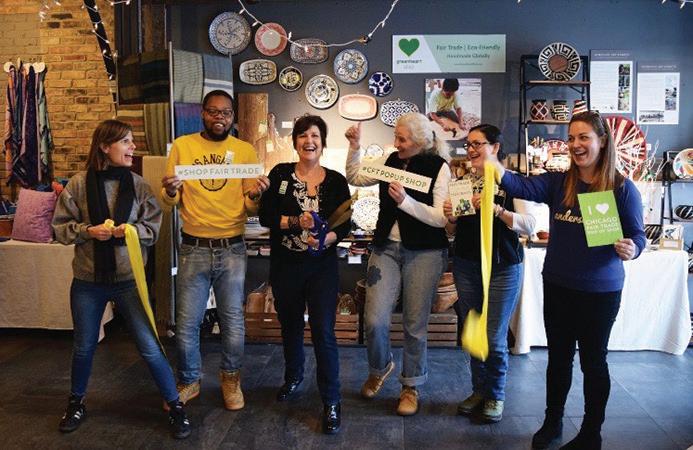
Market at Roosevelt Collection Shops.
Lectures, workshops, open houses, and even a fair trade bus tour of the city will take place during the week, culminating with the grand reopening of the Chicago Fair Trade Museum (the first one in the world) on Saturday, May 18.
There’s no shortage of opportunities for both businesses and individuals to get involved with CFT. For those who enjoy fashion, CFT’s Conscious Closet Club hosts clothing swaps, skill workshops (like indigo dyeing and visible mending), circles (for crochet and knitting), “and anything and everything related to ethical fashion,” says Demuth.
“We also advocate for improvements in the apparel industry and support campaigns
to improve working conditions for garment workers,” Demuth adds. She opines that tough problems can be faced with a joyful disposition. “It’s so easy to feel overwhelmed and despondent thinking about topics like global economic inequality, gender disparity, and the climate crisis, but Chicago Fair Trade channels that feeling of ‘what can I do?’ into practical action,” says Demuth. “We make it easy for people to shop fair trade and be responsible consumers, but we also make it a lot of fun. We definitely embody [the saying] ‘If I can’t dance, I don’t want to be part of your revolution.’” v
m letters@chicagoreader.com
MAY 2, 2024 - CHICAGO READER 9
A clothing swap hosted by CFT’s Conscious Closet Club
COURTESY OF CHICAGO FAIR TRADE
CFT executive director Katherine Bissell Córdova (third from le ) celebrates the opening of their holiday pop-up shop with other fair trade proponents. COURTESY OF CHICAGO FAIR TRADE
FOOD & DRINK
PROFILE
Bo Durham is Mindy Segal’s right-hand man
There’s a longtime familial working relationship between the famous pastry chef and her prolific mentee.
By AMBER GIBSON
We’re not trying to say that alongside every great woman is a fabulous gay bestie, but Bo Durham has certainly been just that for his mentor, James Beard Award–winning pastry chef Mindy Segal. Over the past decade, the pair have been together at restaurant Hot Chocolate, Hot Chocolate Bakery at Revival Food Hall, and now Mindy’s Bakery, where Durham is the executive pastry chef.
He mostly works behind the scenes, leading by example. Durham is the first to arrive at 3 AM each morning and makes bagels, bialys, and danishes, preps pastries for the second bake, and plans baking schedules for the coming days until noon or later, depending on how much there is to do.
“I’ve been in food my whole life. It’s in my blood— however much I wanted to fight it for years.”
“I like having a solid half hour by myself every day,” Durham tells me as we sit in a small office behind the lively kitchen. There’s no seating at Mindy’s Bakery, so you have to take your treats to go. “I like the peace and quiet to get everything organized for the next two people who come in, who are the morning bakers. My parents had a catering business growing up, so I’ve been in food my whole life. It’s in my blood—however much I wanted to fight it for years.” Durham worked in Columbus, Ohio, for five years after graduating from culinary school and has been with Segal ever since he moved to Chicago at 24 years old.
Now, even though it’s Segal’s name on the building, Durham is featured on a couple of menu items—Bo’s Stoner Cookie and Bo’s Buttermilk Biscuits. He also has a buckeye bar on the menu as an ode to his roots in Columbus. And his roasted garlic and olive focaccia? You might have spotted it in the
second season of The Bear.
“I’ve been working on these recipes for years,” he says. “The thing with bakers and pastry chefs is that we fixate on something for a really long time. It’s never quite perfect, the way we want it to be.” While his biscuit ingredients are pretty standard—flour, sugar, European butter, salt, buttermilk, and baking powder—he’s been tweaking the process to constantly improve the flavor and texture.
“How I roll the dough, how long I rest the dough between freezing and baking, it all makes a difference,” Durham says. “Now I use a very soft white wheat flour so they are more tender. They’re really buttery, super delicious, and they’re still not perfect, but I like where they’re at. One day they’ll be the best thing that I make.”
The buttermilk biscuits, along with specials like vanilla bean sour cream–glazed cinnamon rolls, are only available on Saturday and Sunday, when lines are consistently out the door all day, including a clamoring crowd before they open at 8 AM. (Pro tip: There’s less of a line on Wednesday and Thursday, but also a smaller selection of baked goods to choose from.)
before she needs it. I can read her mind for the most part.”
And in return, Segal gives Durham space to shine. Although manicures have long been forbidden in food service, Durham sports bright fuchsia nails. “They’re my favorite, sassy as hell,” he says. “I’m in my pink phase right now.”
Over the years, Durham has been Segal’s right hand for culinary events at the Resort at Paws Up in Montana and Waldorf Astoria
Find more one-of-a-kind Chicago food and drink content at chicagoreader.com/food.
R MINDY’S BAKERY
1623 N. Milwaukee
Wed–Fri 7: 30 AM– 3 PM, Sat–Sun 8 AM– 3 PM 773 - 489-1747 mindysbakery.com
blend will slowly make its way into many baked goods, and it’s already being used for their signature hot chocolate. “We wanted it to be as dark as a milk chocolate could be,” Durham says. The blend of Mexican and Ghanaian cacao beans clocks in at 44.8 percent cacao content. “It’s great because it takes on different flavors and nuances in various applications. In the chocolate chip cookie for the cookie croissant, it just melts in your mouth and has a semisweet flavor. When we make it into a ganache or pastry cream, it’s creamier and you can taste those caramel notes, and the little bit of salt we add just amplifies the intense chocolate flavor.”

“Isn’t Bo the best?” Segal says as she pops in with a buttermilk biscuit for me to try right on cue. “He runs the show and has been for a long time. He’s my wife.”
“We call each other our work wives,” Durham explains. “This is the longest relationship I’ve ever been in. This is a small family business, so we’re all family at this point. We have our disagreements like any family does, but for the most part, we are a solid team. I can pretty much anticipate what Mindy needs
Los Cabos Pedregal. Most recently, Durham and Segal visited Paris to create their own custom blend chocolate in collaboration with Cacao Barry.
“It was my first time in Paris, and I didn’t want to come back,” Durham says. “I probably gained ten pounds, but you’re constantly eating and walking and eating and walking. We were going around to all these iconic bakeries and patisseries, boulangeries, and chocolate shops.”
Their new Lait Extraordinaire chocolate
Durham is also looking forward to warmer weather and getting fresh fruit from local farms. Typically, during spring and summer, he and Segal visit Green City Market weekly for inspiration. “We aren’t reinventing the wheel here, but we are trying to take what was once somebody’s old family recipe and elevate it,” he says. “From grandma to gourmet, with higher quality ingredients.” v
m letters@chicagoreader.com
10 CHICAGO READER - MAY 2, 2024
Bo Durham, executive pastry chef at Mindy's Bakery ORIANA KOREN FOR CHICAGO READER
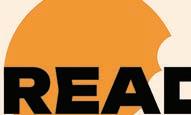


Gỏi vịt (duck salad) at Nhà Hàng Vietnam Restaurant
“The duck is better,” a server might tell you if you’re caught dithering between the gỏi gà and gỏi vịt at this excellent yet often overlooked Argyle Street anchor. The chicken expression of this miracle of the salad arts is one of the best in the city, for sure, but the waterfowl-based alternative is singular. Both depend on the rangy, chewy, full-flavored flesh of birds that spent some time exercising their muscles on open land—or at least ones freshly dispatched from a nearby live poultry shop. Chilled bone-in, skin-on poached bird meat slips into a harmonic convergence with cool, crunchy, shredded cabbage and carrot; a bracing herbal breeze of culantro and mint; crushed peanuts; crispy fried shallots; and shrimp chips, all dressed in gingery-sweetspicy nước mắm gừng
FOOD & DRINK
ages to execute nearly all of it consistently well. Don’t ever sleep on the bún m ắ m; the phở (of course); bún bò huế; turmericinfused Mì Quả ng noodles; the beef with sour mustard; or fish sauce–marinated chicken wings.

But if you’re going gỏi vịt (or gỏi gà), you need an order of its corresponding cháo, in this case cháo vịt—a steaming bowl of rice porridge, cooked in stock enriched with the bird’s carcass and mined with fleshy bones there for the gnawing. This herb and shallot–garnished bowl of love is meant to be the main event, with the salad supporting: you can cool down your smooth cháo and create some mandibular activity by adding portions of the gỏi—as recommended by food writer Andrea Nguyen. But the salad can stand all on its own: a symphony of crunchy-chewy textures, spiked with sweet, salty, spicy, sour jolts to the pleasure center. —MIKE SULA NHÀ HÀNG
VIETNAM RESTAURANT 1032 W. Argyle, Wed–Mon 8:30 AM–9 PM, 773-878-8895 v
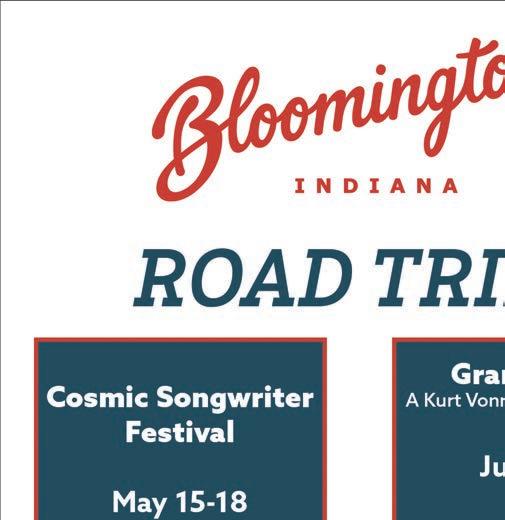
Nhà Hàng is that rare spot with a sprawling and varied menu that somehow man-
Reader Bites celebrates dishes, drinks, and atmospheres from the Chicagoland food scene. Have you had a recent food or drink experience that you can’t stop thinking about? Share it with us at fooddrink@ chicagoreader.com.




MAY 2, 2024 - CHICAGO READER 11
cori nakamura lin | onibaba studio Tell us more about your music habits and reading preferences. TAKE THE MUSIC SURVEY!
NEWS & POLITICS
NIGHTLIFE
Closing time
Berlin closed forever. Is the union to blame?
By DMB (DEBBIE-MARIE BROWN)
On Friday, November 17, members of the Berlin Union and the lawyer for the beloved Lakeview queer club met for what workers didn’t know would be their last bargaining session.
Staff, party hosts, DJs, and patrons were riding the high from a successful four-week boycott. For months, the club’s owners, Jim Schuman and Jo Webster, hadn’t countered any of the union’s economic proposals (like those asking for higher pay and health insurance), so union members had hoped a boycott might finally force a true back-and-forth.
Jolene Saint, a former bartender at the establishment, remembers telling this to the
bar’s attorney as they sat opposite each other.
“The boycott’s been going on for four weeks, is the intention to close the club?” Saint recalls asking. “And they were like, ‘No, the intention is not to close the club. We have no intention of closing the club’—and then four days later, they closed the club.”
Now, five months after the unexpected shuttering of one of Chicago’s oldest queer bars, Saint has a new job at a French-cuisine restaurant o the Blue Line. She’s planning an escape from the service industry; she wants to become an electrician. Chicago Women in Trades o ers free training for women interested in working construction or manufacturing jobs. Saint’s thinking about applying. Chelle
Crotinger, a former security guard at the venue, is working at a sandwich shop, fresh o a gig cleaning at a culinary school. He was shocked and disappointed when he learned Schuman and Webster would close the doors of the 40-year-old nightclub forever. “There wasn’t a true effort given [to meet in the middle] from the other side,” they say. Saint was crestfallen when she heard the news. “I thought that the union and management were on the same page about [the club] needing to continue to exist,” she tells me. “But it seems like, for Jim and Jo, they only wanted it to exist if it could be on their terms.”
Irregular Girl is a drag queen and party curator. She’s known for throwing Strapped, Berlin’s monthly transfemme- and transmascpositive lesbian party. Strapped was the club’s busiest night. It was also the first event to be canceled last summer when workers called for a boycott. The union kept Irregular Girl in the loop about their organizing tactics, and she’d use her platform—like her 15,000 Instagram followers—to get out the word. In the days leading up to the bar’s abrupt closure, she

thought the pendulum was swinging in the favor of the united front of workers, performers, and patrons. She thought everyone was in agreement in thinking: We need to end the boycott and go back to the club. “Eventually, the owners will realize what they’re doing,” Irregular Girl remembers thinking. Surely, she thought, “they’d come to the table and have a conversation with us. But they didn’t want to do that.”
As far as I can tell, the only public comment from the bar’s former owners on negotiations with the union came in a statement Schuman and Webster emailed to subscribers and posted to Berlin’s website on October 26. (I tried multiple times to reach them for this story, but neither responded to any of my emails or phone calls.) One of the union’s chief grievances with the owners was their refusal to attend bargaining sessions. In the statement, the pair defended their actions, writing that Schuman had stage four cancer and Webster was his primary caretaker, so they entrusted Berlin’s management and legal counsel to lead discussions and bargain with workers on their behalf.
Saint and Crotinger call the letter “slanderous.” Crotinger says the owners’ reasoning for not showing up to the negotiating table is “bullshit.” The owners never offered a virtual call. Meanwhile, they say, Schuman and Webster stayed at the bar until close for several days around Pride weekend last June. Schuman spent more time at the club than Webster did, Saint adds. “And frankly, it’s also deeply disingenuous to cite your medical condition when one of the things we’re asking for is health care. ’Cause if any of us got the same diagnosis that Jim got while we were working at Berlin, there’s nothing we could have done.” The union wanted the owners at the negotiating table because none of the representatives sent by Schuman and Webster wielded decision-making power. There were only ever interim managers at bargaining sessions, and the bar’s lawyer never set foot in the building. Instead, workers traveled to bargaining sessions at the lawyer’s downtown office. Saint remembers one of these sessions, when she and her coworkers recounted to management the physical toll of the job. They shared that many lived in financial precarity, and even told how two of their unit’s members were unhoused for the majority of the negotiations. “Jim and Jo weren’t there. So they couldn’t hear it,” Saint says. “I don’t know how they would have responded to that because all we
12 CHICAGO READER - MAY 2, 2024
Workers, performers, and the public picket outside Berlin during a two-day strike on August 5 and 6, 2023. COURTESY UNITE HERE LOCAL 1
got in response was the lawyer nodding his head and going, ‘Yes, I will bring that to Jim and Jo.’” The union says they’d o er proposals during bargaining sessions but wouldn’t get an answer back from ownership for at least three meetings. Sessions went from occurring every two weeks to once a month. The owners’ lawyer sometimes canceled meetings at the last minute because they had nothing to share. To the union, it felt like stalling.
Early in negotiations, the union asked for additional training and security equipment for staff. The owners were quick to act. But in response to the union’s demand for a $25 per hour minimum wage (excluding tips), the owners countered that Berlin’s wages were already competitive. According to management, Berlin’s part-time coat check employees, barback employees, bartenders, and security earned average hourly pay (including tips) of $35, $47, $57, and $22.50, respectively. In their statement, Schuman and Webster claimed the bar’s wages were above average for similar positions in the city.
Crotinger, who worked security for the club, and Saint, a bartender, say those figures were inflated. “Forty-seven dollars an hour for barbacks is hilarious,” remarks Crotinger with a laugh. Saint adds, “If I was making $57 an hour, I wish somebody would have told me. By the end of last year, I didn’t even clear $20,000.” Saint says there were a few nights she would make $57 an hour. But just as frequently, there were nights she was lucky to make $15 an hour since tip-reliant wages are so inconsistent.
Tips at the bar were divided between barbacks, who got one-quarter, security, who got 10 percent, and bartenders, who took home the other 65 percent. The union tried to address the wage disparity caused by unevenly divided tips by phasing them out altogether. Saint tells me she’s worked nearly every position at the club. Bartending, the most lucrative
position, was by far the easiest. Security staff, on the other hand, were paid the lowest, despite working one of the most difficult jobs with the most potential for harm.
“It seems like, for Jim and Jo, they only wanted it to exist if it could be on their terms.”
Before the pandemic, security didn’t get any tips. Schuman and Webster thought giving them a cut could smooth things over. “But it’s just not a solution to take from Peter to pay Paul,” Saint says. In her opinion, as long as minimum wage was $15, that’s what Webster and Schuman were comfortable paying security. “Every year, when minimum wage went up by $1, Jim and Jo would come to us and they would say, ‘We’re giving you all raises.’ No, you’re not; minimum wage is going up by $1.”
Webster and Schuman insisted that, since Berlin is not a full-time employer, they shouldn’t be expected to provide full-time wages or health insurance. They said Berlin is only open 25 hours a week, with most employees working around 14 hours per week and none more than 27. Saint and Crotinger point out that the club’s hours were set by management. Sometime last spring, Berlin decided to close the venue on Mondays—a day with scheduled monthly parties—because of low turnout. But bartenders and security who worked Monday nights learned about the change not from management but from the club’s Instagram post.
There were other ways management could’ve addressed low turnout before they decided to close the club on Mondays, Crotinger says. For example, if patrons weren’t going


to Berlin on Mondays because the venue didn’t open until 10 PM, maybe they could’ve tried opening at 6 PM, they offered. But instead, “they just said, ‘No, we’re not going to do those things. We’re just going to cut everyone’s hours more, and more, and more, and more, and more.’”
The union also wanted anyone who worked at least one hour to receive health insurance and pensions paid in full by the bar. But, the owners wrote that would cost Berlin an additional $1,600 per employee every month. “It would be nice to pay the employees what the union wants. Unfortunately, agreeing to the union’s demands will make Berlin noncompetitive, and result in a large increase of costs to our customers, causing Berlin’s patrons to go to other venues.” The union’s critics cite this as one of the union’s more unreasonable asks. “We didn’t want exactly what we were asking for,” Saint says. “We understood that wasn’t necessarily within their power. This proposal that they keep citing as the thing that made Berlin close was our ideal world, our perfect world. We did not expect to get everything that we asked for. We expected them to come to us with some kind of reasonable counterproposal. And they never attempted to do that.” Crotinger says, in reality, workers never expected to win a pension. It was something they included as a bargaining chip, a common negotiating tactic. The union might have, for example, settled for a Berlinprovided stipend for workers injured on the job or even limited coverage from the bar. But without Webster and Schuman at the negotiating table, Crotinger says, it was impossible to find middle ground. The union drafted their proposals blind—they weren’t permitted to view the company’s financials without signing an NDA—so the only way to discern what was
reasonable would be with the help of Berlin’s owners.
Jason Flynn has been working service industry jobs, like line cook, dishwasher, and grocer, since he was 14 years old. From 2021 to 2022, he helped coordinate the national Restaurant Organizing Project (ROP). The ROP emerged during the pandemic to support service workers when restaurants were forced to close. Initially, the government’s response was to pay out restaurants for quarantine-induced restaurant revenue loss—but there was no recompensation plan for the overwhelming majority of workers in that industry who were not owners.
The ROP mentored service workers across the country on how to unionize, conduct an election through the National Labor Relations Board, and move from direct action to an amicable resolution between themselves and their employers. Flynn says service workers nationwide organized for consistent work schedules, respect from management, health and safety issues, and better wages. He points out that the service industry is one of the least organized industries in the U.S., facing issues like poverty-level wages and low levels of safety. Many service workers “don’t have any social safety net or community safety net to fall back into after they’ve done incredibly hazardous and demanding work for years on end,” Flynn continues. Widespread labor organizing across the industry would require a drastic change, “but it’s also completely necessary for people to not be left broken and destitute at the end of their working life.”
Robert Bruno is the director of the Labor Studies Program at the University of Illinois Urbana-Champaign. He explains that collective bargaining is remarkably flexible.
MAY 2, 2024 - CHICAGO READER 13
NEWS & POLITICS
UNITE HERE LOCAL 1
Berlin staff took their union drive public in March 2023. COURTESY
NEWS & POLITICS
continued from p. 13
One of the most important principles, he continues, is determining what the employer is capable of paying. Bruno says Berlin’s ownership needed only to look for areas of compromise and they may have negotiated a productive contract that would have also protected their need to make a profit. “The fact that they opposed the unionization drive, the fact that they didn’t send people who had the authority to make a deal at the table, [violate] the basic criterion for bargaining in good faith,” he says. “It seems to me, they were o ended by the union drive.”
A union isn’t necessarily about employees winning every proposal they put forward, says Hamilton Nolan, a labor journalist who recently released a book called The Hammer about the U.S. labor movement. Instead, he says, it’s about employees sitting down with management and saying, “We’re all in this together. . . . Let’s talk about how much money this place is making and how that is getting divided between those of us who work here.” Nolan says it’s important to keep in mind that a contract negotiation is just that: a negotiation. “The union always goes in asking for more than it’s going to get, and the same is true with other sides. Then they sort of meet somewhere in the middle. Hopefully, neither side would panic just from the proposals and freak out.”
After the bar closed, Crotinger and Saint say people approached them with condolences and messages of solidarity. But online, the response was far cooler. Union members and performers say they became targets of a wave of harassment. Frequently, according to Crotinger, the people hurling insults were older white gay men. They “were the ones that were buying this idea of the ‘evil union’ and how we wanted all pay for no work,” he says. Irregular Girl recalls an old friend of theirs—a pastor—who accused them of “destroying their club” and “ruining their nights.” They received death threats, she says. “People told me to kill myself, said that I should be shot, I was a freak, [they] called me a tranny. All sorts of crazy shit. People said I was a ‘dirty, dirty Mexican’ and called me a cockroach.”
“Were we going to the same bar?” Irregular Girl jokes of the people slinging insults. “Maybe you’re mad you don’t have your space that you had ten years ago anymore. But spaces change. People change. The world changes.” Over the past decade, Berlin became popular for its drag shows because they appealed to
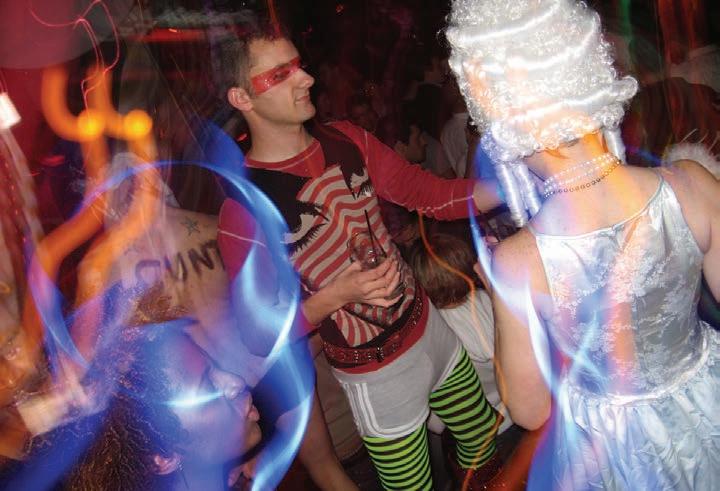
BIPOC and genderqueer audiences who might not feel comfortable at other queer north-side venues—spaces notoriously dominated by cis white gay men. But it wasn’t just older gay men who set their sights on the union.
Berlin’s closure seemed to stoke the flames of conservative business interests that have often fought against the rights of workers. “Berlin has been the target of a devastating strike and aggressive boycott following the unionization of its sta and a series of what would be impossible demands for any small business, let alone one in a trade as fickle as that of a bar,” chided the Chicago Tribune editorial board. “Berlin was a soft target for radical overreach. For many who treasured what Berlin always stood for, for those who relied upon its enigmatic tolerance from the beginning, long before such clubs became cool, there is both sadness and irony in what has occurred.”
Nolan, the labor journalist, says it’s common for companies to tell employees that, if they unionize, it’ll force the business to close.
“But usually, that’s an empty threat. And it doesn’t happen most of the time. Usually, it’s just a scare tactic. [It’s] part of the anti-union playbook.” Bruno, the professor, says no workplace is too small for a union because workers’ interests are different from their employers’. In fact, he says, nonunion studies show small- to moderate-sized employers without trained HR managers are more likely to break labor law than large corporations. “They don’t know that there are certain re-
do we connect as fellow workers? Too often, we don’t connect as other workers having a human experience. We might just make one click and say, ‘Hey, my package arrived.’ [We] don’t [always] think about the kind of abuse it took for a worker to get that done, and how little that worker was paid to get that product on [our] front porch.”
In their statement, Schuman and Webster recount how they took over Berlin three decades ago, after their friend and original venue owner, Tim Sullivan, passed away from AIDS in summer 1994. The iconic venue, opened in 1983, always sought to be a place where people of all races, genders, and socioeconomic backgrounds felt welcome to celebrate life. But it couldn’t continue to operate under the economic uncertainty introduced by the union’s demands.
quirements for lunch breaks or requirements related to what you can have in an evaluation, [like] what questions are appropriate,” Bruno says. “They don’t have an HR department that does a good onboarding. There’s no employee manual.”
From Crotinger’s perspective, Webster and Schuman positioned themselves as “just little guys [who] can’t do all this big o cial [union] stuff.” He thinks Berlin’s owners created a predatory environment for queer workers, who felt a responsibility to protect their peers despite low wages, and toward the patrons, who had to tip generously for the workers to make a living wage. Although the pay was shit and security was constantly at risk of injury from unruly patrons, he says, queer people who patronized the bar weren’t protected if workers didn’t do their job well—and with a sensitivity only they could provide.
Bruno suggests the union, whose demands for fair wages and health insurance were supported by many in the queer community, received so much backlash after the club closed because its patrons were grieving and looking for someone to hold accountable. “But [they’re] not well educated on the role of organized labor,” he adds. They “don’t understand the back-and-forth of how bargaining works.” On top of that, people who attended the club valued it as a safe space. They connected more with the service it provided than the abuse its workers experienced. “It can be hard for all of us,” Bruno says. “When we order on Amazon or buy a car, do we connect as consumers? Or
Saint says Berlin’s ideals shone through on many nights and at many parties. But she says there were plenty of times when competing visions for the club, from the perspectives of management and workers, were at odds. She recalls that the union asked for the club to stock the overdose reversal drug Narcan—and to be trained to use it. Webster and Schuman allegedly refused to do so. They thought having Narcan on-site would be a liability. “There was the desire to have the ideal community space. And then there was the desire to be a business that’s making money,” she says. “And unfortunately, I think these two desires can clash.”
Crotinger says the moments Berlin felt like the ideal community space came from the queer workers and performers who put on adventurous, genderqueer, and BIPOC shows. Adds Saint, “I think the people made Berlin what it was, not Jim and Jo. And at the end of the day, the people who decided to close the club were the owners.” Crotinger thinks, overall, Webster and Schuman’s statement paints the situation in “rosy colored glasses.” They say the owners, who also own property in Michigan, aren’t as closely connected to Berlin’s magic as they claim to be. It’s “nostalgiccore. This whole letter is set 40 years ago, like, the letter is not set in the current day,” Crotinger says.
Still, the hole left by Berlin is felt by all. Adam Leblanc, lead vocalist for Sixteen Candles Band, stumbled upon Berlin in 2004 when he was trying to land a DJ gig. He’s a big vinyl collector, and one of the things he first remembers about the club is hauling a record bag into the venue for a set. He nervously let loose on
14 CHICAGO READER - MAY 2, 2024
Berlin in 2006. GREG HAUS, COURTESY NIGHTSPOTS ARCHIVES
NEWS & POLITICS
The bar’s closure is an apt analogy for queer people who, in their fight for self-determination, face off against a society dominated by cisgender
and
heteronormative ideals.
the decks. It was early on a Monday night. The crowd was sparse. “But I don’t know,” Leblanc tells me. “Berlin was kind enough to let me kind of get my feet wet and kind of find my own identity as a DJ [on] their dance floor.”
He’s now the resident DJ at Beauty Bar in West Town. But back in the early 2000s, he played Prince nights at Berlin, where DJs explored the late artist’s hefty catalog. He also had his own solo show—called L’amour— where he played French electronic and house music. He remembers how you could be on the dance floor “in the middle of it all,” or you could be tucked away at the bar enjoying the music videos that played on the TVs. Schuman and Webster would throw parties for sta and the pair generally made employees feel like family, he says. “It was just such a gathering space. And such an important beacon of light and community and expression in that neighborhood. I’m gonna miss it a whole lot.”
Irregular Girl still has moments when she’s out in Boystown after a show, trying to party and wondering, “Where do I go now?” Berlin was the catchall spot, “just gay people in the room.” It’s that experience she has trouble finding now—but she believes the people who need it will find and re-create it. Occasionally, people will complain to her that they miss the club. She wishes they’d try to move on, like she’s trying to. “We have to find a new space. The bar was four walls full of people who made the experience that you are craving. And [now,] that experience is happening somewhere else.”
Penis Envy, a drag king in Chicago, tells me Berlin was a special place to perform because it was “the home for the freaks” and the “misfit toys.” It’s often more di cult to book well-paying gigs for drag performers whose acts, like his, are more alternative and “weird.” Bar owners want “polished queens” whose appearances adhere to a certain standard of what people think drag should look like, he says. “Steven Johnson doesn’t know what to do when a freaky weirdo comes onstage
covered in slime, who might be hitting the fucking splits and doing a flip and lip-syncing down. It scares the people in charge because they want the dollars.”
In contrast, Penis Envy says, Berlin provided reliable and consistent bookings for alternative drag styles. He thought of it as home, a place he knew his friends would always be and where he could chat and smile with bartenders.
Former Berlin party curators like Irregular Girl now have to find new venues for their shows. Each time, they walk into those rooms with uncertainty. Will the new spot respect drag as Berlin did? Does the venue have a su cient budget for performers and hosts? Is there a good relationship between transgender drag performers and security staff? Do patrons feel safe and seen by their workers? Are the workers tipped generously? Do they feel respected? Irregular Girl says they know bars, restaurants, and theaters are eager to capitalize on drag as it becomes more mainstream—and more profitable. But that doesn’t mean such venues are equipped to treat their new guests, who are mostly queer and trans, with the respect they deserve.
Berlin suffered a tragic, sudden ending.
“The doors are locked. The music is silenced and our dreams are now memories,” reads the club’s last post on Instagram. The owners recall some of the bar’s first advertisements in the early 1980s, which declared Berlin the “Neighborhood Bar of the Future.” “Unfortunately, the future is now and it’s time for us to go home,” they write.
“I think the statement makes it clear that they feel defeated by the future, as opposed to feeling able to be, like, a part of it,” concludes Saint. For Crotinger, Berlin’s magic was on the stage, behind the bar, and on the dance floor. The bar’s closure is an apt analogy for queer people who, in their fight for self-determination, face off against a society dominated by cisgender and heteronormative ideals.
“As queer people, we face great, debilitating losses throughout our lives. But while that magic may not all be contained in the same place anymore, that just gives us more opportunities for more magic to be made in other places.” v
Settler’s Prayer to La Linda Nasca
after Kukuli Velarde
By Amina Kayani
sorrow read past recalls you smiling, every face on your belt dances, sideburn slashed. life was going to be better when we came. yes we’d killed the tigers, collected for weapons their claws, for oil, their jungles. even so, left unsafe, the imperative of flight transformed delayed mourning. between the haven’s gunshots, i ask my one god why they made so much that could be lost—if they too miss multiplicity, populations less than a million. you too, have one and many gods. who does it greet, the hummingbird of your womb, when moss meets the musculature of its talon? does displacement haunt your native tongue, as oil fleeing water or belly fleeing predator, winter, the surrender to another extraction? is this what nasca mothers knew, clearing pebbles and brush, mimetic appreciation for the grand miniature? i ask because of the massacres last night and every night. did anyone watch the superbowl, we were asked in a video call the morning after. we’re still fundraising for esims and going to work, so the man i voted for has 26 billion to drop bombs big as american apathy on the child’s makeshift shelter. i shouldn’t shock. it’s hardly been time since my family, once indian, crossed into your lightning stuck land. not knowing you, la linda, almost maryam, we assumed your children dead. accept my addled grapplings for eroding soil, your body, prophet mother sold at auction. this is the problem with reckoning: past tense. what was sold is not easily bought back. would you return, however violent, i’d worship as nectar bleeding from bloom.
Amina Kayani (she/her) is a queer Muhajir writer, editor, teacher, and ghost-seer from unceded Cherokee and Muscogee land. She is a Lambda Literary fellow, holds an MFA in fiction from Purdue University, and has served as an editor at the Art Institute of Chicago, Sycamore Review, and Kajal. Her writing has appeared in the The Offing, The Kenyon Review, JOYLAND and elsewhere. She lives in Chicago with her spouse. Find her at aminakayani.com or as @diy._.rice on Instagram.
Poem curated by Stuti Sharma. Stuti is a poet, stand up comic, writer, filmmaker, but most importantly, a lover. She grew up on Devon street and the south suburbs. They are a Tin House 2023-2024 Reading Fellow. Stuti will not stop fighting for a Free Palestine and uplifting Palestinian voices & poets.
A biweekly series curated by the Chicago Reader and sponsored by the Poetry Foundation.
Hours
Wednesday & Friday: 11:00 AM–5:00 PM
Thursday: 11:00 AM–7:00 PM Saturday: 11:00 AM–5:00 PM
Kara Walker: Back of Hand
Foregrounding Walker’s long-term engagement with language and text, this exhibition features works completed in 2021 and shown for the first time in Chicago. Open through May 18, 2024.
Learn more at PoetryFoundation.org






MAY 2, 2024 - CHICAGO READER 15
dmbrown@chicagoreader.com
m
NEWS & POLITICS
SOCIAL HOUSING
Out with the old, in with the new
How a $1.25 billion bond proposal could slowly, but undoubtedly, alter Chicago’s housing landscape forever
By JOE ENGLEMAN
Amonth after the years-in-the-making Bring Chicago Home referendum failed to pass during March’s near-record low primary turnout, the City Council voted to approve a $1.25 billion bond issue to fund new and expanded housing and economic development e orts. The bond issue would use the bump in the city’s share of property tax revenue from expiring tax increment financing (TIF) districts to back the bonds.
Whether it was testimony from a who’s who of planning, good government, and a ordable housing nonprofits or the requisite pre-vote speeches from council members, many remarked on the end of an era for Chicago. The city has relied on TIF more than any other U.S. city and, in 2019, almost a quarter of Chicago found itself in a TIF district. More than 40 TIFs will expire in the next few years. But reports of TIF’s complete demise may be premature. Tim Jeffries, Chicago’s managing deputy commissioner of economic development, informed the City Council’s Finance Committee in March that the bond issue “is not the end of TIF.” The city will “strategically” seek to extend some districts in the coming years. But this mass expiration of districts is a chance to “rightsize” the program so TIF is no longer “the first and only resource available.”
Longtime readers of Ben Joravsky won’t be shocked to learn that TIF has its issues. “TIFs function in, frankly, an inherently inequitable manner,” Je ries testified. “The parts of the city that have the highest levels of disinvestment and greatest need receive the least amount of funding.” Bonds do have their own issues, something historian Destin Jenkins details in The Bonds of Inequality, but shifting to bonds would bring Chicago in line with how New York and Los Angeles fund major developments and programs. During the height of the COVID-19 pandemic, the city issued bonds as part of the Chicago Recovery Plan, enabling the Department of Planning and Development (DPD) to fund more projects between 2020 and 2023 than from 2011 to 2019.
The bond issue, approved on April 19, is expected to fund, support, and supplement a range of programs. This includes traditional a ordable housing, a single-room occupancy
Fund—which could become one of the city’s most significant housing programs in decades. Social housing is a catchall term for publicly or community-owned, mixed-income housing where rents remain permanently stable. Vienna, Austria, is home to one of the world’s best-known social housing programs, first established during the Red Vienna period of the 1920s. To this day, more than half of Vienna residents live in publicly owned or subsidized housing, and Viennese housing o cials often host policymakers interested in learning about how they’ve pulled this off. (Coincidentally, Alder Byron Sigcho-Lopez, chair of the Housing and Real Estate Committee, was
“layer cake,” says Rachel Weber, a professor of political economy and development financing at University of Illinois Chicago’s College of Urban Planning and Public A airs. “It’s very rare that the money would just be coming from one source or that the developer would have their own equity to contribute, particularly for larger projects.” That complexity—whether it’s a ordable developers lining up federal tax credits or private developers turning to private equity—raises administrative costs and creates challenges both for private and nonprofit development. “That money does not go into the bricks and mortar. Nothing gets built out of that,” Weber says. “So where’s all that

Chicago could set a national example with its social housing program,
preservation loan program, and a range of e orts to promote homeownership and repair. Funds could also be used to rehabilitate and decarbonize both single-family and multiunit buildings. On the economic development side, the proposal would expand the existing community development grant program, allocate additional funds for job training, and create a new revolving loan fund for small businesses. Unlike TIF, the bond funds can be deployed widely within community-specific targeting and contracting goals.
Tucked inside the city’s proposal is a new $115- to $135-million housing loan program—the Green Social Housing Revolving
in Vienna alongside members of the Illinois Green New Deal Coalition when the bond issue passed.) Here in the U.S., examples of social housing include the Amalgamated Housing Cooperative in New York City, built by the Amalgamated Clothing Workers of America, and, most recently, a revolving loan fund in Montgomery County, Maryland. Montgomery County has become a onestop, low-cost lender and development bank. Its program emerged out of a practical reality where too many development projects weren’t getting o the drawing board—because of the overall cost and the complexity involved in financing the projects. These days, financing is
money going? With leakage, the ine ciencies, and transaction costs, there’s just a tremendous amount of money spent that does not end up building a ordable housing.”
As Zachary Marks, Montgomery County’s real estate chief, told Vox in 2022, the county took a “very capitalist” approach. Officials “commandeered the private American real estate model” by outcompeting the existing, private-sector financing options to produce more housing—housing the county now owns. In some sense, Montgomery County’s approach is a bit like cooperatives; cooperatives operate within capitalism but do so while envisioning more radical approaches.
16 CHICAGO READER - MAY 2, 2024
in the bond issue approved on April 19. THE J. PAUL GETTY MUSEUM, LOS ANGELES
included
Now that the bond issue has passed, it’s Chicago’s turn to take a swing at social housing. The Chicago Department of Housing (CDOH) estimates the loan fund could build 600 new units of housing every five years. Paul Williams, a former CDOH sta er who now heads the Center for Public Enterprise, has become an evangelist for public entities acting like financiers and developers. He noted on Twitter that CDOH’s projection for 600 units every five years is a “conservative estimate.” He expects the city could build twice or three times as many units. Why? The $115 to $135 million proposed would make Chicago’s fund the largest of any U.S. city.
CDOH will still likely need to formalize the program design, which could require further legislation. In a statement to the Reader, Chicago housing commissioner Lissette Castañeda said, “Under the leadership of Mayor Brandon Johnson, the Chicago Department of Housing is working toward bringing a new model of mixed-income, green social housing to Chicago. . . . A green social housing program
in Chicago would be a new way for the City to increase its production of a ordable housing with a focus on mixed-income, environmentally sustainable multifamily homes.”
As program design gets underway in the days ahead, it’ll be worth keeping in mind some of the “tensions” in U.S. social housing identified by sociologists
“The parts of the city that have the highest levels of disinvestment and greatest need receive the least amount of funding.”
Gianpaolo Baiocchi and H. Jacob Carlson. Since social housing comes in a variety of flavors and formulations, it boils down to whether the housing is universal or means-tested, the role tenants play in decision-making, and whether the city maintains a permanent ownership stake or transfers it to another entity. The city
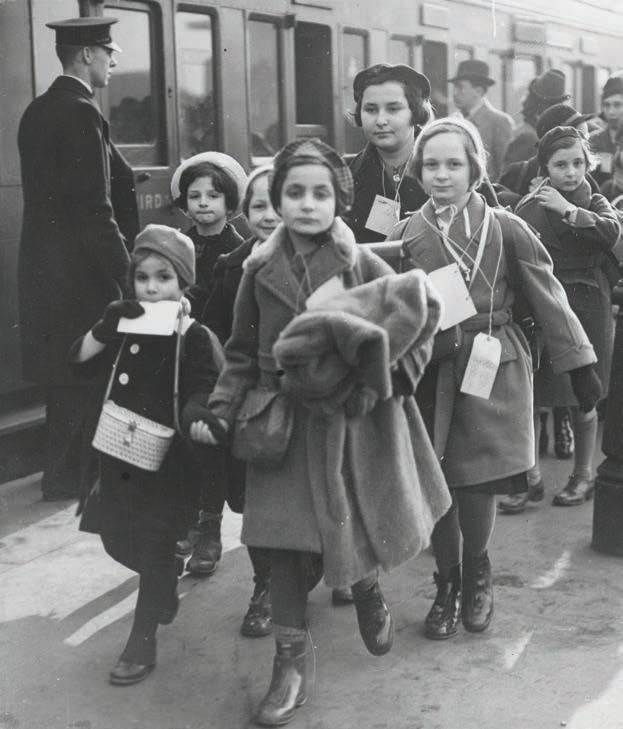
could take a singular approach with every building it funds, or experiment with various visions. Weber says the bond program’s flexibility allows the city to be creative, but she wonders if Chicago has the capacity to act as a developer. “It’s a lot for a local government to take on and absorb more of these aspects of development into the apparatus of the local state.
Even for a city as big as Chicago, particularly after years of austerity, years and years of budget cutting, years of contracting out, years of privatization,” she says. “It’s hard to imagine, but it’s not impossible. And it’s probably a good time to take a look at this totally cumbersome,
unwieldy system, and try to find some more efficient way for the city to interact with nonprofit developers or for the city to take on some of those responsibilities.”
If any city department could succeed at rebuilding public sector power, it might just be the CDOH. During the height of the COVID-19 pandemic, the CDOH took advantage of loose federal guidelines to get rent money directly into tenants’ hands, unlike many municipalities, and launched a right-to-counsel program for tenants facing eviction that’s since become permanent. Should CDOH stand up its social housing fund, it will slowly, but undoubtedly, alter the city’s housing landscape. A proposed social housing bill in New York state is showing signs of upending the traditional growth coalition, and one can’t help but wonder if that could happen here, too. In spite of Bring Chicago Home’s defeat, a lot of future a ordable housing financing is about to be penciled out in City Hall spreadsheets. v
m letters@chicagoreader.com

May 19

MAY 2, 2024 - CHICAGO READER 17 NEWS & POLITICS
Opens
Kindertransport – Rescuing Children on the Brink of War was created and organized by Yeshiva University Museum and the Leo Baeck Institute - New York | Berlin.
Children from a Kindertransport after their arrival in Waterloo Station in London, February 2, 1939 (ÖGZ S 52/11).
ON CULTURE
A new genocide exhibit opens at the Holocaust Museum
It’s not what you’re thinking.
By DEANNA ISAACS
This week, as demonstrations charging Israel with genocide in Gaza ramped up on college campuses across the country, the sta of the Illinois Holocaust Museum was preparing for the May 1 opening of a new permanent exhibit they’d been planning for four years.
Housed in the museum’s towerlike Hall of Reflection, it would be a groundbreaking exposition of its subject, they said. The title: “Voices of Genocide.” The aim: to empower visitors “with the knowledge needed to take a stand to prevent and respond to genocides, mass atrocities, and other human rights violations.” It couldn’t be more timely.
Protesters encamped on Northwestern’s Deering Meadow last weekend were demanding that the university “end partnerships that legitimize genocide,” while University of Chicago students, setting up Monday on the school’s main quadrangle, insisted in their own list of demands that “UChicago divests from the Gaza genocide.”
It’s the word of the moment. But what is genocide, exactly? If you’re wondering, for example, how it differs from the collateral effects of war, this photo, video, and wall text display will be helpful. It’s a quick introduction to the history, causes, and common elements of genocides that have occurred around the globe, along with the warning signs that might be flashed by brewing genocides and suggestions for derailing them. The problem is old, but the concept is relatively new. In 1941, Winston Churchill called it “a crime without a name,” but the name soon followed, coined by Polish lawyer Raphael Lemkin in a 1944 book about Nazi occupation in Europe. Thanks to Lemkin’s e orts, the UN General Assembly declared genocide an international crime in 1946, and in 1948 it unanimously adopted the Genocide Convention, a
human rights treaty that defines genocide as systemic efforts committed with “intent to destroy, in whole or in part, a national, ethnic, racial, or religious group.” The acts are specified as killing, causing serious bodily or mental harm, inflicting deadly living conditions, preventing births, and confiscating children.
Kelley Szany, the Holocaust Museum’s senior vice president of education and exhibitions, says this is the definition used by the museum (adding that there are advocates today arguing for broadening the definition to include other group categories, like, for example, gender and sexual orientation).


“We hope we’re giving you a great space to have those conversations about what’s going on now.”
Twenty genocides are recognized in the exhibit, starting with the one against “native and indigenous populations” in North America (1492 to 1990s), and including the Ukrainian Holodomor (1932-1933) and China’s ongoing persecution of the Uyghurs. But the focus is on just five of them, with survivors or descendants of survivors telling snatches of their own stories on videos that are the heart of the exhibit. Four of them lived through genocides in Bosnia, Guatemala, Burma (Myanmar), and Rwanda, where, for example, Kizito Kalima, a Tutsi, took a machete blow to the head during a massacre and survived by lying bloodied among the dead.
The fifth, Mark Akgulian, is the grandson of four Armenian genocide survivors. He notes, in a video on why the survivors speak, that “the important thing is to be aware of what is going on in the world.”
What you won’t find here, however, is any mention of how it is that Israel, a country born to assuage what was arguably the world’s most notorious genocide, is now accused of being a genocide perpetrator. According to Szany, in an interview last week, that’s because what’s happening in Gaza had not been o cially declared a genocide by the international legal or
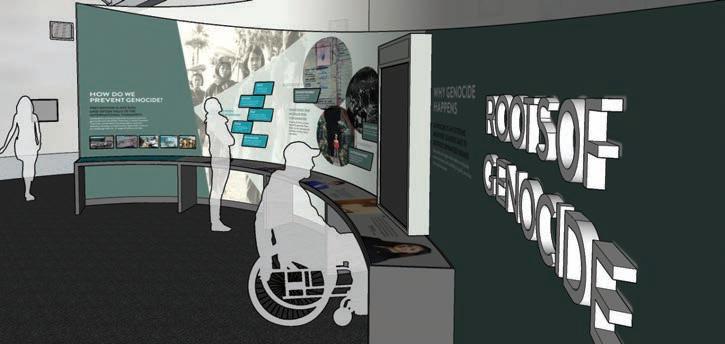
historical authorities. But, Szany adds, “This is exactly the type of conversation we’re hoping our exhibition brings about in our visitors. We hope we’re giving you a great space to have those conversations about what’s going on now.”
(It’s an evolving debate. In January, the International Court of Justice found that it is “plausible” that Israel has committed acts that violate the Genocide Convention.)
On Sunday, the museum issued a statement calling out an “undercurrent of antisemitism within the discourse on the Israel-Hamas conflict.” While “there is nothing antisemitic about supporting the Palestinians’ rights,” the museum wrote, “supporting a movement like Hamas . . . whose aim is to destroy Israel, is antisemitic.”
On Monday, the Northwestern University Divestment Coalition announced a “historic” agreement with the university: the protesters will remove their tents from the campus (though they’ll continue to demonstrate), and, among other concessions, the university will answer questions about its investment holdings, making what the Coalition considers “the first step toward divestment.”
But, “First and foremost,” their statement said, “we want to keep focus on what has brought us together: the call for Palestinian liberation and an end to genocide and ethnic cleansing in Gaza.” v
m disaacs@chicagoreader.com
18 CHICAGO READER - MAY 2, 2024
COMMENTARY
Clockwise from upper le : Rohingya survivor Mohiuddin, Amina (alias), rendering of "Voices of Genocide" ROHINGYA CULTURAL CENTER OF CHICAGO;KATHLEEN HINKEL;ILLINOIS HOLOCAUST MUSEUM
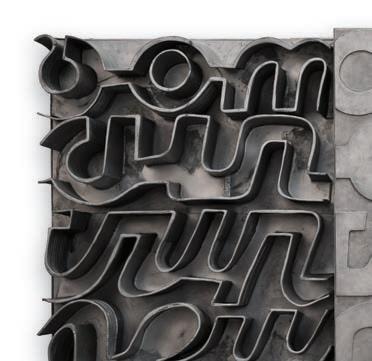
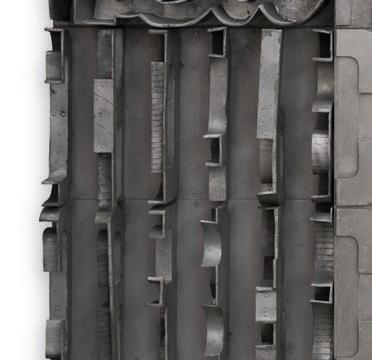



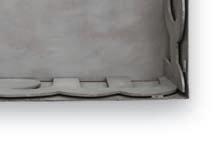
MAY 2, 2024 - CHICAGO READER 19 CHICAGO WRIGHTWOOD MAY 3– JULY 27 wrightwood659.org | advance ticket purchase required Chryssa & New York is co-organized by Dia Art Foundation and the Menil Collection, Houston, in collaboration with Alphawood Foundation at Wrightwood 659, Chicago. IMAGE CREDIT: Chryssa, Americanoom, 1963. © Εstate of Chryssa, National Museum of Contemporary Art Athens. Image courtesy Lowe Art Museum at the University of Miami. Photo: Oriol Tarridas. Chryssa & New York is presented by Alphawood Exhibitions at Wrightwood 659. John Akomfrah: Four Nocturnes is presented by Alphawood Exhibitions at Wrightwood 659. Reimagine: Himalayan Art Now at Wrightwood 659 is made possible by Halsted A&A Foundation. COMING FALL 2024 John Akomfrah: Four Nocturnes Reimagine: Himalayan Art Now Organized by the Rubin Museum of Art Celebrating its 20th Anniversary
ARTS & CULTURE
REVIEW
Mina Loy has finally arrived
Art and archival material at the Arts Club reveal an artist too restless to settle down.
By JOAN ROTHFUSS
Who was Mina Loy? You might know her as a poet and essayist whose work, although difficult and seemingly without parentage, was admired by contemporaries such as Ezra Pound, William Carlos Williams, and Gertrude Stein. If you are a student of Dadaism, you will have seen her name alongside those of her rowdy friends Marcel Duchamp, Francis Picabia, and Man Ray, and her poems and essays in the little magazines they published. Music aficionados might have run across her name in the work of Thurston Moore and Billy Corgan, both of whom were inspired by her poetry to record songs entitled “Mina Loy.”
A rich and fascinating new exhibition at the Arts Club of Chicago aims to show that Loy was much more than a poet and Dada provocateur. “Mina Loy: Strangeness Is Inevitable,” organized by the Bowdoin College Museum of Art, is a remarkable recuperation project that aims to bring Loy’s visual art into the light. Curator Jennifer R. Gross has gathered more than 80 paintings, drawings, and assemblages made over the course of the artist’s life, many of which come from the personal collection of Roger Conover, Loy’s most devoted scholar and editor. Context is provided by dozens of photographs, letters, gallery announcements, and other archival objects—a sort of scrapbook of Loy’s life that is laid out in sinuous, stunningly beautiful display cases. Together, the art and the documents reveal a mercurial artist too restless to settle down physically or artistically.
Loy’s many changes of address are charted by the exhibition, which is arranged chronologically. It begins with photographs of Loy as a child in London during the 1880s. As a young woman, she longed to go to art school and convinced her rather conservative family to send her to the Académie Colarossi in Paris. Several of her drawings and watercolors from this period are on view; particularly beautiful is La Maison en Papier (The Paper House) of 1906, in which two groups of androgynous figures, some clothed in vaguely medieval dress
R“Mina Loy: Strangeness Is Inevitable”
Through 6/8: Tue-Fri, 11 AM-6 PM, Sat 11 AM-3 PM, Arts Club of Chicago, 201 E. Ontario, artsclubchicago.org/exhibit/mina-loy-strangeness-is-inevitable
Loy’s lifetime, but during her years in Florence her equally unconventional poems began appearing in print. When she arrived in New York in 1916, her reputation as something of a badass modernist woman had preceded her. She immediately fell in with the Dada crowd around Duchamp, but also tried her hand at acting and designing lampshades (the latter to earn money), and she continued to publish her writings. The exhibition covers this period
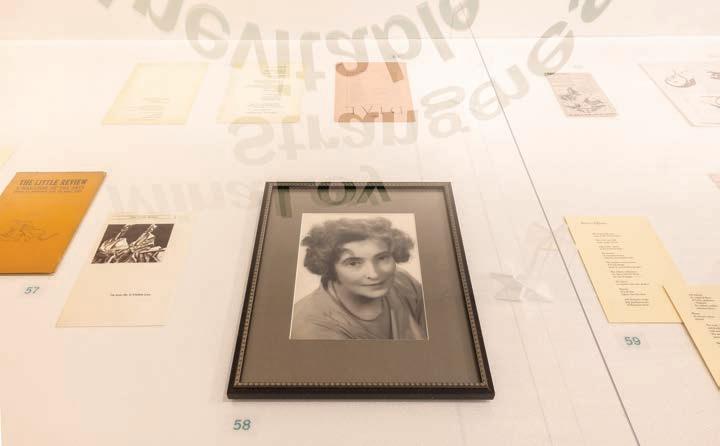
and others nude, attempt to connect through a gridded barrier. Suggestive of both Giotto and Klimt, the work is a remarkable achievement for a 23-year-old and was likely one of the reasons Loy was asked to join the prestigious Salon d’Automne drawing society in 1906.
From Paris, Loy moved to Florence. There she became friends with the eccentric American socialite Mabel Dodge, whose Tuscan villa was a lively gathering place for artists and writers. Her drawing and painting often focused on relationships between women. In the delicate watercolor Fille en robe rouge (Girl in a Red Dress) (1913) a young girl stares impassively at the viewer as another woman (her mother?) gently guides her out of the picture plane. As tender as the scene appears, one is tempted to read it in the context of Loy’s Feminist Manifesto (1914), on view nearby, in which she declares that women, who are in thrall to “the sexual embrace” must demolish the system which labels them either a mistress or a mother. Her radical and still shocking ideas for solving the problem included the mandatory destruction of virginity at puberty. The manifesto was not published during
almost entirely through documentation, either because Loy made very little visual art in New York or because what she made has yet to come to light.
Loy moved back to Paris in 1923. During the next decade she was incredibly productive—by necessity, since she was now a widowed single mother (her second husband, Arthur Cravan, disappeared mysteriously in Mexico and was presumed dead)—but also because her talents flourished in the city’s bohemian milieu. It was there that Contact Press published her first volume of poetry, Lunar Baedecker [sic], and that she produced some of the most startling visual art she had yet made: a group of paintings depicting otherworldly beings communing in a cerulean firmament. With titles such as Stars , Dawn , and The Bewitched , these radiant images gave form to a transcendent spirituality while gesturing toward then-current ideas about energy auras and the so-called astral body. The monochromatic canvases are subtly textured due to Loy’s experimental mixture of sand, gesso, crushed glass, plaster, and pigment.
This work was shown in Loy’s first solo exhibition, held at New York’s Julien Levy Gallery in 1933. Levy dubbed them bleuailles, loosely translated as “halos tinged with blue in the band of light.” They are glorious, but for this writer, the strongest work in the show dates from the late 1940s, when Loy was living in New York’s Bowery neighborhood among indigent, unhoused men. Too poor to buy art materials, she began making collages and assemblages from the detritus she found in the streets. Making art from trash was not a new idea, but Loy’s constructions were disturbingly and utterly original. In Communal Cot (1949), for example, ten figures crafted from cut paper and cloth are arranged on what appear to be paving stones. Whether they are sleeping, drunk, or dead is unclear. What is clear is the loving care with which Loy rendered her homeless neighbors, recycling the very stu that surrounded them in the streets to create their portraits. Communal Cot, along with other constructions made during her Bowery years, was included in her second, and final, solo exhibition, curated in 1959 by Duchamp for New York’s Bodley Gallery. There is much more to see and hear in this important exhibition, whose handsome installation was conceived by Frank J. Mondragón and Alejandro Stein. The display cases they designed fill the gallery’s center space, so upon entering the Arts Club you are drawn immediately into Loy’s life story via archival documents. This also means that the visual art, ostensibly the subject of the show, must be approached by going around the cases. Still, the installation, with its color palette of cool white, deep green, and gleaming black, is enchanting. Rather than clutter the walls with labels, the designers opted to give each object a number, with identifying information contained in a free gallery guide. A beautifully illustrated exhibition catalogue has also been published in conjunction with the show.
Mina Loy spent her creative energies across many spheres. She was at various times a poet, painter, collagist, clothing designer, milliner, gallery owner, inventor, and actor. Today, we are accepting of artists who use any style, medium, or discipline that best serves their purposes, but in her refusal to be contained, Loy was ahead of her time. When she first set foot in the U.S., in 1917, the New York Sun marveled: “This woman is halfway through the door into tomorrow.” With this exhibition, she has finally arrived. v
m letters@chicagoreader.com
20 CHICAGO READER - MAY 2, 2024
Installation view, "Mina Loy: Strangeness Is Inevitable" MICHAEL TROPEA COURTESY THE ARTS CLUB OF CHICAGO
First
Wednesday:
Blues & Beyond Jam with Kenny “Beedy Eyes” Smith
Wed, May 1 & Wed, Jun 5 • 7:30–9:30pm • Café Logan
These sessions, helmed by drummer Kenny “Beedy Eyes” Smith, bring together some of Chicago’s best next-generation blues musicians for each monthly House band to explore the blues and its many connections to other musical forms. Jam sessions are FREE for musicians of all levels and for audience members. Attendees are encouraged to purchase beverages and bites from the Café and consider a donation to support the continuation of the Logan Center’s Blues programming.
Musicians sign-up to jam: logancenter.uchicago.edu/blues boxo ce@uchicago.edu • 773.702.ARTS (2787) @loganUChicago

MAY 2, 2024 - CHICAGO READER 21 BLUES@LOGAN CENTER
The Logan Center’s Blues programming is made possible with the generous support of The Jonathan Logan Family Foundation with additional support provided by friends of the Logan Center. Below: Kenny Smith. Photo courtesy of artist. Logan Center for the Arts 915 E 60th St • Chicago • Free parking
ARTS & CULTURE
RWE ARE THE CULTURE: BLACK CHICAGO’S INFLUENCE ON EVERYTHING BY ARIONNE NETTLES Chicago Review Press, hardcover, 224 pp., $28 99, ipgbook.com/we-are-the-culture-products-9781641608305.php
 Author Arionne Nettles AJAH JOLLY
Author Arionne Nettles AJAH JOLLY
CHICAGO HISTORY
‘Chicago
is in my DNA’
The debut book by Arionne Nettles weaves her personal memories into the legacy of Black Chicagoans.
By EMILY MCCLANATHAN
The phrase “love letter” is often overused in reviews, but when author Arionne Nettles calls her new book “a love letter to the city that raised me,” it’s entirely fitting. In We Are the Culture: Black Chicago’s Influence on Everything , Nettles weaves her personal memories of growing up in Chicago with reporting and historical research about the legacy of Black Chicagoans in media, music, fashion, art, sports, and more. With bite-size chapters that display a journalist’s knack for writing engaging nonfiction, this book is an illuminating read for anyone interested in Black American, Chicago, or pop culture history.
A culture reporter who has worked for WBEZ, the Associated Press, and the Chicago Defender, Nettles is currently a lecturer and the director of audio journalism programming at Northwestern University’s Medill School of Journalism. She is also a proud lifelong Chicagoan, and this perspective is essential to We Are the Culture
“Chicago is in my DNA,” she writes. “And when a city is part of your identity, it means something different. It means you’re very
“When we know what Black people had to go through to accomplish such amazing feats, our contributions become even more remarkable: how courageous it is to still write after receiving threats; how monumental it is to create a film with Black people and for Black people that focuses on Black joy; how amazing it is to demand that the world’s top designers include Black models in their shows,” she writes. Digging into these contributions in vivid detail, Nettles is no mere cheerleader but brings the receipts to back up her claims about Black Chicago’s national and global influence. Take Chicago sports. The chapter titled “Be Like Mike” explores the massive economic impact of Michael Jordan’s endorsements and brand partnerships, the most famous being the ubiquitous Air Jordan shoe. In another chapter, Nettles writes about the popularity of the black-and-white White Sox cap in hip-hop and rap culture.
building that opened in 1972—exemplified Black excellence.
Of course, no cultural history of Black Chicago could overlook its influence on music. We Are the Culture was literally written to the soundtrack of Black artists; the author notes which songs she listened to while writing the introductory essay to each section. With the caveat that a single book couldn’t possibly cover such a vast topic, Nettles traces the development of blues, house music, and drill, as well as the rise of Black radio personalities.
RWE ARE THE CULTURE BOOK TALK Mon 5/ 13, 7 PM, Call & Response Books, 1390 E. Hyde Park, RSVP at callandresponsechi.com/ events-arionne-nettles, free
much invested in that city’s story, how it’s told, and who’s doing the telling. And when it comes to what makes Chicago Chicago , I’ve never felt that story was shared enough here— let alone with the rest of the world.”
The book is organized into sections that focus on a particular art form or aspect of pop culture, and Nettles introduces each topic with a personal essay on how it has intersected with her own experiences or family history.
For example, she opens the section on the creation of the Chicago Defender by recounting how her grandmother, known by her family as Bea Ma, escaped a lynching as a teenager in Greenwood, Mississippi, and built a new life in Chicago during the Great Migration. In Nettles’s telling, the shadow of slavery and Jim Crow lends important context to the story of Black cultural achievement.
“When it comes to what makes Chicago Chicago, I’ve never felt that story was shared enough.”
Several sections cover the broad range of Black Chicagoans’ impact in movies and television, from the little-known history of Blackmade silent films and westerns to the unprecedented success of Soul Train and The Oprah Winfrey Show. “For me, the most memorable part of the [Oprah Winfrey] show is the feeling that it gave me whenever I saw joy, or when I was encouraged to give to causes I cared about, or even when I simply was challenged to think of something di erent,” she reflects. Nettles also devotes significant attention to print media. Beginning with trailblazing journalists of the late 19th and early 20th centuries such as Ida B. Wells, Ferdinand Lee Barnett, and Robert Sengstacke Abbott, she traces how Black-owned newspapers became the voice of Black America in their day and provided invaluable historical records of tumultuous periods such as the Red Summer of 1919. I was especially fascinated by the chapters about the Johnson Publishing Company, which launched Negro Digest (later Black World ), Ebony , and Jet magazines in the 1940s and ’50s. “The city has always been a place where Black voices are amplified, but JPC’s creation of glossy print magazines elevated the Black perspective and gave us gorgeous Black faces to match,” Nettles writes. As she notes, even the architecture and decor of the company’s glamorous headquarters—a “gold and groovy”
In one touching anecdote, she recalls how footworking, a Chicago style of dancing to house music, helped her feel connected to home as a freshman on the campus of Florida A&M University in 2003. “House music, in its essence, is a music that makes you feel free,” she writes. “House is a unifier. It brings people together.”
Following in the footsteps of earlier generations of journalists who documented Black Chicago, Nettles has crafted a thoroughly researched and deeply personal contribution to the literature about her beloved city. She is keenly aware of the ancestors on whose shoulders she stands and expresses a desire to pay it forward in her epilogue, which is all about the promise of Black Chicago youth. Looking to the past, she hopes to build an even more beautiful future for her son—to whom she dedicates the book—and the next generation of Chicagoans. v
m letters@chicagoreader.com
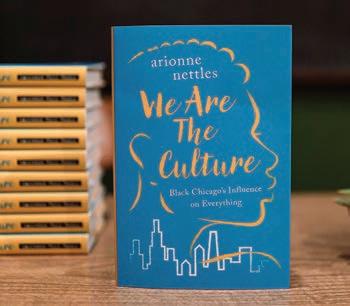
22 CHICAGO READER - MAY 2, 2024
AJAH JOLLY


RSensing wood, sculpting ecology
The cra -centered practice of artist and furniture maker Galen OdellSmedley
By NICKY NI
Last summer, Galen Odell-Smedley opened a solo show, “Peach Peach,” at Humboldt Park’s Ignition Project Space. The exhibition hinted at a meticulously arranged artist’s woodshop: What we normally consider raw material, waste material, and tools came to the foreground in intricate attire and partied with other elaborate kinetic sculptures.
It was hard to define what purpose each object served in a sprawling installation where there was no distinguishing art from artifact. Many items were functional, like the state-of-the-art table that majestically sat in the middle of the space, with its irregular, multicolored top composed of chunks of white ash still reminiscent of their tree form; its surface showed burrows scarred by the emerald ash borer, the notorious beetle threatening the existence of white ash in North America—and the future of baseball bats. Other objects exchanged inside jokes with the artist. Untitled (Bending Forms) were, quite literally, bending forms that would be woodworking jigs in another context. But, in that time and space, they chilled by the wall as artwork. When I reached out to Odell-Smedley for this column, I said I was interested in his blurring the line between art and craft. “This boundary-emphasizing idea always strikes me as odd,” he says when we met, “because it’s not a conversation that I was aware of when I started to pursue a practice that would seem to align with art and craft. I didn’t realize that these approaches might be viewed as distinct
in the first place, and I don’t find it particularly useful to separate them now.”
Since he entered SAIC’s MFA sculpture program in 2016, Odell-Smedley has produced a body of work conceptually astute and impeccably fabricated. Studio practice for Odell-Smedley is an active process of learning and understanding the fundamental materials and the long craft histories behind them. This continued journey of learning and making has transformed his view of what art is and what its social roles are: that we should shift the focus away from the commodified or presentable product, which we call artwork, to its networked process of becoming, which relies on social participation and natural resources. To think of art socially and ecologically is to flatten the hierarchies that exist in our preconceptions.
Growing up in a family of musicians, Odell-Smedley had access to musical instruments; he studied jazz trumpet through college. His attentiveness to sound extends beyond music to his studio. In “Peach Peach,” on the ash table, there was a foil-covered beaker sitting on a homemade magnetic stirrer. The stirrer was mixing shellac and emitting a warm and comforting white noise. “I’ve been trying to address sound and listening much more in my practice, both in terms of literally making sound works and trying to understand material processes through the sounds they produce,” he says. He told me that certain wood would make a particular sound when cut by a very sharp blade. To attune oneself to the
ARTS & CULTURE

material at hand is to understand how to interpret the pitch and timbre of the vibrations, as though learning an intimate language spoken between metal and wood. For Odell-Smedley, auditory sensing is itself an accurate and efficient way of measuring, a process that embodies a kind of knowledge that resists verbalization or quantitative analysis.
But his exploration of the senses through sculpture doesn’t end at sound; there is also a vast olfactory landscape. “African Mahogany can give off a fresh and pungent smell with notes of cinnamon and allspice, that is if you cut it slowly with a handsaw,” he says. “If you use a machine, the heat turns the fragrance into a burnt, toasted spice version.”
Having worked as a bartender and trained in wine tasting, he has come to understand that the di erent “professions” he has worked are but parts of one big continuum. “Even when I was bartending, I approached ingredients and process with the same attentiveness that I bring to my studio practice,” he says. This is reflected in his performance Revolutions, Interchanges, Markers , the first iteration of which took place at Links Hall in 2017. He wore a white shirt, with sleeves rolled up, and a black tie, and he sat at a potter’s wheel behind a long cocktail bar and served participants clay wares; the various shapes and forms— and sometimes unexpected characteristics— were a result of the conversation he had with the participant while making what he called “empathetic clay objects.” The performance is less about materializing presence or intimacy than pointing to undefined factors that, to our unawareness, tie us to a greater network of things. They affect us—our bodies—in ways more complex than what we tend to stiffly describe as causality. Odell-Smedley’s performance highlights this complexity by transferring more autonomy to the body; the body makes decisions, with or despite the mind. Last summer, when I visited his solo exhibi-
tion, what was supposed to be a walk-through with the artist grew into an explosively informative master class on wood literacy and appreciation. For the base of the sculpture Untitled (Breather), (which is also humorously a doorbell), the artist sliced up a piece of white ash lumber, spread the slices out like a deck of cards, and glued them together. The pattern of the tree rings thus repeats across the surface. The science of dendrochronology, which has helped scientists and historians date historic events, is poetically alluded to as OdellSmedley lays bare the beauty of the wood grain and lets us consider how it can speak as an archive that stores histories of its environ. Given his proximity to wood and wood production, Odell-Smedley’s interest in sustainable forestry isn’t far-fetched. It isn’t sustainability, as he would correct me, but regeneration that we should delve into. As of 2021, according to Our World in Data, about 13 percent of the deforestation worldwide was caused by logging, as opposed to 41 percent by beef production. “If you harvest the forest with a plan for it to regenerate, the forest has the potential to take care of itself much more e ectively than humans replanting trees,” he says. And more resiliently too, as confirmed by essayist Claire Cameron in a NYT opinion piece that notes that artificial replanting of an arboreal monoculture puts the forest more at risk of wildfire.
Today, Odell-Smedley works full-time building furniture and teaching ceramics and printmaking at the Hyde Park Art Center. Building science is his latest fascination, as he is renovating his newly purchased 140-year-old home. “It’s really interesting to recognize that you’re one of many people who have taken care of—or not taken care of—this building,” he says. “I do feel like I’m engaged in a larger artwork whose timeline spans much more than a single human lifetime.” v
m letters@chicagoreader.com
MAY 2, 2024 - CHICAGO READER 23
CRAFT WORK
GALEN ODELL-SMEDLEY galenodellsmedley.com
instagram.com/galen.os
COURTESY THE ARTIST AND NEW BLOOD
L-R: en- Chime at Terrain Biennial; from Revolutions, Interchanges, Markers performance; “Peach Peach” at Ignition Project Space
R H OW I LEARNED WHAT I LEARNED
Through 5/5: Wed 1 and 7 PM, Thu 7 PM, Fri 7:30 PM, Sat 2 and 7:30 PM, Sun 1 PM; Broadway Playhouse, 175 E. Chestnut, broadwayinchicago.com, $42-$92
REVIEW
Lessons from August Wilson
How I Learned What I Learned and Joe Turner’s Come and Gone create “an exquisite time capsule” of the late playwright’s worlds.
By SHERI FLANDERS
In an embarrassment of riches, two impeccable renditions of August Wilson’s plays share space in the Chicago theater community this spring: How I Learned What I Learned, produced by Congo Square Theatre, in association with Broadway in Chicago and staged at the Broadway Playhouse, and Joe Turner’s Come and Gone at the Goodman Theatre (the first theater in the world to have produced Wilson’s ten-play Century Cycle
of becoming an artist through the crucible of racism, poverty, and the healing hands of community.
Assembled in a series of poetic monologues on di erent subjects, Lennix as Wilson walks us through the moments that forge the measure of a man. Lennix is the epitome of gravitas, commanding the wit and cocky swagger of an impetuous younger man. If his portrayal is lacking anything, it might be that the confluence of
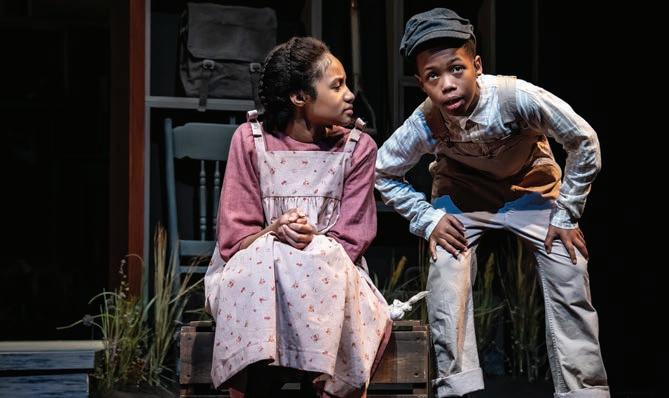
in its entirety). Individually, each play is a masterpiece. In conversation with each other, they create an exquisite time capsule of Black American community, beginning with the struggles at the turn of the 20th century and culminating in a lush portrait of a singular and prolific Black artist—Wilson himself.
Originally written and performed by Wilson in 2003, How I Learned What I Learned is a hilarious and riveting memoir of the playwright’s formative creative years. Meeting the challenge of filling Wilson’s erudite shoes is the renowned actor Harry Lennix (star of The Five Heartbeats, DC Extended Universe, King Hedley II , and most recently, Branden Jacobs-Jenkins’s family drama Purpose at Steppenwolf). He embodies Wilson’s process
RJOE TURNER’S COME AND GONE
Through 5/19: Wed 7:30 PM, Thu 2 and 7:30 PM, Fri 7:30 PM, Sat 2 and 7:30 PM, Sun 2 PM; Thu 5/16 7:30 PM only; ASL interpretation Fri 5/10, touch tour/audio description Sat 5/11 2 PM (touch tour 12:30 PM), Spanish subtitles Sat 5/11 7:30 PM, open captions Sun 5/12; Goodman Theatre, 170 N. Dearborn, 312-443-3800, goodmantheatre.org, $35-$90
beautifully poignant meditation on maturing through the lens of one of the most creative voices of a generation.
The second play chronologically in Wilson’s Century Cycle, Joe Turner’s Come and Gone is set at the end of Jim Crow, leading into the Great Migration, and concerns itself with a revolving door of visitors at a Pittsburgh boardinghouse. Quick and witty, the sophisticated narrative follows those who walk through devastating trauma and rediscover themselves on the other side. In this piece, Wilson explores the desperate craving for connection in the midst of emotional devastation, and the journey toward spiritual transcendence over impossible circumstances.
A master class on the power of ensemble, the impeccable timing of this powerhouse cast deftly navigates the complex crests and falls of Wilson’s emotionally layered text, bubbling
most poignant during an absolutely haunting and cathartic scene that evokes echoes of the Middle Passage. This moment is amplified by a perfect confluence of outstanding lighting, set, and sound design by Jared Gooding, Linda Buchanan, and Pornchanok Kanchanabanca, respectively. Smith’s presence anchors the swirling orchestrated chaos steadily, like the silent eye of a deadly vortex that threatens to consume even existence.
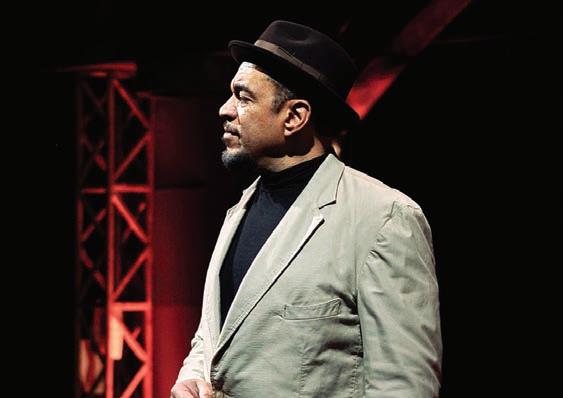
his formidable presence, along with the slightly rushed pacing, doesn’t allow time for him to sink fully into the gentler, fragile moments. But director Ken-Matt Martin still shapes the individual remembrances into a cohesive whole.
Each moment in his life is a learning experience. When the young Wilson decides whether or not to trade his respect for wages, it is revealed that his youthful pride can be both folly and strength. When a friend’s humbling secret is revealed, it illuminates how ingenuity can be borne of necessity. When chasing love and confronted with death, both his mettle and desire are challenged in ways he could have never expected. With poetic language that trips liltingly o the tongue like the jazz of the era, How I Learned What I Learned is a
with jubilance one moment, and caught in the riptide of grief the next. Dexter Zollicoffer steals the show as Seth Holly, the hilariously persnickety gossip and house manager who struggles to keep order over this motley crew. TayLar matches Zollico er pound for pound as Bertha Holly, returning every one of his zingers with an extra twist.
The indomitable A.C. Smith (previously seen in Wilson’s Gem of the Ocean and Two Trains Running at the Goodman and a Jeff Award winner for both Fences and King Hedley II at Court) soberly inhabits the aptly named Herald Loomis, his arrival an ominous harbinger of existential dread that weighs heavy with the blind anger of regret. Smith’s profoundly vulnerable portrayal of Loomis is
Tim Edward Rhoze (artistic director of Evanston’s Fleetwood-Jourdain Theatre) o ers a grounded and quirky take on Bynum Walker, the local voodoo practitioner. In some ways, his belief in the supernatural is easily a more plausible system than faith in survival after the failures of Reconstruction. Nambi E. Kelley is delightfully vulnerable as the earnest Mattie Campbell, a woman chasing the past to avoid facing her future. Krystel V. McNeil serves up an achingly proud Molly Cunningham, a woman who does what she must to survive—so she might as well enjoy it a little! Shariba Rivers o ers a deft touch as Martha Loomis, a woman for whom there are no correct choices. In a delightful treat, young actors Kylah Renee Jones and Harper Anthony make their Goodman debut, playing Zonia Loomis and Reuben Mercer, two children creating their own understanding of a flawed world and mercifully unburdened by the enormous baggage of the adults surrounding them.
Gary Houston serves up a jolly performance as the a able Rutherford Selig, the lone white character in the play. His inclusion in the narrative could initially be viewed as a throwaway plot device by Wilson, but Selig’s unassuming presence represents the unyielding tension inherent in Black America’s immense grace under the necessity of moving forward in community with whites despite the lack of healing—or safety. A meditation on our collective human inheritance of ghosts and legacy of unhealed wounds, Joe Turner’s Come and Gone is one of America’s most powerful theatrical works, wholly realized in its greatness by director Chuck Smith. v
m letters@chicagoreader.com
24 CHICAGO READER - MAY 2, 2024
THEATER
Joe Turner’s Come and Gone (le ); Harry Lennix in How I Learned What I Learned LIZ LAUREN; COURTESY CONGO SQUARE THEATRE



A journey of self-discovery leads to salvation in this major revival of the Pulitzer Prize-winner’s masterwork.
On the heels of Gem of the Ocean (2022), expert August Wilson interpreter Chuck Smith revives the second work in the famed American Century Cycle—one of Wilson’s best-loved, most compelling plays. Herald Loomis searches the country with his young daughter to find his estranged wife. But first, he must regain a sense of his own heritage and identity in this story of spiritual and emotional resurrection.


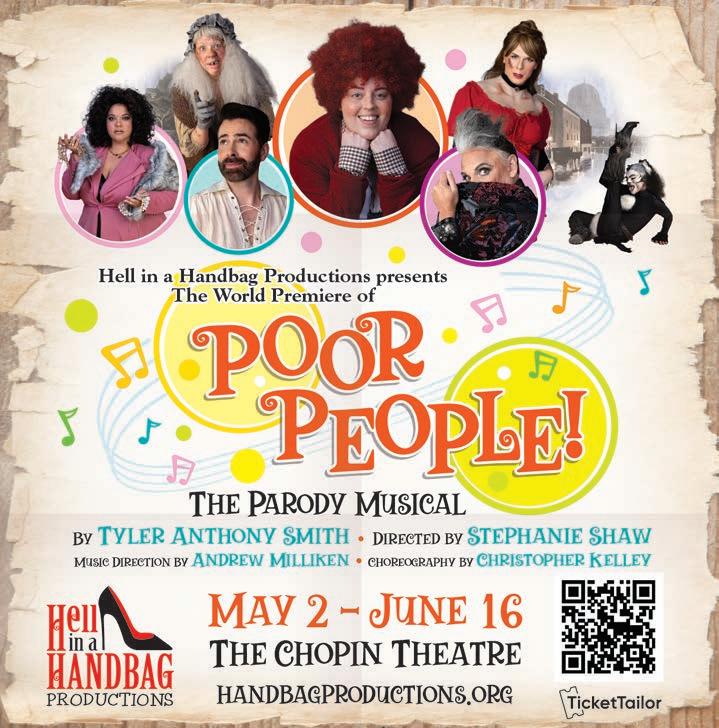
MAY 2, 2024 - CHICAGO READER 25 Lead Funder of IDEAA Programming GoodmanTheatre.org | 312.443.3800 Groups 10+: Groups@GoodmanTheatre.org
EXTENDED BY POPULAR DEMAND THROUGH MAY 19!
RISING STAR
Evan Mills sets his sights for LA
The Second City star plans a move—but first, he’s giving other AAPI comedy artists a boost.
By KERRY REID
Every year, comedy hopefuls swarm into Chicago, hoping to find a place in classes at Second City that might lead to performing at Second City e.t.c. or the mainstage—the legendary launching pad to Saturday Night Live and stardom in other television and film projects. That possibility is embodied by the photos of past Second City stars hanging on the theater lobby walls—tantalizing reminders of what could be if you play your cards, or scenes, just right.
Evan Mills wasn’t one of those hopefuls. He came to Chicago from his native Michigan to study film at Columbia College. He found a circuitous but fortuitous route to Second City stardom that bypassed the usual Second City Training Center ladder.
But the actor, who describes himself on his YouTube channel (and in at least one Second City sketch that I’ve seen) as a “gay, half-Filipino, left-handed only child,” seems poised to be a breakout star on his own. After performing in three mainstage revues with Second City (winning rapturous reviews along the way, as well as a 2023 Je Award for best performer in a revue for Don’t Quit Your Daydream), Mills is getting ready to pack his bags and head for LA later this year. But first,
he’s giving a leg up to other Asian American performers by directing the Victor Wong Fellowship showcase, Youth In Asia (Are You Proud Of Me Yet?).
The Victor Wong Fellowship, which focuses on developing AAPI talent, o ers performers and writers a tuition-free “master’s program in improv comedy.” Named after Second City’s first Asian American performer (Wong, who died in 2001 at 74, also worked as a journalist and had many film credits, including 1987’s The Last Emperor), the Wong Fellowship program started last year. It’s funded by the family foundation of Peng Zhao, CEO of Citadel Securities. Jonald Reyes serves as the Victor Wong Fellowship program lead. Mills, 33, took a host job at Second City in 2012 because he was looking for a place that sounded “artsy, or a theater, or something.”
He started out seating patrons in the mainstage theater.
On his first night, Mills recalls, “My trainer was like, ‘OK, just stand here and watch the show and just kind of absorb like what your job is gonna be.’ And I remember my very first night seeing Tim Baltz and Mary Sohn and this incredible group of performers. And I truly remember saying to myself, ‘One, how do I do that? And two, I’m going to do that.’”

Over the course of three years as a host and then bartender, Mills gave himself a grounding in the fundamentals of improv and sketch comedy. “It was a beautiful self-teaching thing that I did where I got to watch the same show over and over again, and be like, ‘Oh, OK. So they do that di erently when the audience is like this.’”
Mills started working with a friend as part of a comedy music duo out-
side of Second City and eventually was offered a Bob Curry Fellowship, a program launched in 2014 focused on fostering BIPOC artists at Second City and named after their first Black performer. Around the same time he received the Curry Fellowship, Mills auditioned and was accepted into the Conservatory program in the Training Center. An instructor told him that if he did the Curry program, it probably wasn’t necessary to do the entire Conservatory training.
YOUTH IN ASIA (ARE YOU PROUD OF ME YET?) 5/7-5/28 : Tue 8 PM, UP Comedy Club, 230 W. North, 312-337-3992 , secondcity.com, $10

“It’s like a condensed conservatory,” says Mills. “I believe [my program] was three months, and the first two months were workshops in improv and sketch and writing. And then the last month was putting together our own hybrid show of archival material and original material.”
From there, Mills performed with Second City at the Kennedy Center, worked on a Second City touring company, and then joined the mainstage cast (post–pandemic shutdown) in Together At Last. He also cocreated Queer Eye: The Musical Parody , which ran at the Playground in 2019 and then at Second City’s UP Comedy Club in 2022.
Mills’s work at Second City consistently hits the sweet spot between goofball cerebral (as in a sketch where he’s a pretentious beret-sporting extra from any and every movie you could possibly name) and loose-limbed physicality. I ask him if his rubbery moves owe anything to dance or yoga training: “I genuinely think it was something I was born with. I didn’t do any dance classes. I didn’t do any vocal training classes. The only thing I trained on [as a child] was piano.” He credits his gift for physical comedy to observing performers like Jim Carrey.
He adds, “I’m an only child with divorced parents, and my dad is also gay. So l lived in a household where it was just me and my mom. Instead of going out on weekends with my friends, my mom would take me to Family Video. We’d rent six movies and I would just study them.”
Peter Kim, a past AAPI performer at Second City, went public about the racism he experienced from audiences (and lack of support from management) in a 2016 Chicago magazine article. Mills notes, “Before I got on mainstage—I’m not a hundred percent sure on this number—but I’m pretty sure from like 2012 to 2022, there have been four Asian performers on mainstage and e.t.c.” (Mills and fellow Filipino American Jordan Savusa both made it to mainstage in 2021’s Together at Last.) But he feels like things have been improving at the comedy institution for AAPI performers and others from marginalized communities.
“I see Second City only moving forward,” he says. “I see them listening. I see them taking in what we o er and what we bring them. And I do feel like personally, I was able to use my platform and have a voice for all of those who, quote, unquote, didn’t have a voice.”
What’s next for this gay, half-Filipino, left-handed only child?
“The dream for LA is, I would love to work for RuPaul and work on Drag Race,” says Mills. “Listen, those sketches have to be written by someone. Those are things that I love to do, and those are things that are right up my alley. So like, writing a musical, writing sketches, writing roasts—I think working on Drag Race, or for RuPaul in general, is like the ultimate dream.” v
m kreid@chicagoreader.com
26 CHICAGO READER - MAY 2, 2024 THEATER Mills onstage at Second City TIMOTHY M. SCHMIDT
Evan Mills CARTER WRIGHT









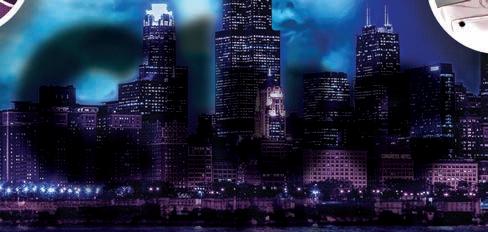

































This smash Off-Broadway hit and Obie Award-winning “rich new play, contemplative and comic” (New York Times‘ Critics’ Pick) makes its Chicago premiere.
“English Only.” Four adult students in Karaj, Iran are studying for the Test of English as a Foreign Language—the key to their green card, medical school admission or family reunification. Chasing fluency through a maze of word games, listening exercises and show-andtell sessions, they hope that one day, English will make them whole. But it might be splitting them each in half. MAY 10 - JUNE 9


haunting
of climate change, migration, and family in the days leading up to an infamous dust storm in 1930s Texas $5 OFF with code READER5 Some restrictions may apply PERFORMANCES START MAY 8! 615 W. Wellington Avenue (at Broadway), Chicago 773.281.8463 timelinetheatre.com TICKETS ON SALE MONDAY, MAY 6TH AT 10AM! ©2024 Hasbro. All rights reserved. Get Tickets at: ClueWalkingExperience.com The Mystery Continues This Summer! ® June 13 – September 15
A
story
THEATER
OPENING
RA gripping Hamlet
Red Theater’s stripped-down Shakespeare is moving and relatable.
A tormented young man is visited by the ghost of his recently slain father, who asks the son to avenge his death at the hands of his own brother—who, to add insult to injury, has taken his job and married his wife (the young man’s mother). The son has friends and enemies but mostly battles with himself about what he should do. It doesn’t end well for anyone involved.
Anyone who has watched TV or gone to the movies or read novels knows some version of this story and yet, stripped down to the Bard’s immortal words, delivered by a stellar cast in this Red Theater production with nary an embellishment, it is still impossibly moving and relatable. I was surprised to find I knew nearly every other line but was still o en le in tears. It would be unfair to highlight standouts among the actors because this kind of magic only happens through communal effort. The nearly bare set by Rose Johnson and costumes by Madeline Felauer—which are inspired by several different centuries’ dress yet are somehow coherent and contemporary—allow the cast to shine. Director Wyatt Kent’s choice to stage the play in the round puts the audience uncomfortably close to the action, where it’s almost impossible to feel uninvolved. It’s a true accomplishment to make


this ageless text feel just written, but this production somehow pulls it off. I was on the edge of my seat the entire three hours even as I knew every twist and turn to come. —DMITRY SAMAROV HAMLET Through 5/19: Mon and Thu-Sat 7:30 PM, Sun 3 PM; also Wed 5/15 7:30 PM; the Edge Off Broadway, 1133 W. Catalpa, redtheater.org, $25. Limited number of $10 access tickets available for “students, artists, or anyone on a tight budget.”
RGoofs, glorious goofs
Annoyance’s Little Orphan Boy is stupid done smart.
Could you call Chris Dritsas’s and Zach Hacker’s musical comedy a parody? They probably wouldn’t fight you on it, but I might—the gags, send-ups, and compositions here (music by John Love) are just too original and clever to be confused with rote, overt spoofs like Forbidden Broadway. Rather, Little Orphan Boy is a parody in the loosest sense—the improv sense–of lopping off a few favorite tropes from canon shows like Annie and Oliver!, then letting them grow into their own absurdist creations.
A lollipop dandy boy (Dritsas) is separated from his Mum (Beth Nelson) a er their transatlantic ship collides with an iceberg. Lost and alone in a version of New York inexplicably filled with British bobbies (Charlie Thompson) and sooty street urchins, the Little Lad adventures


through the city while evading a child-murder-fixated Ratcatcher (Sage Huston).
My brain will never not be tickled by trite, earnestly sung counterfactuals like “everyone’s an orphan,” or recurring cartoony bits like Thompson barging into scenes yelling “What’s all dis, den?” and “You blew it up! Ahhh, damn you!” at any mention of the Statue of Liberty. There’s a good mix of running gags (Dritsas’s pouty song about being cold) as well as jokes that hit you right between the eyes (a New Yorker chasing a slipped reference to the Twin Towers with “fuhgettaboutit,” followed by an even quicker “Wait! No! Never fuhgettaboutit!”)
Annoyance Theatre is singular in its tradition of stupid-things-done-smart and, for all its silliness, there’s a refinement to the jokes and songs here that only comes from a true love of the material and a dozen comics who all bring something to the table.
—DAN JAKES LITTLE ORPHAN BOY: THE MUSICAL!
Through 5/25: Sat 6:30 PM; Annoyance Theatre, 851 W. Belmont, 773-697-9693, theannoyance.com, $25
RRitual and realism
Warm on the Coolin’ Board returns to MPAACT.
MPAACT resident writer Shepsu Aakhu does something remarkable in this gentle, metaphysical play.
He creates a world that successfully blends ritual and realism without succumbing to the weaknesses of either ungrounded otherworldliness or mind-numbing mundanity. Instead, Aakhu gives us a play that reveals the spiritual power in everyday life. Based in part on the Burr Oak Cemetery scandal of 2009, in which employees of the cemetery were accused of digging up bodies and reselling burial plots, the play explores two generations of Black Chicagoans: a beloved mother, now in the next world, awakened from a kind of eternal rest by the illegal disturbing of her remains, and her two sons, one hardworking and practical, the other young, foolish, and about to make mistakes his older brother wants him to avoid.
The two worlds were always entwined, Aakhu’s play argues, but the crisis at Burr Oak has made relations between dead and living fraught. First produced in 2013, this revival, ably directed by Lauren “LL” Lundy and packed with talented, powerful, sensitive actors, does Aakhu’s work proud. Kendall Mallett and Rich Oliver are utterly convincing as the two brothers at the center of the play, while Melanie Victoria stands out as their mother, Penelope, a woman compelled by outside forces to wander, rootless in the world—as powerful a metaphor for the ongoing African diaspora as I can think of.
—JACK HELBIG WARM ON THE COOLIN’ BOARD Through 6/2: Thu-Sat 8 PM, Sun 3 PM; Greenhouse Theater Center, 2257 N. Lincoln, 773-404-7336, mpaact.org, $42 v
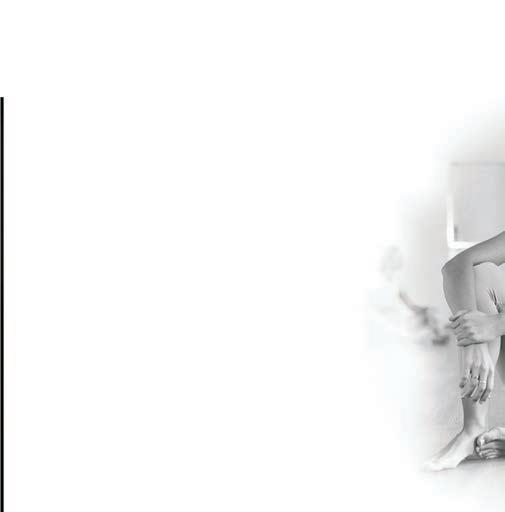




28 CHICAGO READER - MAY 2, 2024
SERIES: Of Joy
SPRING

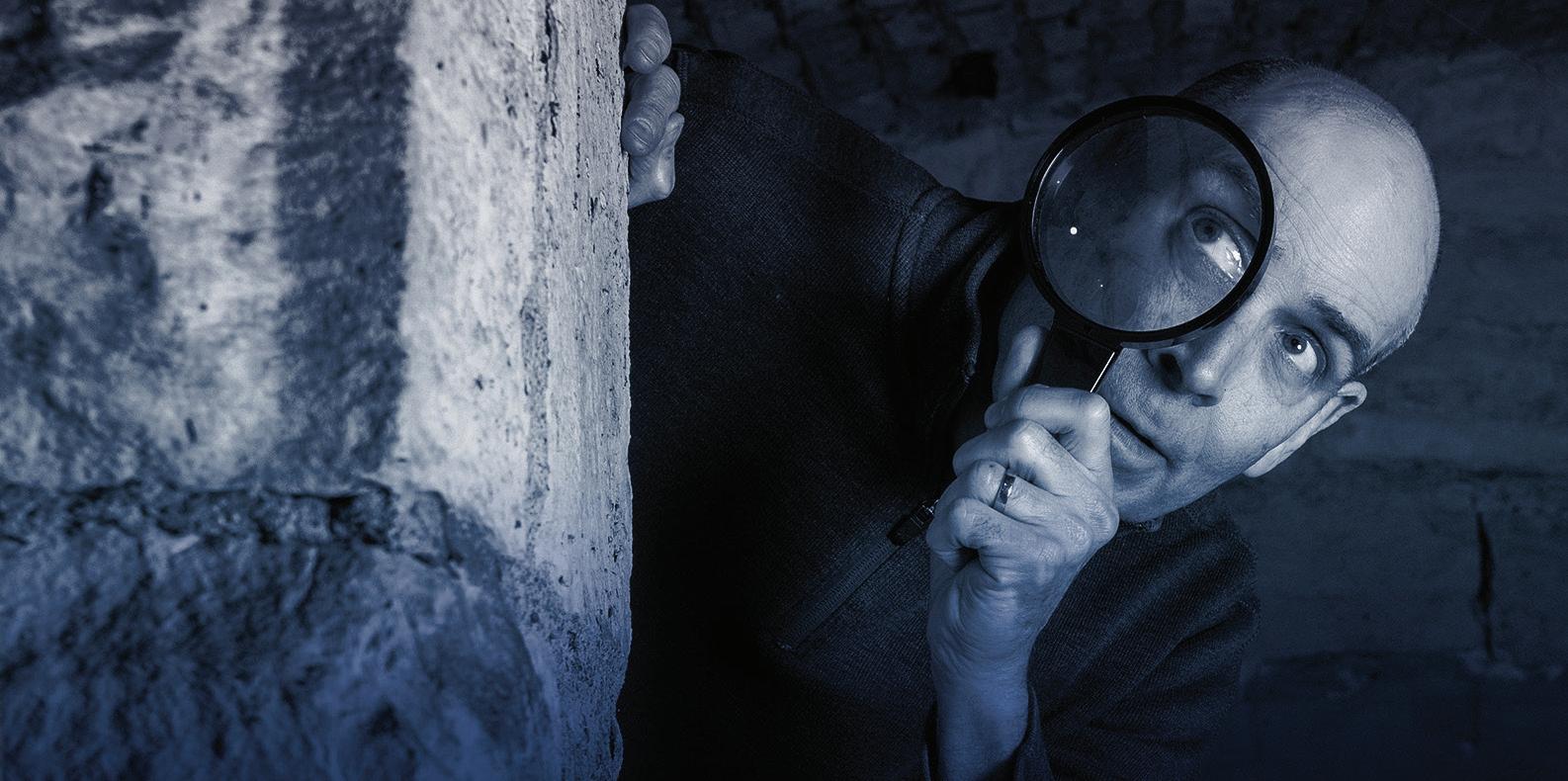
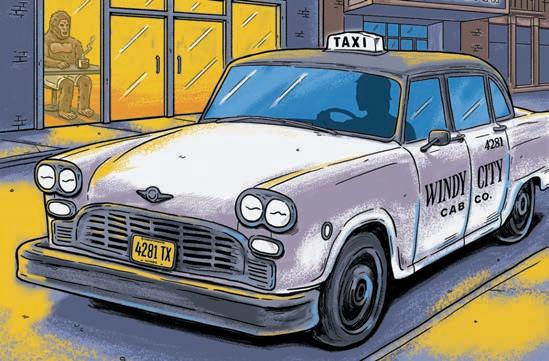
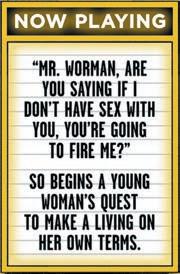









MAY 2, 2024 - CHICAGO READER 29 READ FOR FREE AT TAXIGIRLBOOK.COM BUY THE PAPERBACK AT SCHULER BOOKS OR SCHULERBOOKS.COM/CHAPBOOK-PRESS READ FOR FREE AT TAXIGIRLBOOK.COM BUY THE PAPERBACK AT SCHULER BOOKS OR SCHULERBOOKS.COM/CHAPBOOK-PRESS READ FOR FREE AT BUY THE PAPERBACK AT SCHULERBOOKS.COM/CHAPBOOK-PRESS Find events and exhibitions near you! artdesignchicago.org with Geoffrey Baer NOW STREAMING wttw.com/chicagomysteries
RTHE WHOLE WORLD IS WATCHING: STORIES FROM THE FRONT LINE Wed 5/8, 6:30 PM
Claudia Cassidy Theater at the Chicago Cultural Center, 78 E. Washington, free chicagofilmarchives.org/calendar/event/whole-world-is-watching
PREVIEW
The whole world is watching again
As the 2024 Democratic National Convention approaches, the Chicago Film Archives presents stories from the front line of the 1968 convention.
By KAT SACHS
The adage that history repeats itself may seem banal at this point, yet it remains undeniably true, unfolding before our eyes as our nation and the world descend further into turmoil. Another repetition may play out this summer, when Chicago will host the Democratic National Convention (DNC) in a political landscape eerily similar to that of the 1968 congregation. During that convention, the city erupted into mayhem after protests planned by groups such as the Yippies and the National Mobilization Committee to End the War in Vietnam (often referred to as MOBE) were thwarted. The city refused to give out permits and later used violence when Mayor Richard J. Daley mobilized police and the National Guard, whose force was brutal and wholly unnecessary.
“You had soldiers in Jeeps, with barbed wire on the front of the Jeeps,” says local filmmaker and founding member of Kartemquin Films Gordon Quinn, who was present at the protests. “I remember when we came home that night . . . there were soldiers on the roof, and you could see them outlined against the sky with their rifles. It felt in many ways like the war had come home.”
Images of the demonstrations—largely protests against the Vietnam War—and the violent response to them have echoed through the decades, a salient reminder of the need for witnessing and documenting such historic events. The Film Group was one organization that did just that. They produced both commercials and politically charged documentaries from the mid to late 1960s through the early 1970s; among their most well-known output from the latter category are Howard Alk’s American Revolution 2 (1969), about the convention and its aftermath, and The Murder of Fred Hampton (1971), for which Alk and Film Group cofounder Mike Gray entered Hampton’s apartment after the raid in which he was killed and filmed the unsecured crime scene.
The group also made a seven-part educational series called The Urban Crisis and the New Militants, the majority of which centers
on the convention. Contrary to the standard mode of the educational film genre, the group sought to “teach by raising questions rather than by attempting to answer them.” They also eschewed techniques like narration to favor editing so as to depict “real events, with real people acting spontaneously,” as they explained to a distributor of educational films. The release prints of these films were donated to the Chicago Film Archives (CFA), which preserved the series. Today, the CFA houses both the release and preserved prints, ensuring the longevity and accessibility of these historically significant documents.
Four parts of the series comprise the Whole World Is Watching: Stories from the Front Line, an event taking place on Wednesday, May
the event, and the title of the program comes from a chant during the protests—“The whole world is watching!”—which Rose is credited with coining.
“I wasn’t really trying to phrasemake,” Rose says. “This goes back to the Tuesday before all the action. These people had been beaten up in Lincoln, mostly the Yippie group . . . and we were holding a press conference, and Rennie Davis was supposed to be the spokesman for the press conference, and he asked me when we were walking over to the press headquarters, ‘It’s pretty bad, what should I say?’” Rose continues, “And I said, ‘Tell them they can’t get away with it again because the whole world’s watching.’ I just meant that as a statement—I wasn’t trying to sloganize—but soon after, he was chanting it, and it caught on. The whole world is watching again, and it’s a matter of what they’re going to see now. Are they going to see more violence, or are they going to see a more civilized permission of protest?”
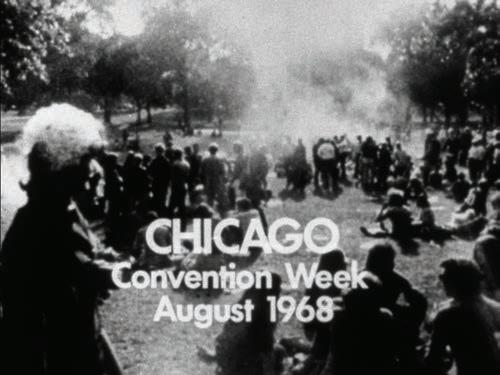
8, at 6:30 PM, in the Claudia Cassidy Theater at the Chicago Cultural Center. The short “modules” (as the Film Group called them) will be screened, then followed by a panel discussion featuring Quinn; retired journalist and political advisor Don Rose, who was a spokesman for MOBE; journalist and writer Don Johnson, who covered the convention for Newsweek ; and Weather Underground cofounder and lifelong activist Bill Ayers. Ayers’s son, Zayd Ayers Dohrn, a writer and Northwestern professor, will moderate. The CFA is putting on
28, an edit that implies a certain level of cause and e ect.
Social Confrontation: The Battle of Michigan Ave. contains a similar juxtaposition, this time between the violence against protesters on that fateful day and the convention itself, where Mayor Daley is seen yelling at a delegate who suggests that such Gestapo-like activity wouldn’t happen if George McGovern were president. In Law and Order vs. Dissent, footage of the police response to the demonstrations and later press conferences by Daley and a spokesman for the Chicago Police Department are intertwined, evincing the creation of a revisionist narrative in real time. Just a month before the convention, in stark contrast to a previous attempt at seeming conciliatory, Daley had told the American Legion that “as long as I am mayor of this city, there will be law and order in the streets.”
The first module, The Right to Dissent: A Press Conference , sets the stage. Taking a direct cinema approach, the film is explicitly observational, documenting events as they happen with no filmmaker interference. This depicts a preconvention MOBE press conference where members detail their trouble in working with the city to plan the protests. Among the speakers are Davis and David Dellinger, who would later become two of the Chicago Seven, the group of activists who were accused of conspiracy and crossing state lines with intent to riot, among other charges, and later outright acquitted or else had their convictions reversed on appeal. The film juxtaposes the activists’ request to protest peacefully and the later violence that occurred on August
The last film, Police Power and Freedom of Assembly: The Gregory March, includes a familiar face, that of comedian and activist Dick Gregory, and was later folded into Alk’s American Revolution 2. Several months prior to the convention, in January, Gregory had written a letter to President Lyndon B. Johnson saying that, per the New York Times, “unless racial conditions improved in Chicago, he would lead demonstrations ‘which will make it impossible for the Democratic party to hold its convention here over my dead body.’” In the film, Gregory is shown guiding a march, supposedly back to his house (a clever legal loophole), in order to penetrate a police cordon around the Loop. Fearing riots should the group make it further into the city’s south side, the police eventually arrested Gregory, despite the crowd behaving peacefully and sticking to areas where it was permissible for them to be.
It remains to be seen whether this year’s convention will be a repeat or a step forward, with Quinn predicting that the protests will largely center on the genocide in Gaza, something we’ve seen bureaucratic and academic institutions respond to in shocking and hypocritical ways. The documentation of such events is important both for historical purposes and the current moment, so that injustice cannot be denied.
“The thing that the demonstrators were chanting, ‘the whole world is watching’ . . . that’s exactly why the pictures are so important,” Quinn says. “You’re not going to get away with this in the dark of night or in a way it can’t be denied, because we have the pictures.” v
m letters@chicagoreader.com
30 CHICAGO READER - MAY 2, 2024
FILMFILMFILM
The Right to Dissent: A Press Conference (1969) CHICAGO FILM ARCHIVES





For the past several years, my moviegoing log has been a Google Sheet; only somewhat more recently have I again taken to Letterboxd to log titles (having joined and then abandoned it during the pandemic, preferring then to keep my record less online), sometimes with a smattering of words about what I’ve watched. Since my editor approached me with the idea of doing a column about my viewing habits for the Reader, I’ve thought about how it might materialize in comparison to those other methods. Ultimately I’ve decided not to reinvent the wheel, to document my moviegoing as I always have: unceremoniously but with relish, each new experience, each new entry one step further to mastering cinema. (The best part being that that’ll never happen—a true masochist’s endeavor.)
The past couple weeks have been busy with what I’ll call event viewing. On April 16 and 17, Chicago was one of four cities in the U.S. to host the Art of the Benshi. The word benshi comes from katsudō benshi, or “movie talker,” which is a succinct summation of the tradition. At first, benshi would only summarize the movie beforehand, as many of the silent films would have been foreign imports and thus may have needed some explaining; however, as film became more narratively sophisticated, benshi began implementing setsumei, which took place during the film and provided a more storylike oration versus just an explanatory introduction. To quote one source on the subject, “Japanese ‘silent movies’ were never silent.”
My favorite of the films I was privileged to see at the Gene Siskel Film Center, with three benshi in attendance, was the surviving fragment of Yasujirō Ozu’s 1929 silent short

A Straightforward Boy (1929)
A Straightforward Boy .
On the first night, there was only one benshi per film; the gentleman who accompanied the Ozu fragment, Hideyuki Yamashiro, captured the Japanese master’s winsome sense of humor and economical plotting. Kumiko Ōmori, the lone woman in the trio, won over the crowd with her jokes and thoughtful accompaniment to Kenji Mizoguchi’s silent feature-length fi lm The Water Magician (1933). Ōmori joked that she was getting the same fee as the other two benshi despite accompanying the longest film; she also joked about trying Chicago pizza. (Our culinary reputation precedes us.)
Portuguese filmmaker Pedro Costa was also in Chicago recently to attend several screenings of his films. I went to the double feature of Danièle Huillet and Jean-Marie Straub’s Sicilia! (1999) on 35-millimeter, and Costa’s Where Does Your Hidden Smile Lie? (2001), a quasi-documentary about the editing of Straub-Huillet’s film. “Quasi” inasmuch as there are manipulations in Costa’s film that negate it as pure documentary, a mode that he doesn’t much care for anyway. (This was the biggest revelation of the post-screening discussion; ironically his visit to Block Cinema, where I saw the films, was sponsored by Northwestern’s MFA in Documentary Media program.) Costa is verbose in a way that I could listen to for hours. It’s refreshing to hear a filmmaker talk about filmmaking as an art rather than as a way to simply convey a message or tell a story. And that’s what I’m trying to do here. Until next time, moviegoers. —KAT SACHS v
The Moviegoer is the diary of a local film bu , collecting the best of what Chicago’s independent and underground film scene has to o er.




MAY 2, 2024 - CHICAGO READER 31 FILM
GENE
SISKEL FILM CENTER
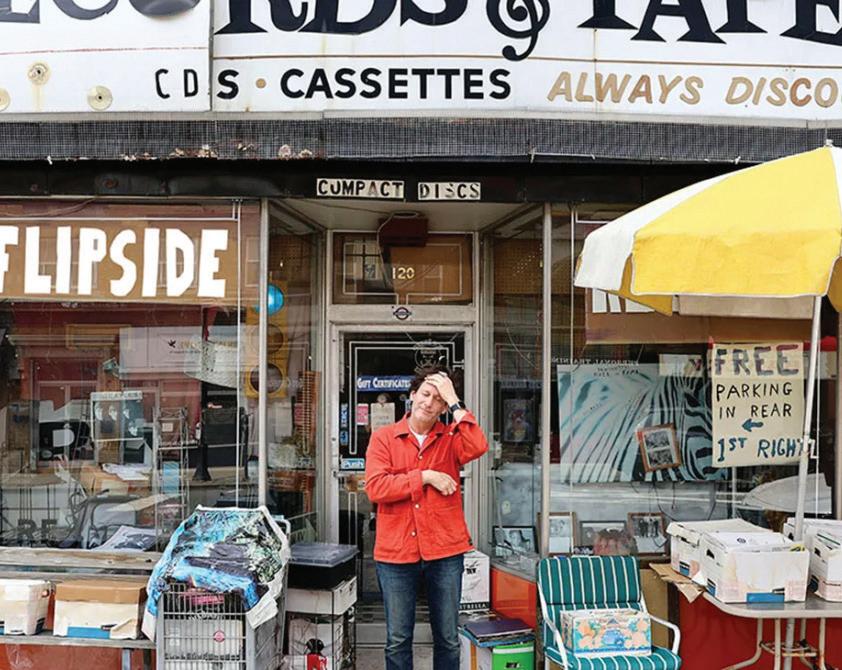
NOW PLAYING
Challengers
Few young stars have had a rise as meteoric and seemingly inevitable as Zendaya. From an Emmy-winning turn as a drug-addicted teen in HBO’s gritty high school drama Euphoria to playing the woman lead in a pair of sci-fi blockbuster epics (and finding time to be a style icon in the meantime), the 27-year-old has come a long way from the Disney Channel. Her latest project, Luca Guadagnino’s Challengers, sees Zendaya starring opposite Mike Faist and Josh O’Connor in a steamy tennis-centric romantic drama full of mind games and manipulation. But while Challengers’s script may be ambitious, its inconsistent direction, frustrating sound mixing, and thin characters render limp this would-be sizzler of a Zendaya vehicle.
Challengers follows Tashi Duncan (Zendaya), a dominant young tennis star who catches the eye of best friends/doubles partners Art (Faist) and Patrick (O’Connor). Though Tashi eventually marries Art with the intent of making him a champion in the wake of her own career-ending injury, Patrick continues to be a haunting presence in both of their lives, and a seemingly low-stakes tennis challenger becomes a battle for dominance.
With trailers set to bad girl anthems like Nelly Furtado’s “Maneater” and Rihanna’s “S&M,” Challengers hinges its premise on the strength and dominance of Tashi Duncan, both as a person and an athlete. But while Zendaya certainly fits the physical bill for the role,
The Target Shoots First , it made Wilcha an indie-film sensation. His artistic life has since fallen short of his lofty ambitions, despite what his CV says. He may have produced This American Life ’s Emmy-winning TV show, but he’s spent much of his professional life filming ads to underwrite documentary projects he’s yet to complete.
Flipside threads together clips from several of these unfinished documentaries along with intimate scenes Wilcha compulsively filmed of home life for a moving and discursive portrait of his life—and, yes, the record shop that helped set him on this path. Flipside owner Dan Dondiego, former employee Tracy Wilson (of crucial early 90s emocore group Dahlia Seed), and shop regular and Jersey basic cable legend “Uncle” Floyd Vivino provide the film with an unsentimental, scabrous warmth. Wilcha avoids navel-gazing while contemplating his failures, which encouraged me to reflect on my own path and the bumps in the road—these, too, are records worth revisiting. —LEOR GALIL 92 min. Mon 5/6, 9:45 PM, Music Box Theatre
RThe Hills
Steel promised many immigrants the American dream, but it ultimately le them high and dry, stuck cleaning up the messes made by the mills that prospered and faded away.
Get showtimes and see reviews of everything playing this week at chicagoreader.com/movies R
cleaning up the waterways where local boys fish and play; juxtaposed against the beautiful and delicate landscape, many don’t realize the poison that surrounds them.
As a whole, Sommer’s film is a thoughtful introduction to the people’s lives that are at risk and why the larger city of Chicago should care about what’s happening on the southeast side. —S. NICOLE LANE 43 min. Fri 5/3, 7 PM, Block Cinema
R I Saw the TV Glow
Writer-director Jane Schoenbrun’s highly anticipated sophomore feature I Saw the TV Glow is both a tribute to millennium kid culture and a genre-defying trans coming-of-age thriller. On election night 2000, seventh-grader Owen (Justice Smith) connects with ninth-grader Maddy (Brigette Lundy-Paine) a er seeing her reading an episode guide for The Pink Opaque. It’s a show about two teen psychics fighting for good under unlikely circumstances that’s equal parts Buffy: The Vampire Slayer and Are You Afraid of the Dark? with a touch of The Adventures of Pete & Pete
her delivery under Guadagnino’s direction never feels as ferocious or definitive as Tashi’s dialogue demands. Though her teeth come out when she’s giving her so hearted husband some tough love (Faist gives a compelling supporting turn as Tashi’s verbal punching bag), Guadagnino can’t quite coax the cold, confident, world-weary performance out of Zendaya that the story needs, and the film suffers for it.
Certainly, parts of Challengers are pulse-pounding: Guadagnino’s creative, o en audacious cinematography makes the on-court scenes electric, and Trent Reznor and Atticus Ross’s score is deliciously sexy and synthy, even if the mix frequently drowns out dialogue in key moments. Still, a trio of hot young talent does not a good film make, and Challengers too o en mistakes flash for nuance. Bolstered by an acerbic script but ultimately bogged down by lack of bite, Challengers is a sexy, sweaty, self-aware tennis drama that serves just short. —LAUREN COATES R, 131 min. Wide release in theaters
R Flipside
Flipside is a cluttered, largely forgotten New Jersey record store that’s drawn the focus of director Christopher Wilcha in this documentary—sort of. Wilcha worked at Flipside as a teenager in the late 1980s. In middle age, he returns to the place that shaped his iconoclastic values out of a desire to reexamine his own life. In the late 1990s, Wilcha made a documentary about Columbia Record and Tape Club while working in the company’s marketing division; titled
“If there’s soot on the windows, there’s food on the table.” This popular saying signified the success of opportunity in the southeast side of Chicago. However, when the mills began to close in the 1980s, it devastated the area. The soot on the windows no longer meant success but resembled the poisonous hills and waterways carrying toxic byproducts throughout the region.
In the film The Hills, Ines Sommer—filmmaker, cinematographer, and educator at Northwestern University— explores how the community has been battling health concerns and fighting for safety, largely to deaf ears. The southeast side has the highest cancer and asthma rates in the entire city of Chicago, and it’s being treated as a dumping ground.
Sommer’s short documentary follows several locals looking to save their community. “We’ve been here, what, 150 years?” says Jim Kinney in the film. “And we’ve managed to fuck this whole thing up.”
On the southeast side sits a 67-acre toxic slag hill used as a dumping ground from the 1950s to the 1980s. The slag looks like gravel to the naked eye, but it contains arsenic, chromium, lead, and much more. Today, motorists drive their ATVs or jeeps there, not fully realizing the abundance of poison and contamination the hill contains. With each rev of the engine, a plume of toxic smog rises into the air and into the lungs of a vulnerable community.
And it isn’t just the air that is at risk. The slag from the hill flows into Indian Creek, which flows into Wolf Lake, then into the Calumet River, and eventually Lake Michigan—Chicago’s water supply. Sommer follows folks
The show is off-limits to Owen because it’s on past his bedtime. Also, as his dad (Fred Durst) points out, it’s a “girl’s” show. But something about it just . . . speaks to Owen. Over the next few years, Maddy and Owen embark on a shared journey of self-discovery by finding secret ways to pursue their fandom together. When Maddie disappears and resurfaces ten years later, Owen’s memories of the show vs. reality blur, especially when Maddy insists it’s not his imagination—those mystical things actually happened in real life, to them. And if Owen follows her, he can live in that reality with her forever. Will he?
I Saw the TV Glow is a beautifully rendered and heartbreaking work about the pains of trans youth, understanding one’s experience when you don’t have the language to describe it, and the complicated gamble of transitioning vs. not transitioning.
Schoenbrun is part of a rising ride of trans artists making sense of their pasts by mining pop culture from childhood. When Irregular Girl hosted their show That Shit’s Trans! at Steppenwolf two years ago, they explored this very phenomenon by interviewing trans people about how they found representation and validation through cultural material not explicitly made “for” them. Right now, artist Gericault De La Rose’s installation Moon Healing Escalation at Co-Prosperity Sphere talks about transness, community, and recovery through Sailor Moon The People’s Joker, which plays at the Music Box Theatre the same day, is a mostly autobiographical trans coming-of-age film told through writer-director Vera Drew’s Batman fandom. I Saw the TV Glow is just as frank as all these works—but less buoyant. There’s darkness and urgency alongside the story’s imagination that makes this extremely timely and interesting. It is a must-see. —MICCO CAPORALE PG-13, 100 min. Sun 5/5, 7:15 PM, Music Box Theatre, followed by wide release v
32 CHICAGO READER - MAY 2, 2024 FILM
MUSIC BOX THEATRE
Flipside
READER RECOMMENDED
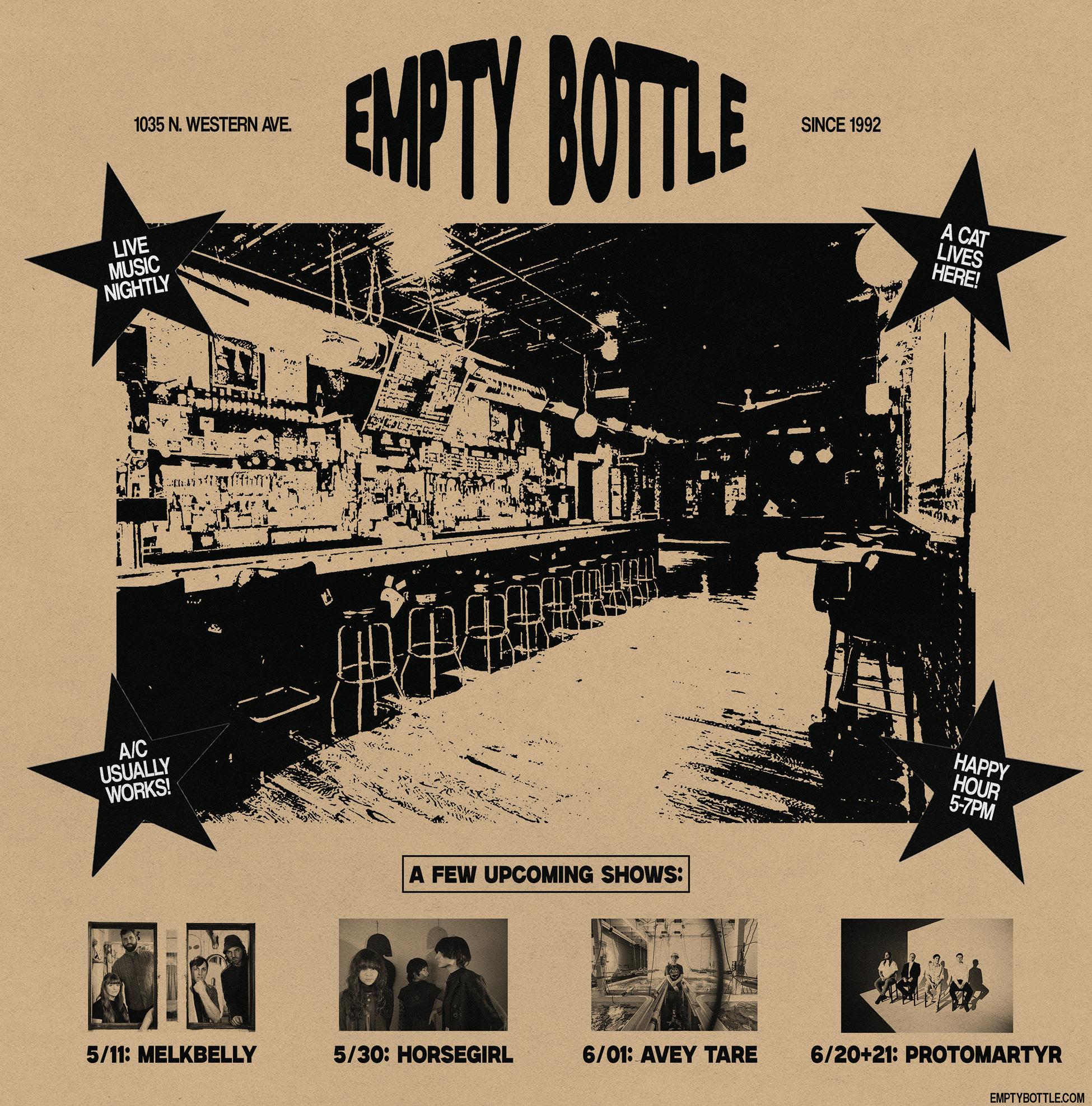
MAY 2, 2024 - CHICAGO READER 33
MUSIC
Edging tend a joyful garden of chaos amid the decaying concrete of Chicago. On social media, the five-piece band describe themselves as “landscaper punks” because their three founding members connected through landscaping jobs. They also know something about how to prep soil to grow raucous rock ’n’ roll. Their music is a ravenous jungle of saxophone blasts, punked-up disco drums, and alley-cat howls, calling fans to a party paradise with the allure of a bizarro Eden.
The sophomore Edging album, Concrete Cumming , dropped on April 2 via their own Dick Jail label, and it takes their signature sound—70s-style punk splattered with technicolor saxophone—and makes it a little tighter, groovier, and more ecstatic. Their debut, Good Sex Music, is the kind of raw, spasmodic music that reliably attracts a devoted following in local DIY scenes. But Edging’s profile is rising— in just the past seven months, they’ve opened for the likes of UK heavy-rock band Pigs Pigs Pigs Pigs Pigs Pigs Pigs and Australian punk stars Amyl & the Sniffers—and on Concrete Cumming they adopt a more mature sound. The band hope it’s enough to get them on the road, spreading their seed coast to coast. And yes, the name is a double entendre. Edging is the practice of consciously stretching out or delaying orgasm, usually to create a bigger payoff at the end. But it’s also a landscaping term for creating or maintaining barriers between paths, grass, mulch, and plant beds.
“We were on a jobsite one day and went, ‘All right, what band names work that are landscaping terms?’” explains guitarist and sometimes vocalist Will Sallee, who started the band in 2018 with singer Faith Callaway and saxophonist Tyler Meneese. “It was either ‘Mulch’ or ‘Edging.’”
“There was this old guy at a hot dog place by Lincoln Hall,” Callaway says. “And we go in and order, and we’re like, ‘Oh, we’re playing.’ And this old guy is like, ‘What are you called?’ And we’re like, ‘Edging.’ And he’s like, ‘What?’

Edging push their punk to the point of no return
And we’re like, ‘Edging.’”
Callaway pauses to let a mischievous grin blossom.
“And he goes, ‘Oh. Edging. I know what that is.’”
Everyone breaks into laughter. They can always count on having fun with people’s reactions to their name. That’s the sort of thing that keeps them making music: it helps them smile and laugh together, no matter how much pain they’re in. Sometimes they try to distract
themselves from it, sometimes they funnel it into their lyrics, but it’s always there. When I ask what inspires their songs, the first person to answer is Sallee, who wears his hair in two braids and speaks with the giddy lilt of a child playing hopscotch. “Our traumas,” he says, brightly but matter-of-factly. “We all carry our traumas with us.”
Callaway describes coming home from school on 9/11 to find their mom had abandoned them, their father, and their sister, leav-
With a saxophone in their front line, a solar shower in their van, and a scorching new album out in the world, they’re ready to leave it all on the road in pursuit of their dream.
By MICCO CAPORALE
ing only a note. Callaway was 13. “I don’t even think she knew what had happened!” they say. “I think the two events were unrelated. But that was the day I knew I wanted to start a punk band.” In the next breath they add, “That was just baby trauma, though.”
Today Callaway is bubbly and energetic, but growing up the singer was shy and cried a lot. They’re a cat with nine lives, and they’ve skittered and scampered from the hills of South Carolina all across the United States.
34 CHICAGO READER - MAY 2, 2024
BEN KATZMAN’S DEGREASER, THICC LIZZY, EDGING Thu 5/9, 9 PM, Empty Bottle, 1035 N. Western, $12, 21+
Edging in their rehearsal space JOSH DRUDING FOR CHICAGO READER
Chicago is the only city they’ve called home twice—they lived here briefly in 2008 during the Obama campaign, then moved back to stay in late 2016 or early 2017 after meeting and becoming partners with Sallee in the Bay Area. Chicago’s sturdy pile of steel and glass makes them feel at home—the Gotham City to their Joker. (Metropolis is New York, they assure me, but Gotham is Chicago.)
Before starting Edging, Callaway had casual runs in several bands, trying to keep it weird on drums, keys, cello, violin, or singing saw, but they secretly itched to be at center stage yowling. As a front person, they’re nimble and jumpy, with feline moves, spindly limbs, and a back that can arch into a “C.” They’ve got a Heathcliff charm too. They have stark, scratchy cat tattoos, and during our interview they wear navy blue cat socks and show me pictures on their phone of their four furry children. Callaway emanates feral energy. When they and Sallee moved to Chicago, both quickly got jobs as landscapers, where they met Meneese. At the time, Meneese had just moved to the city from Marion, Illinois, and was looking to play with people—to him, making music felt as routine and as urgent as brushing his teeth, and when he fell out of the habit, he felt o -kilter. For a year, he begged Sallee to jam. As a punk veteran, Meneese has performed on guitar, drums, and bass, and he was ready to go hard with anyone who’d let him, in whatever ways made sense. Since age ten, he’d also been playing jazz saxophone—a style and instrument that called to him like the moon beckons the undead.
“Faith and I were writing these punk songs that definitely needed something special,” Sallee says. “When Tyler first said he played saxophone, Faith and I looked at each other like, ‘Well!’” For all the bands Meneese had
screaming when he plays. There’s, like, a lot of core—it’s a whole-body thing.”
Yes, the name is a double entendre. Edging is the practice of consciously stretching out or delaying orgasm, usually to create a bigger payoff at the end. But it’s also a landscaping term.
Edging describe Meneese as their “secret sauce.” Onstage, he moves like a pink elephant playing his trunk—a blissed-out cartoon who’s one with his horn and drunk on the pleasure of making noise. But the group acting as a whole is what makes the experience of seeing Edging so much fun. Bassists and drummers have come and gone over the years, but the current lineup has a synergy that works hand in glove with their ambition. They feel like a band beginning to flourish.


been in by then, it was the first time he’d been invited to bring his favorite instrument to his favorite kind of music.
“Tyler’s such a good jazz saxophone player,” Callaway says. But punk isn’t necessarily about virtuosity, precision, or nuance. “I was like, ‘I’m so sorry to ask you this, you’re so good, but can you, like . . . drag it through the dirt and, like, make it sound . . . not . . . good?’”
In their brief history, Edging have had two bassists and three drummers, but the front line has never changed. “We just started playing and kept going until it sounded good,” Meneese says. “The three of us have played together for years. We’ve had other members that we’ve fallen off with, but we just keep playing together.”
By the end of 2019, Edging had written all the songs for Good Sex Music, but it would take almost four years for them to release it. They’d only been performing every two or three months—often at the Burlington, where Callaway would fall on their knees and writhe for an audience of the door guy, the sound guy, and the sound guy’s girlfriend. They wanted to gig more, but they had a hard time coordinating all the members’ schedules. Even if they did get an opportunity, it was i y whether everyone could show up. Early on, they never said no to a show they could actually play, but hardly anyone asked because so few people had heard of the band.

“I always knew I was gonna play the saxophone,” Meneese says. “I’ve loved it since I was really, really small. Some of my early memories—I was like, ‘I’m definitely gonna play the saxophone.’ It’s very cool. It just spoke to me.”
Callaway and Sallee had privately been tinkering with some songs together—just lyrics and basic guitar licks—and by the end of 2018, they were ready to develop them with others. It was then Sallee relented and invited Meneese to bring his sax for a rehearsal.
Saxophones in punk are nothing new. They’re part of the genre’s earliest beginnings (the Stooges) and its formative years (X-Ray Spex). Still, the sax has never been part of the Ramones-style template. In the 90s, saxophones in punk became largely the territory of third-wave ska, and the instrument su ered by association with cheesers like Bill Clinton and Kenny G, a stain of uncoolness that’s yet to fully wash o . But it’s 2024. Beyoncé is country, André 3000 is jamming on flutes, and sentimental background music like City Pop and Enya is cool. There’s never been a better time for punk to branch out into less conventional instruments and push what they can do.
“There’s physicality to it,” bassist Jimi Hargraves says of Meneese’s playing. “I don’t think I realized right away, but he’s physically
Heading into 2020, Edging were confident their lineup would stabilize and more shows would come their way. An album could only help! Before they could begin recording, of course, the pandemic hit.
In some ways, lockdown brought the founding trio closer. At the time, Callaway and Sallee were sharing a home in Humboldt Park, where Meneese frequently joined them to hang and jam. They’d go to work together during the day and practice together at night, filling the room with music and fantasies of where it could take them when they could walk among the living again. They even broad-stroked much of the material that would become Concrete Cumming . Shortly after pandemic restrictions were lifted in 2021, Meneese moved in, along with his partner, Hargraves, who soon took over from the band’s first bassist. A year later, they met Adam Hatcher, who went from


MAY 2, 2024 - CHICAGO READER 35 MUSIC
From top to bottom: Faith Callaway, Tyler Meneese, Will Sallee, Jimi Hargraves, and Adam Hatcher
JOSH DRUDING FOR CHICAGO READER
MUSIC
continued from p. 35
fanboy to full-time drummer in the course of a month. If the sax is Edging’s secret sauce, then Hargraves and Hatcher are the bread keeping this tasty treat together.
To get the material on Good Sex Music ready to release, Edging still had a long slog ahead. The album, which finally came out in summer 2023, was recorded in true punk fashion—which is to say, piecemeal throughout 2022 with a lot of learning on the fly. Getting everyone into various home studios was a challenge. Hargraves plays on the entire album, but she had to learn parts written by the band before she came aboard. Edging were having drummer troubles at the time, so Mannequin Pussy’s Kaleen Reading (who’s based in Philadelphia) lends her talents on the kit. On “Bleach Me,” Ben Katzman—indie guitarist extraordinaire and now famous as a Survivor contestant—provides his gift of shredding.
For Concrete Cumming, Edging recorded in a professional space and enlisted the help of audio mastering engineer Howie Weinberg, who’s worked on records for the likes of Nirva-
na and the Beastie Boys. But what the founding trio is most proud of on this record is the dedication and imagination of their rhythm section. Hargraves and Hatcher had both become fullfledged members, and the sessions for Concrete Cumming were the first time either of them had contributed to a recording with material they’d written themselves.
Hargraves started playing cello at 11 and continued with it for 15 years. When she came to punk, she picked up bass because it seemed easier and she felt like there were always opportunities for bass players. In the rehearsal space, she

Edging work just enough to keep their bills paid. There isn’t much money in music at their level— arguably less than ever. What they do make all gets reinvested into the band.
36 CHICAGO READER - MAY 2, 2024
2-DAY PASSES ON SALE MAY 3 KIDS UNDER 12 ARE FREE ! + FREE SUMMER PROGRAMMING THROUGHOUT EVANSTON
Edging open for Amyl & the Sniffers at the Salt Shed in October 2023. JOSH DRUDING
has a quiet but knowing confidence that comes out onstage when she syncs up with Hatcher. Hatcher is a stoner pizza punk who saves his frustrations for his drums. “I make them suffer,” he says.
Hargraves takes the lead visibly, standing close to the edge of the stage, her feet planted like a sumo deadlifter at lockout and her fingers moving across the neck of her bass with an intensity that would move Lemmy Kilmister to raise a flask. Together, Hargraves and Hatcher—lovingly referred to as “Little Tendy” for his love of chicken tenders, except when he’s hangry for chicken tenders and becomes “Big Curd”—provide an anchor that bring the frantic clangs, whimpers, and tickles of the rest of the group back to earth. On Concrete Cumming , Hargraves’s dynamic attack and Hatcher’s laid-back support have made their mark. The band feels complete.
As soon as COVID allowed, Edging began playing as many shows as possible—including many they organized themselves at their Humboldt Park home. Play for your friends; play for your friends’ friends. Performing really is playtime. Now they’ve got more opportunities to play than they can keep up with—a show booked most weeks, if not multiple times per week. Edging are learning the delicate art of “no.”
“To be honest, I don’t know if any of us really have a social life right now,” Sallee says. “And it’s probably my fault for pushing so hard.”
“This is just such a labor of love,” Meneese adds. “It definitely feels like work sometimes, but it feels a lot less like work than, like, a job. We just love it, you know? . . . The energy from our audiences is very reciprocal. We carry a very, like, chaotic, dissident energy. That’s our love, man. And we get to interact with people who are just as free to feel that way and all be right there together.”
When Amyl & the Sniffers announced a Chicago date at the Salt Shed in fall 2023, Callaway mused about the possibility of opening for them. “I kept telling everyone, ‘I’d quit my job to open for Amyl & the Sni ers,’” Callaway says. Then they got fired and Amyl & the Sniers called.
“We showed up at Salt Shed and were like, ‘We’re Edging,’” Callaway says. “And they’re like, ‘Who?’ And we’re like, ‘Edging,’ and they’re still like, ‘. . .’ And then we get to the dressing room and there’s a paper that says ‘the Edging.’ We just taped a paper towel over the word ‘the.’ And then I stole all the fruit. All the Salt Shed fruit.”
As out of place as the band felt backstage,
MUSIC
that show was exactly the confidence boost they needed. Opening for an act they admire in front of an audience of hundreds pushed Edging to think more about their priorities. They work just enough to keep their bills paid. There isn’t much money in music at their level—arguably less than ever. What they do make all gets reinvested into the band: generating higher quality merchandise, paying illustrators better rates, booking time in recording studios. As they try to level up and connect with a broader audience, they have to refuse more small opportunities so they’ll be free to jump at the big ones.




The band’s biggest ambition now is to break out of the midwest and tour as much as possible. Edging even have their own tour van, a brown ’93 GMC Vandura named “Vanthena Starcraft” that they’ve tricked out with a solar shower—but it spends more time awaiting repairs than plying the pavement. They’ve nonetheless managed a handful of short trips to neighboring states, and this April they made their first east-coast tour—seven dates, if you count the ones in Ohio and Wisconsin.
At Edging’s record-release show at Cafe Mustache on April 3, the bar overflowed with an eager crowd sporting oversize denim, chain-mail necklaces, and neon haircuts. The band are excited by how many fans have come out to see them again and again, especially queer and trans kids.
“I mean, I’ve seen the same person at five shows in a row before,” Hatcher says. “Which is ridiculous. You know why? Because it’s like . . . in a three-week time, someone spent like $100 seeing us five times. That’s nuts to us.”
Many audience members know the lyrics better than Edging do, and they thrill at opportunities to scream into Callaway’s mike along with the band. Could Edging be cumming to more towns? With the perfect lineup, loads of material, and a stage show more unpredictable and explosive than a downed power line, they’ve never been in a better position to carry the party far and wide.
“The two main people I want to find Edging are Jack Black and Eric André,” says Sallee. “Eric André, we would like to get on your show. Edging: All butt naked. No instruments.”
Callaway adds: “I would go ass-out but would definitely have a strap-on.”
They might not yet know how to realize their dreams, but they’re Edging ever closer. v
m mcaporale@chicagoreader.com
+ Pinebender / Immortal Bird / Bleached Cross
+ Gag / PeelingFlesh
+ Kristof Hahn
+ Grip / Futuristic / Willie Wonka
DJ Leo Blanco

MAY 2, 2024 - CHICAGO READER 37 3730 N CLARK ST METROCHICAGO.COM @METROCHICAGO SMARTBARCHICAGO.COM 3730 N CLARK ST | 21+ IML QUEEN! DRAIN ARCHSPIRE RICK SPRINGFIELD INAYAH BOOTS THE DANDY WARHOLS MAY 26 MAY 30 JUN 06 JUN 09 JUN 13 JUN 22 JUN 27 Laid Back | Cold Beer | Live Music @GMANTAVERN GMANTAVERN.COM 3740 N CLARK ST 21+ FRI MAY 17 CKY + Crobot FRI MAY 03 Obscure + Format present HENRY BROOKS KYRUH MARK ANGEL SAT MAY 04 MARIE DAVIDSON JUSTIN AULIS LONG GLAMOUR CADAVER FRI MAY 03 / 8PM / 18+ RECORD RELEASE BONGRIPPER
SAT MAY 11 / 9PM / 18+ SWANS
THU MAY 09 Green Machine MINA MILLS BARBUHH PATRICK CONAHAN FRI MAY 10 FINAL U.S. COAST TO COAST TOUR STIFF LITTLE FINGERS + Ricky Warwick SUN MAY 12
7PM / 18+ PROF
/
THU MAY 16 / 7:30PM
18+ RIDE
SAT MAY 04 / 7PM / ALL AGES METRO & EMPIRE PRODUCTIONS PRESENT
/
+ Knifeplay
SANGUISUGABOGG + JESUS PIECE
SAT MAY 18 PSYCHEDELIC PORN CRUMPETS + Spoon Benders MON MAY 06 EMPIRE PRODUCTIONS WELCOMES OBITUARY + Molder / Sector SAT MAY 25 / 7PM / 18+ JUSTFOR.FANS & LUXXESTUDIOS PRESENT THE 25TH ANNUAL GRABBY
SAT
AWARDS Hosted by Chi Chi LaRue / Dillon Diaz / Drake Von Milo Miles / Honey West
MAY 25 / 11:30PM / 21+ JOE FIORE PRESENTS FURBALL: IML CHICAGO Featuring
ANAIET SOUL
MUSIC
CHICAGOANS OF NOTE
Anaiet Soul, pianist, performer, and lifelong student
“To play jazz, especially in the city, but just to play jazz, period, you need to have tough skin and you need to be able to take criticism.”
As told to DMB (DEBBIE-MARIE BROWN)

Anaiet Soul (she/they)—born Teiana Davis—is a 24-year-old multi-instrumentalist and performer whose main instrument is piano. Primarily jazz-trained, Soul has taken part in Ravinia Jazz Mentor, After School Matters, and Harold Washington College’s jazz programs. Through such opportunities, they’ve rubbed elbows with many people they still regularly gig with today, including Chris Sanchez, Jeremy Joél Warren, Chai Tulani, Senite, Sistazz of the Nitty Gritty, and other acts that have taken Soul on tour as part of their ensembles. In the past few years, Soul’s solo band project (with a current roster of piano, guitar, bass, drums, and vocals) has booked more than a dozen performances playing the artist’s original music. Those performances include
in this waiting room because they forget why they’re there and why they came. The other half of the opera is them trying to remember and escape.
“Whenever I tell people it’s an opera, they’re like, ‘Oh, is it classical?’ No, it’s not. There’s a lot of gospel influence. There’s a little bit of R&B influence. There’s this one song that is Evanescence-esque,” Soul says. “Yeah, I love it. It’s beautiful.”
My name is Anaiet Soul and I’m from the south side—technically southwest, but nobody is counting that. I am a musician and artist, and I exist here with everybody else. My regular job is working in Chicago as an urban farmer, growing veggies for the community. But my lifelong job is music. I am a pianist, vocalist, and guitar player. I’m trying to play harp one day, but those are hard to come by. I love writing music, so that’s what I do. Sometimes it puts change in my pockets and sometimes it doesn’t.
I had a wonderful childhood here, partly because of my older siblings. They traversed the lands before I did. They introduced me to wonderful Chicago staples like the rink at 87th or really just all skating rinks. My childhood was full of parks. I used to go to Marquette Park and Hayes Park when I was a baby, baby— swinging from the trees and shit. My diet consisted of elote and ramen noodles and the li’l chips that you get from the gas station with the cheese in it.
Part of Indigo Sessions: A Night of Jazz & Poetry. Sun 6/2, 8:30 PM, Dorothy Downstairs, 2500 W. Chicago, 21+
“demo” and it’ll play those preprogrammed tunes? Well, I started learning all those songs by ear. And most of that stu was “Für Elise” or “arabesque[s],” any classical song that you can think of that is fairly common for people to hear. From there, I learned what scales were and learned all my scales. One of the first “regular” songs outside of classical that I learned [for] piano was “My Immortal” by Evanescence.
Soul Sessions at Navy Pier with Kopano and opening for Elizabeth Moen at Lincoln Hall, as well as headline gigs at Dorothy and Elastic Arts. I’ve also performed several shows alongside Soul.
The south sider is part of the performing ensemble for Force! , an opera in three acts written by Ayanna Woods, Anna Martine Whitehead, Angel Bat Dawid, and Phillip Armstrong. The opera follows the fictional story of a few women visiting their loved ones in a prison. They find themselves in the prison waiting room when one of them goes to the bathroom and discovers mold growing out of the toilet. And it’s not just any kind of mold; it’s a glowing, creepy mold that spreads and erases their memories. The women soon become prisoners
There’s a Smokie Norful album called Nothing Without You that my mom played every single day on the way to school. That was part of my introduction to gospel music. We also attended the Apostolic Church of God on 63rd and Dorchester. That was the church I grew up in. I was at Ashburn Lutheran [83rd Street school that closed in 2015] for a portion of elementary school. There was a music teacher there who had this Amy Winehouse kind of hair going on, and her voice was so fucking huge. She was the best pianist ever. I thought, “Oh my god! That lady’s cool! I want to be like her.” She sparked my interest in piano in second grade.
“You either got it or you don’t. And if you don’t, they’re gonna tell you to sit yo ass down and go back to the shed and practice.”
I decided that I wanted to play piano when I was eight, so I asked for one. My parents got me this $100 little Yamaha situation. You know when you have a keyboard and you can press
I started playing in my church’s choir as the sole pianist. That really whipped my ear into shape. That was tough. I was singing a little bit then too, like my choir director definitely made me do a couple of solos. So I got a little bit of performance experience from that. I also got a lot of directing experience from that too. I didn’t direct the choir, but I definitely was like, “Here’s your note, motherfucker.” And then high school happens; I went to Chicago Arts [Chicago High School for the Arts]. They put me in the top jazz combo my sophomore year, because, yeah, my ear was right! But I still couldn’t fucking read music. Eventually, I got kicked out [and] sent to combo B. Oh my god! That was so sad. I used to be crying in class because the teacher would say, “You’re gonna be a barista when you grow up if you don’t know how to read music.” I’m not joking, he deadass said that to me. He told somebody that they were going to be a professional triangle player if they didn’t learn how to swing. That was the kind of jazz teacher that we were dealing with. I will say this, though, despite that man being the character that he is, to play jazz, especially in the city, but just to play jazz, period, you need to have tough skin and you need to be able to take criticism. You need tough skin to play jazz because of the people that play jazz. It’s a man’s world. There’s one scene in the Charlie Parker biopic called Bird . He’s playing some shit and it’s the wrong thing, and this dude literally throws a cymbal at his head because of it. Jazz people don’t fuck around. Nothing that intense ever happened to me, but if you’re playing the wrong shit, somebody’s gonna yell at you or are gonna be like, “What the fuck are you doing? Get o stage!” I don’t even know how to explain it.
People that play jazz in this city are cutthroat. You either got it or you don’t. And if you don’t, they’re gonna tell you to sit yo ass
38 CHICAGO READER - MAY 2, 2024
Anaiet Soul COURTESY THE ARTIST
down and go back to the shed and practice. So you just got to be able to take criticism.
I started going to YOUmedia out of Harold Washington Library when I was in high school. YOUmedia is, or was, a recreational space for high school students to come after school. They had so many different things there for kids to do. I was learning how to screen print T-shirts and how to use DAWs [digital audio workstations] like Pro Tools and GarageBand. They had anything you could think of. If you wanted to fucking sit around and play 2K, they had all these gaming consoles. They used to do these open mikes hosted by the Huey Gang. They also had quite a few instruments for people to use at our disposal. That is where I learned to play guitar in high school because I didn’t have one at home, so I would go there. Inside of Harold Washington Library on the eighth floor, they had these practice rooms with pianos in there. There was one little room with a smaller piano, and then they have a big chamber room with a grand in there. You used to be able to go up there and practice whenever you want. On my lunch breaks when I was working, [I’d] just, you know, go to the practice room then go back to work. But I used to go to [YOUmedia] almost every single day after school. If I wasn’t doing private lessons or a show.
There’s this project that I have on Spotify called the Silhouette (Mini Tape) that I released in 2018 while still in high school at YOUmedia. Whenever people ask me now, “Do I have music out?,” I tell them “no” or “I do, but listen at your own risk.” Because this is the project that I’m talking about. I made this shit in high school, and it sounds like I made it in high school. At Chicago Arts, I won a scholarship that paid for expensive private lessons at Merit School of Music, which helped out quite a bit. I was studying with Steve Million every week for two to three years. I was also in the After School Matters jazz band in 2015, playing keys. The following year I auditioned for the Ravinia Jazz Mentor program. They would come to our
school and do master classes. There I met a lot of the people I’m dealing with today. Straight out of high school in 2018, I started working at Mariano’s as a pianist. They paid me $20 an hour.
I had a brief stint in the Harold Washington College jazz program. I did have the opportunity to play with peers who were singer-songwriters in that program like Wyatt Waddell, Living Thing, and Isaiah Horne. I was learning from them, like, “These are some of the things that I should be trying to work on in my own songwriting.” Everything that I was writing back then [during the pandemic] is kind of the same stu . And I’m still working on it now. A lot of the gigs that I do these days are really just freelance stu . Besides the [Force!] opera, I mean, that’s not really freelance. When it comes to my original music as Anaiet Soul, my sound is very folk-R&B-jazz or neosoul-jazz. My songwriting process is walking down the street and talking to myself—or singing to myself in the shower. Sometimes I’ll hear somebody say something and I’ll be like, “OK, I’m gonna write that down and turn that into a song later.”

MUSIC
ect out there that I’m actually finally proud of. I would regularly gig under my own name, definitely do more tours.

“I feel like, as an African American, jazz is my birthright. It is deeply ingrained in me. And it would fulfill my soul to play.”
But that’s the solo stu . As far as my freelancing career, as far as playing with other people, I want to go back into the shed, man. I feel like I don’t play piano like I used to. When you’re constantly gigging, you don’t always have time to really learn your instrument because you’re just learning songs to learn the songs and then make the money. I don’t want that to be what my music career is, because it’s not very fulfilling. I really want to get to more intimately know my instrument.
As somebody that’s been playing for over ten years, a lot of people assume already, like, “You don’t even need lessons, you already know everything.” No. I definitely need to lock in and find a private lesson teacher or something. I want to try to dip my toe back into the jazz world, because I feel like, as an African American, jazz is my birthright. It is deeply ingrained in me. And it would fulfill my soul to play. But it’s such a hard scene to stay in just because of how weird motherfuckers are. I would like to try that again. But I would also like to be equipped enough to try that again, you know? So I just gotta practice more.
FRIDAY, MAY 3 8PM
SATURDAY,
Sometimes I get really depressed and I like to cry a little bit, and then I’ll write a song about how I’m feeling. There’s this one song I have on SoundCloud that I was writing to be a love song, but also I was just very hungry at the time. So I started using restaurant slogans in the lyrics, and nobody noticed because it still all fits together.
I see a lot of potential for growth in my solo career. This year and last year are probably the most gigs that I’ve done under my own name. And I would like that to be a very regular thing. I want to record and put my music out so that people can actually listen to it. That would be very fulfilling as an artist, to just have a proj-
No matter how much time I stay away from the instrument, I will always go back to practicing the basics. I will always run my scales: major, minor, harmonic, melodic. I’ll always run my scales, both hands, three octaves, two octaves. And I will always play Hanon [piano exercises], however many I can remember because I don’t think I ever get past seven. But there’s ten of them! But yeah, I’ll always go back to running the basics. Even if you’re not practicing for eight to 12 hours, constantly learning a new song every day, or writing a song every day, the least you can do is touch your instrument and play some basic shit, right?
As long as I can do that, I can play it. I can. I can play my instrument no matter how long it’s been. When you constantly play scales and embed all that into your memory, everything else just makes sense. It’s like remembering all the little steps on a map. v
m dmbrown@chicagoreader.com
MAY 2, 2024 - CHICAGO READER 39
OLDTOWNSCHOOL.ORG 4544 N LINCOLN AVENUE, CHICAGO IL OLDTOWNSCHOOL.ORG • 773.728.6000
MAY 4 8PM Robyn Hitchcock with guest Eugene Mirman In Maurer Hall FRIDAY, MAY 17 8PM Junior Brown In Maurer Hall SATURDAY, JUNE 1 8PM Mark & Maggie O'Connor
Szold Hall MONDAY, JUNE 3 8PM Reggie Watts
Maurer Hall
JUNE 5 8PM Okkervil River & The Antlers In Maurer Hall
9 4:30PM
Day
11 8PM
JUNE 14 8PM Loudon
SUNDAY, JUNE 16 7PM Peter
Max & Otto Allard
Szold Hall UPCOMING CONCERTS AT 5/8 CABEZAS DE CERA 5/15 BETO JAMAICA WORLD MUSIC WEDNESDAY SERIES FREE WEEKLY CONCERTS, LINCOLN SQUARE NEW SHOWS ANNOUNCED • ON SALE NOW! 6/1 Mark & Maggie O'Connor 6/16 Peter Himmelman 10/11 Josh Rouse
In
In
WEDNESDAY,
SUNDAY, JUNE
National Tap
with Reggio "The Hoofer" McLaughlin In Maurer Hall TUESDAY, JUNE
Avi Kaplan In Maurer Hall FRIDAY,
Wainwright III with Wesley Stace In Maurer Hall
Himmelman In Szold Hall FRIDAY, JUNE 28 8PM Nora Brown with Stephanie Coleman with
In
Anaiet Soul COURTESY THE ARTIST
Recommended and notable shows with critics’ insights for the week of May 2
Chicago pianist Erwin Helfer is celebrated by musical friends and peers
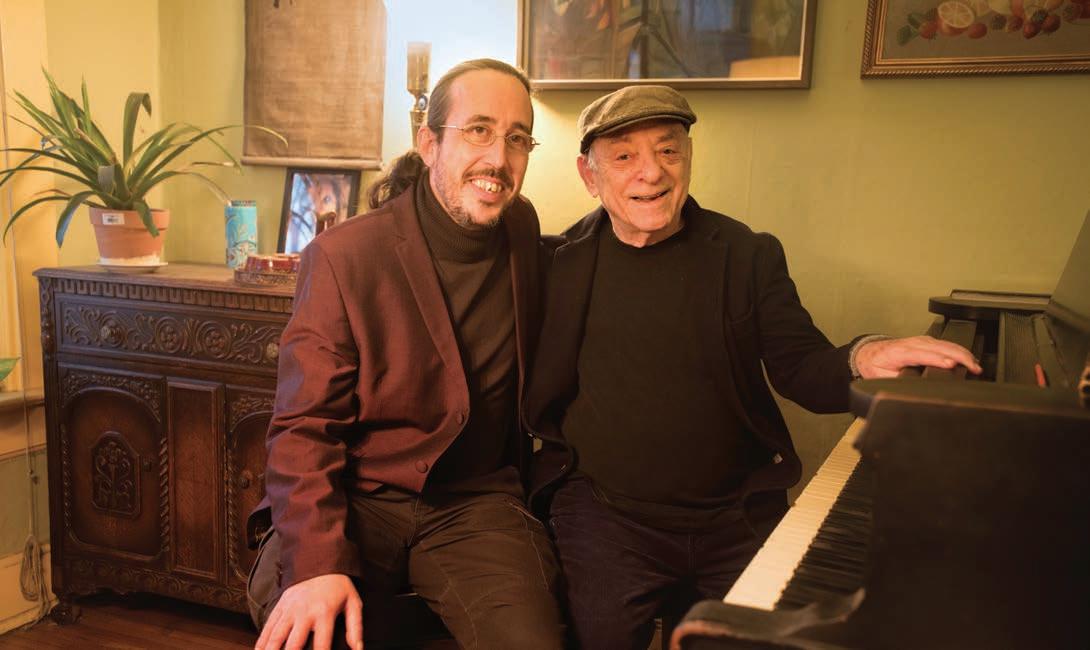
ERWIN HELFER CELEBRATION
Helfer will speak but not perform. Pianist Lluís Coloma headlines leading a group that includes singer Katherine Davis, saxophonist John Brumbach, guitarist Jeff Parker, and drummer Davide Ilardi. Reverend Scottie Williams opens, supported by pianist Elsa Harris, bassist Richard Gibbs, and drummer Kenard Pulliam. Sat 5/4, 7 PM, Myron R. Szold Music & Dance Hall, Old Town School of Folk Music, 4545 N. Lincoln, $24, $22 members. b
ERWIN HELFER IS A LOCAL HERO who has made a global impact. The 88-year-old musician is resolute in his devotion to early blues, jazz, and ragtime piano, and he’s taught his emotional, succinct style to legions of students. This month, Helfer’s Highland Park–based label, the Sirens, hosts a celebration of his music and influence with artists who share his aesthetic. Unfortunately, the past few years have dealt Helfer a series of harsh blows; after fighting severe depression in the wake of COVID, he su ered mini strokes that badly damaged his vision, leaving him unable to work in a concert setting. So while Helfer will be present at this Old Town School event, he intends to speak rather than play. But the program’s performers are his ideal musical messengers. Spanish pianist Lluís Coloma modeled his dynamic interpretations of boogie-woogie on Helfer’s lessons, as exemplified on their new duet album, Two Pia-
nos Too Cool—which also includes a few of Helfer’s fun compositions. Members of the Chicago Boogie Ensemble got together with Helfer for a jam session four years ago (released in 2021 as Celebrate the Journey), and they’ve continued to enhance that early jazz sound. Blues singer and longtime Helfer collaborator Katherine Davis will sit in with the group at this performance. The bill also highlights how Helfer’s spiritual phrasing crosses genres. The ensemble opening the show will be led by Reverend Scottie Williams Sr., pastor at the Christ Tabernacle Missionary Baptist Church in Austin, who sings powerful renditions of venerated gospel hymns on his recent album, Beams of Heaven. One of his accompanists, pianist Elsa Harris, shares Helfer’s wavelength, especially in her sturdy bass notes. Despite hard times, this teacher’s legacy of joy endures. —AARON
COHEN
FRIDAY3
Bongripper Pinebender, Immortal Bird, and Bleached Cross open. 8 PM, Metro, 3730 N. Clark, $25, $20 in advance. 18+
As the story goes, Chicago instrumental doommetal quartet Bongripper began with the desire to write a track longer than Sleep’s “Dopesmoker,” the single 74-minute song on their iconic 1998 album of the same name. Bongripper joked that Sleep had failed to completely fill up a CD and decided it’d be funny to top one off. This inspired Bongripper’s 2006 debut, The Great Barrier Reefer, which runs nearly 80 minutes. They sludged through the late 2000s with a string of releases that stomp like dinosaur feet, including 2008’s Hate Ashbury and 2010’s Satan Worshipping Doom. The band’s knack for sustain extends to their lengthy career: guitarists Dennis Pleckham and Nick Dellacroce, bassist Ronald Petzke, and drummer Daniel O’Connor started the band in 2005, and their lineup has remained unchanged ever since. Just as important, they’ve always done it their way: they’ve selfreleased all their own music, and in the early 2010s they launched Great Barrier Records to put out their work.
Bongripper seamlessly craft epic journeys through hostile moonscapes and spiky ruins of the imagination, and by their very lengthy standards, the new double LP Empty is their first full-length since 2018’s Terminal (though they did give us a snack to tide us over with the 2020 EP Glaciers ). The band drive the record’s four songs with gigantic, architectural riffs and a sublime sense of pacing, and you could read the track listing (disc one’s “Nothing” and “Remains,” disc two’s “Forever” and “Empty”) as a statement of nihilism, albeit one undercut by a white-knuckled clinging to life. The first and last tracks each exceed 20 minutes, which is enough time to feel transformed—especially when the snaky bass riff that slithers through “Nothing” at around the 17-minute mark leads you to the climactic slurry of its finale. The bill at this release party overflows with local rock and metal talent, including Pinebender, Immortal Bird, and Bleached Cross.
—MONICA KENDRICK
MEth. Usurp Synapse, We Weren’t Invited, Iwan, and Colacon open. 8 PM, Schubas, 3159 N. Southport, $15. 18+
When the Reader checked in with local noisemaking polymath Seb Alvarez in 2022, he’d turned his creative focus away from his band Meth. and toward the beats-blasted experimental side project Virgin Mother. In that context, the vocalist and multiinstrumentalist made a weirdo junkyard-fi racket with members of rising Rockford screamo outfit Frail Body and many other pals.
After a string of brain-melting EPs as Virgin Mother, Alvarez resurrected Meth., and this year the five-piece have returned in a huge way with their devastating new second full-length, Shame (Prosthetic). The record comes a half decade a er their bananas debut, Mother of Red Light , blurred the lines between hardcore, metal, industrial, and ambient music—and it’s a significantly different beast in terms of sound and emotional weight. In the lead-
40 CHICAGO READER - MAY 2, 2024 MUSIC PICK OF THE WEEK
Erwin Helfer (at right) with pianist Lluís Coloma, his partner on the album
Two Pianos Too Cool PAUL NATKIN
ALL AGES F
b
up to its creation, Alvarez faced mental health and addiction challenges, and his personal trauma permeates the album’s dark, cataclysmically bleak pummeling. Gone is the razor-sharp, riff-charged prowess of Meth.’s debut, replaced by a maelstrom that leans more toward noise and grindcore than toward metal and its myriad subgenres.
Shame doesn’t give you a moment to catch your breath—it bowls you over the instant the sludgecaked, feedback-draped guitar roar of opener “Doubt” tees off. Zack Farrar and Michael McDonald reach new levels of gnarly with their twin-guitar attack, and Andrew Smith’s drums sound Herculean in their Dale Crover-esque magnitude—but record’s heart and soul are in Alvarez’s caterwauling and intense growls. You’ll need a lyric sheet to decipher the bulk of his claustrophobic screams, but the song titles alone (“Cruelty,” “Compulsion,” the aforementioned “Doubt”) suggest he’s grappling with weighty
drummer Kenard Pulliam. 7 PM, Myron R. Szold Music & Dance Hall, Old Town School of Folk Music, 4545 N. Lincoln, $24, $22 members. b
Cindy Lee Freak Heat Waves and Laurie Duo open. 9 PM, Empty Bottle, 1035 N. Western, sold out. 21+
I have to resist the temptation to romanticize the spellbinding indie pop that Patrick Flegel has created via the drag persona Cindy Lee. Even the way they’ve released this music feels special. In late March, Flegel’s Realistik Studios label dropped the two-hour Cindy Lee album Diamond Jubilee and made it downloadable for free (with a suggested donation of 30 Canadian dollars) as a collection of WAV files on a cluttered GeoCities site. Flegel ran no promotional campaign for Diamond

topics through an abstract lens.
Despite its intense themes, Shame isn’t a complete downer, and listening to it can be cathartic— the mangled hardcore blasts of “Blush” and “Cruelty” are especially exhilarating. Meth. have been road warriors for much of 2024, and this Schubas date is a homecoming of sorts. It’s also a preshow to the second-annual screamo-soaked ZBR Fest (which Alvarez helps coordinate) at Subterranean on May 4 and 5. —BRAD COHAN
SATURDAY4
Erwin Helfer Celebration See Pick of the Week at le . This celebration of pianist Erwin Helfer doubles as a release party for Two Pianos Too Cool. Helfer will speak but not perform. Pianist Lluís Coloma, Helfer’s foil on Two Pianos, headlines leading a group that includes singer Katherine Davis, saxophonist John Brumbach, guitarist Jeff Parker, and drummer Davide Ilardi. Reverend Scottie Williams opens, supported by pianist Elsa Harris, bassist Richard Gibbs, and

participates in a continuum of contemporary Canadian indie music: Flegel previously fronted Women, a cultishly adored postpunk band that emerged in the late 2000s. Their ghostly songs found an early champion in singer-songwriter Chad VanGaalen, whose kitchen-sink approach to indie rock evokes a similar haunted vulnerability. Flegel began focusing on Cindy Lee during the heyday of Meg Remy’s U.S. Girls project, which refracts postwar pop through experimental noise. “Anytime she puts a record out, I’ll listen to it,” Flegel said in a November 2023 interview.
Miles Davis’s electric groups, creating a contemporary sound that reminds us the label “jam band” wasn’t always cause to shudder. Their hallmarks include taut tickles of plucked guitar strings, keys that wiggle like loose baby teeth, and strummed whimpers that stretch like molten syrup crystallizing into hard-candy threads. Is it cliched to say they have a far-out, cosmic sound?
Jubilee and has kept the album off major streaming services—with the exception of YouTube, where it’s available as a single long video. That GeoCities site also includes a statement chastizing Spotify founder Daniel Ek for stealing profits from musicians and investing more than $100 million in Helsing (an AI company that makes technology for military use), but good luck finding it without a CTRL-F. The whole page looks broken and disorganized, like a scrambled message from from the Internet of the 1990s. Even typing the word “GeoCities” into a browser window in 2024 feels like fooling around with a Ouija board. What restless spirit will answer? Listening to Diamond Jubilee feels the same way—I get pangs of unease alongside a magnetic draw. Cindy Lee renders the album’s melange of classic girl-group vocal harmonies, easygoing guitar melodies, and succinct postwar pop structures with great care and precision, but it all feels slightly askew—and clearly deliberately so. These delectably muddy-sounding songs could’ve been excavated from the basement of an abandoned studio from the Brill Building days, and they even seem to bear the smudged fingerprints of their rescuer. While honoring pop’s past, Diamond Jubilee also
This kind of music—messy, noisy, imperfect, but rooted in pop and full of personality—has found a home in our culture’s subterranean spaces at least since John Cale brought his sawing drones to the Velvet Underground. Cindy Lee occupies one of those spaces, which can partially explain the fanatical praise Diamond Jubilee has earned, whether in spite of or because of Flegel’s rejection of the usual promotional machinery. The current interest in these unruly, distinctively human sounds—which not by coincidence overlaps with the resurgence of shoegaze—might also be fueled by backlash to techbro dreams of a world where AI can output technically flawless music. All these factors are surely driving people to check out Diamond Jubilee , but what’s keeping them listening is that the songs are enchanting. Cindy Lee’s lovely, heart-wrenching “All I Want Is You” is one of the finest songs I’ve heard all year—and it’s just one of many I love on Diamond Jubilee —LEOR GALIL
WEDNESDAY8
Emergency Group The International Disassociation, Plastic Crimewave Syndicate, and Mac Blackout open. 8:30 PM, Sleeping Village, 3734 W. Belmont, $16.48. 21+
Emergency Group swim in the heady tides of prog rock, psych rock, and free jazz. These Brooklyn improvisers harness kaleidoscopic reverb and distortion with a creative generosity befitting one of
Last year Emergency Group released their first three records—Crisis in Mono, Inspection of Cruelty, and Venal Twin—and all faithfully commit to that approach. The first sounds like the ramblings of a jazz robot—but the sort of jazz robot who’d cameo on The Jetsons to coax Rosey’s iron panties off, not an AI personality funded by Elon Musk’s couch change. The latter two skew more toward rock and undulate with heaps of sticky-sweet, organic personality. Emergency Group’s fourth effort, February’s The Lagniappe Sessions , ventures away from improv by rearranging material by composer Sergei Prokofiev and heavy free-jazz supergroup Last Exit. “Mind Screen,” the first single and title track of an album slated for release in July, is more controlled and polished than anything on their previous releases, with tight, knotty drums and more lingering on uncanny sounds. Isn’t it fun when bands have range?
Emergency Group’s versatility is equally exciting and reliable. Their Sleeping Village appearance promises one hell of a show for jam-band lovers and free-jazz enthusiasts. —MICCO CAPORALE
THURSDAY9
Ben Katzman’s Degreaser Thicc Lizzy and Edging open. For more on Edging, see page 34. 9 PM, Empty Bottle, 1035 N. Western, $12. 21+
Countless Survivor contestants have turned to the camera during their confessionals to express the difficult and draining nature of the game—the physical and mental exhaustion, the lack of food, and the constant close proximity to others take an immense toll. Most cast members find this kind of precarity new and very destabilizing. But season 46 con-
MAY 2, 2024 - CHICAGO READER 41
MUSIC
Meth. VANESSA VALADEZ
Emergency Group CHRISTOPHER BRUNO
MUSIC
continued from p. 41
testant Ben Katzman inadvertently prepared for the meat grinder of Jeff Probst’s torture island for years—the music lifer has spent ample time touring in packed vans while surviving on three bucks of Taco Bell a day.
Katzman found his way to music because his mom brought him to the family astrologer seeking support in navigating his childhood speech and communication issues. The astrologer recommended music, and since that star-guided start, Katzman has worn many hats, including head of bedroom label BUFU Records, music teacher at School of Rock, and bassist for experimental rockers Guerilla Toss. Since 2014, Katzman has fronted his own outfit, Ben Katzman’s Degreaser. Their most recent album, 2023’s Transcendental Shreditation , is a relentlessly positive take on party thrash—in keeping with Katzman’s genuine Survivor gameplay and the frequent Metallica and Van Halen name-drops he makes on the show. Writing rippers about posers is a common activity in the Land of Leather Vests and Long Hair, but Katzman flips the script. In his eyes, the only poser to be concerned about is the poser in your head, bombarding you with internal criticism that only cages your potential. That sentiment could come off as mawkish or cliched in less skilled hands, but Katzman is an experienced cra sman when it comes to combining upli ing spirituality and music (see 2021’s Astrology 101 ). He also never forgets the most sacred part of heavy metal: the riffs. Here’s hoping Probst adds a circle-pit challenge to the next season. —ED BLAIR
SATURDAY11
Giggs 8 PM, Subterranean, 2011 W. North, $30. 17+
Giggs’s self-released debut full-length, Walk in da Park, is a landmark album in UK hip-hop history, and almost 16 years a er its release, the London rapper is making his first North American headlining tour.

Giggs still has the coiled menace and cool-headed flow that made his breakout single, the 2007 freestyle “Talkin the Hardest,” a cult phenomenon in his home country. The texture of his voice has changed, and these days he’s more likely to wield it with restraint—throughout the 2023 album Zero Tolerance (No BS), he conjures eerie anxiety with a husky whisper. He’s an economical lyricist, capable of creating effective moods in a short time, which makes the 63-minute run time of Zero Tolerance feel unnecessary—he could’ve delivered the same impact much more quickly with a good edit. Giggs’s strengths are best heard one song at a time. On “Incredible Sauce,” his voice skims across the surface of a bleary synth melody, haunted by a lurking bass drone that feels like something frighteningly huge that’s very far away—a creepy backdrop that makes his understated cool feel almost heroically nonchalant. —LEOR GALIL

Eiko Ishibashi Performing a live score of Ryusuke Hamaguchi’s film Gi . 7 PM, Logan Center for the Arts screening room, 915 E. 60th, RSVP recommended. F b
Even if Japanese songwriter, multi-instrumentalist, and composer Eiko Ishibashi collaborated with Japanese filmmaker Ryusuke Hamaguchi only once, I’d be grateful. When I saw Hamaguchi’s celebrated 2021 movie, Drive My Car, at the Siskel Film Center (it won an Oscar for Best International Feature Film a couple months later), Ishibashi’s pensive, understated score charmed me completely. Her taut and richly layered music is sometimes tranquil, sometimes pulsing and anxious, with pitter- pattering drums and comforting, resolute keyboards. She can make a shi in mood feel like a magic trick, so that by the time she’s brought us to a new place I’ve forgotten how we arrived. I’ve o en returned
Find more music listings at chicagoreader.com/musicreviews
to Ishibashi’s score for Drive My Car, so I’m glad to learn that she’s continued to work with Hamaguchi. His newest film, last year’s Evil Does Not Exist, features an Ishibashi score that Drag City will release in June. She uses strings to give the new material a disconsolate mood, but it never gets so tense and bleak that its tenderness doesn’t provide moments of relief. Hamaguchi and Ishibashi have also reimagined Evil Does Not Exist as a silent film, emphasizing Ishibashi’s music; in this form, it’s called Gi , and her performance here will be its Chicago debut. If the promise of seeing Ishibashi perform a live film score weren’t enough of a treat, somehow this event is also free.
—LEOR
GALIL
MONDAY13
Folly Group 8:30 PM, Hideout, 1354 W.
Folly Group’s “Paying the Price” is one of the best electronica-infused postpunk songs about shame, and it’s only a B side. The band’s singles—of which they’ve dropped plenty since debuting with “Fashionista” in 2021—land with the digital punch of Sonic the Hedgehog and the spooky polish of Joy Division. The London quartet are on their first American tour, supporting their debut full-length, January’s Down There! (So Young). In typical British punk fashion, much of the material meditates on alienation and anxieties of the existential and economic sort. Down There! is a promising first album; it has the thick, echoing bass lines and sprightly, reverb-drenched guitar licks you’d expect of postpunk, but it’s distinguished by its nods to trip-hop and drum ’n’ bass. If I’m being totally honest, though, what I love most about Folly Group is all the material the group intermittently released in the lead-up to the record. Those three years of singles and B sides are what really showcase the band’s club roots. “Paying the Price” is the B side to “I Raise You (the Price of Your Head),” an early teaser to their 2022 EP Human &
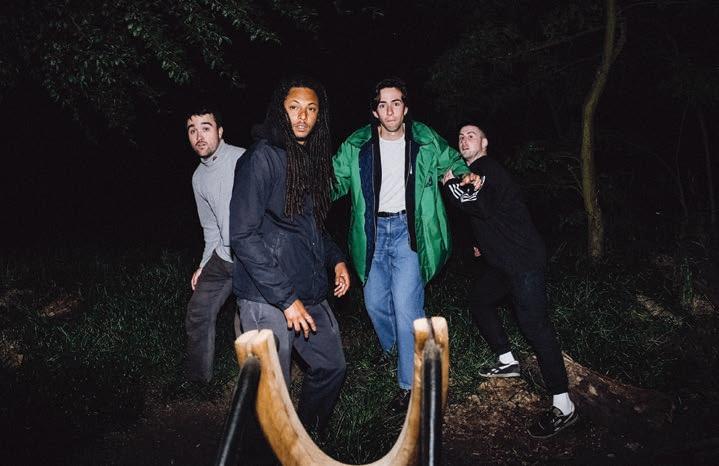
42 CHICAGO READER - MAY 2, 2024
Giggs COURTESY THE ARTIST
Eiko Ishibashi JIM O’ROURKE
Folly Group MATT RITSON
Wabansia, $20. 21+
MUSIC

Kind , which they released on Technicolour, then a new imprint of Ninja Tune (whose impressive roster includes electronic artists Metronomy, Octo Octa, and Thundercat). The gorgeously blunt synths that open the tune shiver at measured intervals throughout the track, while the arrangement layers a quickening bass line with more synths and a deliciously complex lattice of claps and mechanical and analog drums. In less than three minutes, Folly Group deliver more surprises than a Comcast Internet bill—and to much more satisfying ends. Their Chicago debut, which takes place at the Hideout, should be intimate and unrestrained in all the right ways —MICCO CAPORALE
Jim White & Marisa Anderson 8:30 PM, Constellation, 3111 N. Western, $20. 18+
To a large extent, classical music and popular music are separate traditions with distinct audiences. No one told folk guitarist Marisa Anderson and indierock drummer Jim White, though. Their second album together, the new Swallowtail (Thrill Jockey), is a mix of abstract exploration and gentle folk melody that thoughtfully wanders through a landscape that’s part experimental, part new age, part easy listening, and part psychedelic. Their collaboration is reminiscent of Miles Davis’s 1959 classic Kind of Blue in the way it simultaneously provokes and soothes. Anderson’s immaculate guitar and White’s gentle drum rolls and pulses rub the rough edges and idiosyncrasies off of blues and folk. Instead, the two create an odd, pristine, fluid surface, beneath which menacing koi circle repetitively, flopping out at odd angles here and there.
White and Anderson can’t ever be said to rock out, but there are moments, as on “Peregrine,” when their contemplation starts to surge into something like a groove or march. “Aurora” falls into a blissed-out trudge that dream-pop and shoegaze bands such as Damon & Naomi would recognize. The three-part “Bitterroot Valley Suite” is perhaps

most characteristic: it’s a kind of impressionist natural tone painting that nods to Debussy and the rolling percussion of American composer John Luther Adams before it wanders and surges off on its own trail. —NOAH BERLATSKY v Jim White CHEN HONG
Let’s Play!
MAY 2, 2024 - CHICAGO READER 43
Make time to learn something new with music and dance classes at Old Town School! We offer flexible schedules for all skill levels both in-person and online. oldtownschool.org Sign up for classes today at MUSIC CLASSES FOR ADULTS & KIDS LINCOLN SQUARE LINCOLN PARK SOUTH LOOP & ONLINE OTS_1_2V_ClassAd_072921.indd 1 7/23/21 2:21 PM
Marisa Anderson BUG
UPCOMING CONCERTS TO HAVE ON YOUR RADAR
EARLY WARNINGS

MAY
FRI 5/17
Nova Twins, Orisun 8 PM, Cobra Lounge b Dianne Reeves, Chucho Valdés, and Joe Lovano 8 PM, Symphony Center b
SAT 5/18
Doloroso, Kurtis James Band, C.Q. Lucius 8 PM, Color Club b Matisa, Jayah, Hotpretty, Linquency 9 PM, Smoke & Mirrors Webb Wilder 9 PM, FitzGerald’s, Berwyn
SUN 5/19
Guitar Wolf, Hans Condor, Kozmic Kicks 8 PM, Avondale Music Hall, 17+ Mumu Fresh 8 PM, the Promontory b
WED 5/22
Quelle Chris, Denmark Vessey, Cavalier 9 PM, Empty Bottle
THU 5/23
Me Nd Adam, Neuhaus, Saint Aubin 8 PM, Beat Kitchen, 17+
FRI 5/24
Burr Oak, Morpho, Pete Willson & the Rooks 8 PM, Schubas, 18+
Luke Winslow-King 8 PM, Robert’s Westside, Forest Park
WED 5/29
Choro Das 3 8 and 10 PM, Jazz Showcase b
THU 5/30
Chicago House Music Festival
Open House featuring DJ CtrlZora, DJ Kenny Ray, and more 4 PM, Chicago Cultural Center F b
FRI 5/31
Chicago House Music Conference featuring keynote discussion with Steve “Silk” Hurley and guest (moderated by First Lady), panel discussions, and more 5 PM, Chicago Cultural Center F b
JUNE
SAT 6/1
Chicago House Music Festival preparty featuring Gene Hunt, Stacy Kidd, DeeJay Alicia, and more 1 PM, Navy Pier F b Lyfe Jennings 6 and 9:30 PM, City Winery b
SUN 6/2
Chicago House Music Festival featuring DJ Wayne Williams, DJ Alan King, DJ Slugo, DJ Farley “Jackmaster” Funk, Slo ’Mo’s Queer Fam Pride Jam, and more 10 AM, Millennium Park F b Lyfe Jennings 7 PM, City Winery b Los Aptos 7 PM, Subterranean b
WED 6/5
Kaia Kater 7:30 PM, SPACE, Evanston b
SUN 6/9
Dannylux 7:30 PM, Park West b
FRI 6/14
Lyrical Lemonade Summer Smash day one featuring Cactus Jack, Big Sean, Destroy Lonely, Flo Milli, That Mexican OT, OsamaSon, Kami, and more 3 PM, SeatGeek Stadium, Bridgeview b
SAT 6/15
Lyrical Lemonade Summer Smash day two featuring Playboi Carti, Kodak Black, Lil Tecca, Lucki, Ski Mask the Slump God, Mick Jenkins, and more 1 PM, SeatGeek Stadium, Bridgeview b
SUN 6/16
Lyrical Lemonade Summer Smash day three featuring Chief Keef, Denzel Curry, Jid, Ken Carson, and more 1 PM, SeatGeek Stadium, Bridgeview b Rawayana 7 PM, Outset b
FRI 6/21
Amos Lee, Mutlu 7:30 PM, Auditorium Theatre b
b ALL AGES

Early Warnings newsletter: sign up here
SAT 6/29
Ghengar, Cyclops, Alienpark 10 PM, Concord Music Hall, 18+
SUN 6/30
Early November, Spitalfield, Cliffdiver 7:30 PM, Bottom Lounge, 17+
BEYOND
SUN 7/7
The Body & Dis Fig, Cel Genesis 9 PM, Empty Bottle
SAT 7/13
Neo Reunion 2024 featuring DJ Jeff Moyer, DJ Glenn Russell, DJ Bill Saveley, DJ Rob Kokot, DJ Suzanne Shelton, DJ Scary Lady Sarah, and “guest storyteller” Steve Silver 8 PM, Metro
FRI 7/19
Queers, Sloppy Seconds, Bollweevils, Raging Nathans 8:30 PM, Reggies Rock Club, 17+
SUN 7/28
The War and Treaty 7:30 PM, Thalia Hall, 17+
TUE 7/30
Juan Wauters 8:30 PM, Hideout
WED 8/14
Robert Glasper, J. Ivy 7 PM, Ravinia, Highland Park b
FRI 8/23
Umphrey’s McGee, Eggy, Stolen Gin 5 PM, Salt Shed (outdoors) b
SUN 9/8
Pulp, Escape-ism 8 PM, Aragon Ballroom, 17+
MON 9/23
The Breeders, Man on Man 8 PM, Salt Shed (indoors), 17+
WED 9/25
Stephen Sanchez, the Brook & the Bluff 8 PM, Salt Shed (indoors), 17+
SAT 9/28
Cowboy Junkies 8 PM, Cahn Auditorium, Evanston b
FRI 10/11
Josh Rouse 8 PM, Szold Hall, Old Town School of Folk Music b
MON 11/18
Actors, Bellwether Syndicate, DJ Greg Corner 8:30 PM, Chop Shop, 18+ v
GOSSIP WOLF
A furry ear to the ground of the local music scene
IN JUNE 2022, BEAT KITCHEN hosted the debut ZBR Fest Midwest , a two-day screamo marathon organized by Zegema Beach Records . Festival founder Dave Norman launched the label in 2013, building on the rapport he’d established with screamo bands through his blog, Open Mind/Saturated Brain . In 2017, he threw the first ZBR Fest in Toronto. Two years later, having moved to British Columbia, he put together the second ZBR Fest in Vancouver.
“It just did not do well—I lost a lot of money,” Norman says. “The plan was to have one more [in] Vancouver, and then we were gonna try it in Chicago—we were gonna go back and forth. But COVID canceled the 2020 Vancouver one, there was nothing in 2021, and the 2022 fest in Chicago was so bloody amazing that I said, ‘I am not doing it in Vancouver again.’” The third Chicagoan ZBR Fest will bring 28 bands to Subterranean this weekend.
ZBR’s history in Chicago goes back further than the festival. In 2017, the label released a cassette version of Funeral Designs, the debut EP from Chicago emoviolence unit Crowning. The following year, Crowning guitarist Dave Cullen opened a U.S. ZBR store, which helped mitigate the rising cost of international shipping. Cullen has since taken an even more active role in the label.
“In 2013, screamo was a very different beast,” Norman says. “It was being squashed by twinkly emo, and no one was giving it the time of day. That has since changed. It’s been a very . . . I wouldn’t say upward trajectory, ’cause it went down. It was very hard for the first few years. A er, like, the five-year mark it picked up—and after Cullen came on for ZBR USA, it really changed things.” Norman credits Dan Ozzi’s 2018 Summer of Screamo series for Vice with giving screamo a boost, and its current subcultural prominence means that Norman and his two ZBR Fest collaborators—Cullen and Kickstand Productions assistant talent buyer Seb Alvarez, who also leads experimental screamo group Meth. —have plenty of bands to choose from.
Norman says the ZBR Fest team started planning this year’s event last June. Its bill includes a couple bands from Spain (Crossed and Vibora) and Zmar from the Czech Republic, along with recently reunited Miami hard-

core group Capsule . “Dave Cullen in particular loves Capsule, because he’s a guitar player, and they’re very techy,” Norman says. “Getting Capsule was a surprise for me—I didn’t think we’d be able to pull that off.” Capsule close the fest’s second and final night on Sunday, May 5. Alvarez’s band Meth. headline a ZBR preshow at Schubas on Friday, May 3. Two-day tickets cost $65, and the SubT shows are 17+.
GOSSIP WOLF IS NUTTY ABOUT Chicago punks Spread Joy due in no small part to guitarist Raidy Hodges, whose nervy playing gives the band’s songs their irresistibly jittery propulsion. In the newer project Pleasant Mob, Hodges takes a much more relaxed tack, spearheading an easygoing, upli ing style of psychedelic-tinged garage pop. The five-piece band that backs him on Pleasant Mob’s first single, released by Feel It Records in 2022, has been completely replaced for the band’s self-titled debut album: drummer Hana Chew, guitarist Timothy Makowski , bassist Tessa Sebastian, and keyboardist Daniel Lynch play on the sharp and spunky ten-track record, which came out via Inscrutable Records a couple weeks back. This wolf particularly digs the cold postpunk keys and punchy girl-group vocal harmonies of “I Don’t Know.” On Sunday, May 5, Pleasant Mob play the Empty Bottle, opening for Saint Louis group Soup Activists, whose mastermind, Martin Meyer (formerly of Lumpy & the Dumpers), recently launched the Inscrutable label. Tickets cost $15, and the show starts at 9 PM.
NORTHEASTERN ILLINOIS University’s noncommercial free-form radio station, WZRD , fi rst hit the airwaves on July 8, 1974, and it celebrates its 50th birthday with a free show at Martyrs’ on Saturday, May 4. Outsider dance-pop project Charlie Otto & His Gear headlines a lineup that’s almost as eclectic as a WZRD playlist: it also features jazz- fusion group Sons of Ra , oddball early punk band Silver Abuse, and Mark Vickery’s reflective but rocking Cosmic Bull. The Wizards, as the station’s student and volunteer staff call themselves, also promise on-site vendors and free swag bags; the show starts at 7:30 PM. —LEOR
GALIL
Got a tip? Tweet @Gossip_Wolf or email gossipwolf@chicagoreader.com.
44 CHICAGO READER - MAY 2, 2024
Umphrey’s McGee (plus Huey Lewis third from right) COURTESY IVPR
SAVAGE LOVE
SEX AND RELATIONSHIPS
Quickies
Long-distance, butt stuff, and alternatives to Savage
By DAN SAVAGE
Q: I’m a 53-year-old straight woman. I’ve been talking with a guy online for three years—text, voice, video. I am in love with him. He is my daily companion and he says he loves me. He live 269 miles away. He doesn’t want to meet me (although he is not married) and he lives alone.
I’ve tried going out with other people but I am stuck on him. I definitely want more. Do I leave him or keep trying?
a: Can you leave someone you’ve never met? I’m not sure—but you can do the next best thing(s): you can block his number, you can block him on your socials, you can block his email address.
Q: I have a disgusting and embarrassing problem. I have chronic irritable bowel syndrome (IBS), and every time my husband and I want to have penis-in-vagina sex doggy-style, my butt smells and he loses his erection. I know: cringe
I have tried a number of things: changes to my diet, a treatment for small intestinal bacterial overgrowth (SIBO), a colonoscopy and endoscopy—even using a bidet. Nothing has helped. The gastroenterologist proposed not having doggy-style sex, but that’s my favorite position! Please help.
a: You’ve tried everything— including a bidet (a sign of true desperation)—and nothing has worked. So, maybe it’s time to think outside the health care and health interventions box. My suggestion: get your
husband a rubber hood and a gas mask with a long breathing tube (hell, get his and hers rubber gimp suits and masks) and your husband can fling his breathing tube over his shoulder or get a longer one that runs down to the floor.
You won’t be able to have doggy-style sex spontaneously if you need to get dressed in full rubber before you get started—but it’s your favorite position, so why not make it an occasion?
Q: I’m in love with my sex worker. Can it ever be more than it is?
a: It could—if the feelings are mutual and you’re not one of those guys who wants “his” sex worker to stop seeing other clients. You would be dating her, not taking possession of her.
Q: How to survive going long-distance—suddenly but temporarily—at the beginning of a relationship?
a: Lean into the big dirties— dirty texts, dirty pics, dirty video chats—and give “Don’t Ask, Don’t Tell” a chance.
Q: Recommendations for other sex advice columnists with a female perspective?
I’ve been reading your stuff for years. Lots of value, but I need a fresh perspective.
I know my specific questions would piss you off and I wouldn’t get good advice. The outline is that I, a cishet woman in her late 30s, have recently concluded that I don’t LIKE men. At all.
I’m also still a virgin. I don’t know where this leaves me.
I’m not asexual. The idea of fucking a stranger literally makes me feel ill with anxiety. But I don’t want to build an “emotional connection” with a man. Too much bitterness and mistrust. So, anyone you’d care to pawn me and my problems off on?
a: My recommendations: Lori Gottlieb, Carolyn Hax, Damona Hoffman, E. Jean Carroll, Xaviera Hollander, and—still, always, forever— Judith “Miss Manners” Martin.
Find Lori Gottlieb at lorigottlieb.com.
Carolyn Hax writes for the Washington Post at washingtonpost.com.
Damona Hoffman is at damonahoffman.com.
E. Jean Carroll has a Substack at ejeancarroll.substack.com.
Find Xaviera Hollander at xavierahollander.com.
Judith Martin is at missmanners.com.
Q: How to get over feeling self-conscious about poop during anal when my partner doesn’t care?
a: It’s a butt—as I’m sure you’re aware—and regular butt stuff (it’s an exit) sometimes derails irregular butt stuff (it’s an entry). Take fiber supplements, douche, only have anal when you feel like you’re good to go, and, if the worst should happen . . . jump in the shower and pivot to something else. v
Ask your burning questions, download podcasts, read full column archives, and more at the URL savage.love. m mailbox@savage.love
















































































































MAY 2, 2024 - CHICAGO READER 45
A premier contractor serving Chicago and the surrounding areas since 1976. We o er remodeling, repairs, maintenance work, spray foam installation, and much more. Contact for more info! (773) 528-1671 | thebuildingdoc@hotmail.com | garyjbuilder.com HOME IMPROVEMENT To advertise, e-mail ads@chicagoreader.com Local Goods & Services platform the platform BOOKS EXTRA! EXTRA! READ ALL ABOUT IT! The story of Mozart’s centuries-delayed encore is available in standard printed format exclusively at AMAZON.COM Get a discounted price on a year-long Platform ad for your book! Contact us at ads@chicagoreader.com for information! BOOK! ADVERTISE YOUR NEWBOOKRELEASEBY Dr. Sina Leslie Smith, MD, LAc RELEASE BY
CLASSIFIEDS
JOBS
Health Care Service Corporation seeks Business Analyst (Chicago, IL) to work as a liaison among stakeholders to elicit, analyze, communicate and validate requirements for changes to business processes, policies and information systems.
REQS: This position reqs a Bach deg, or forgn equiv, in Tech or Bus Admin or a rel fld 2 rs of exp as a proj mgr, sys analyst, or a rel position. Telecommuting permitted. Applicants who are interested in this position should submit a complete resume in English to hrciapp@bcbsil. com, search [Business Analyst 2 5 . EOE .
Partner – Chicago, IL
Lead and manage domestic and cross-border infrastructure and other energy-related projects, including renewable energy. Represent private and public investors, developers, utilities, and sponsors in connection with the development, acquisition, sale, and financing of infrastructure and energy assets in the United States and abroad. Review, prepare, analyze, and negotiate legal agreements for these transactions. Assign and review legal research, and provide legal advice to address the complex legal problems that arise in these transactions. Supervise 7 Associate lawyers. Monday - Friday hours per week. Requires a United States Juris Doctor (J.D.) or alternatively a Master of Laws (LL.M.) degree, or the foreign equivalent; admission as a lawyer to the Illinois Bar; and eight years of experience as a projects lawyer with a focus on the energy sector. Also requires passing background checks. Send resume and cover letter to Jenna Weissman, Norton Rose Fulbright US LLP, 1301 Avenue of the Americas, ew ork, . o phone calls or agencies.
A.T. Kearney, Inc. seeks earney nified Collaboration Specialist(s) to work in Chicago, (with extensive travel and/or possible relocation in unanticipated locations throughout the U.S.) lead the planning, design, implementation, and ongoing support of unified collaboration platforms. Collaborate with global, regional colleagues, internal business partners to maintain awareness of business requirements and opportunities that may leverage unified collaboration capabilities. Requires domestic travel up to 5 to . elecommuting is permitted. Requirements: Bach’s degree or frgn equvlnt in Computer Science, Engineering, Engineering Management
or rltd fld and 5 yrs rlvt exp. Exp to include . Fundamental understanding and management of network infrastructure, audio & video conferencing, video codecs and bridges including TCP/IP, DNS, .323, PP, oS, Fax, E , SD , P S. 2. Experience deploying, managing, and administering Cisco Unity, Voice gateways: Cisco, Audio Codes; Cisco Jabber; Microsoft Teams Client; Telepresence; Cisco media gateways; Inbound/outbound routing using PRI and SIP trunks; Fax elay .3 fax control protocol; and ightFax. 3. Experience providing desk side and remote support for issues or failures impacting soft phone, unified collaboration, audio and video conferencing. . Experienced many and configure audio codecs . 2 , . 22. . . 5. Experience configuring and managing global E. dial plans. Apply online at www.kearney.com eference 2 .
Security Specialist VDV Royal Trans Inc. seeks a Security Specialist in Schaumburg Illinois to conduct post-accident and post-injury investigations. Must have one year of experience in transportation specialty. Please send resume to: info@vdvroyal.com.
Accountant Corrugated Supplies Company, LLC seeks Accountant in Bedford Park, IL to drive accnting operations w/ continus prcss imprvmnt. Send Cover Letter and Resume to: lnovak@vancraft. com, Subject ef ACC2
Financial Engineer –Options Modeling HTAA Holdings LLC Chicago, IL Design and support automated, quantitative-driven stock, option, and futures trading systems. Continually design, test, evaluate and monitor the implementation and performance of existing and new systems. Manage risk and trade portfolio of index, single name equity, and ETF options. Job duties may be performed remotely 2 - of the time. Must have a Master’s degree in Financial Engineering, Mathematics, Statistics or related field. Must be a Chartered Financial Analyst (CFA). Must have one (1) years of experience as Financial Engineer, Quantitative Analyst or Model Quant. Must have one (1) years of experience in options trading and risk management experience. ualified candidates should email their resumes to resumes@ hulltactical.com and reference job code FEO 2.
Slipstream Group Inc. seeks Field Outreach Manager in Chicago, IL to develop & track KPIs,
serve as subject-matter expert in energy efficiency programs, prepare & present reports. Requires bachelor’s in sustainable mgmt, environmental studies, related or equiv.; mos of exp. as outreach manager, field manager or sustainability occupation in a non-profit setting; drivers’ lic.; Covid- vaccine. Exp. must include client relationship development in sustainability field. 5 travel in Chicago area. Can telecommute from Chicago area. Send CV to hr@slipstreaminc.org.
Health Care Service
Corporation seeks Senior Technology Delivery Consultant (Chicago, IL) to assist PDL with end-to-end delivery of Tech programs and projects to ensure successful execution and alignment with business needs. REQS: Bachelor’s degree, or foreign equivalent, in IT, Com Sci, or Data Analytics or a related field plus 5 ears of experience as an IT Specialist or related occupation. Telecommuting permitted 2 days a week. Applicants who are interested should submit a complete resume in English to hrciapp@ bcbsil.com, search [Senior Technology Delivery Consultant 2 . EOE. .
Senior Network Engineer PEA Capital anagement, LLC seeks Senior Network Engineer in Chicago, IL to be responsible for bldg’g, config’g, & evolv’g PEA ’s high bandwidth, & low latency netwrks across global offices & data centers.
Reqs: Master’s degree or foreign equiv in Comp. Eng’gg, Electrical Eng’gg, or rel. field & 2 yrs of postbacc. exp. as etwrk Ops Engineer, Tech Support Engineer, or rel. role. Exp. must incl. netwrk device mng’mnt; netwrk troubleshoot’g & maint.; Python; Ansible; inux; P; OSPF; & ulticast communication. Email resume aernst peak .com.
PEAK6 Capital Management LLC seeks Trader in Chicago, Illinois to test and analyze trad’g strategies on the market & identify trading opportunities.
Reqs. Bachelor’s degree or foreign equiv in Stats Econ or rel. field & 2 yrs of post-bacc. exp. as rader or rel. role. Exp. must incl. apply’g adv options theory, mnging a portfolio; tech risk-assessment skills & perform’g deep dives into analyt, & research-based data. Pos’n will be HQ’d in Chicago, IL, but is a telecommut’g pos’n, allowing for remote employment from various unanticipated worksites t/o the U.S. Email resume: aernst peak .com .
Lead Data Engineer
Thoughtworks seeks Lead Data Engineer
(Professional Services) to work in Chicago, IL & various unanticipated U.S. locations to develop modern data architecture approaches for largescale, custom-designed, enterprise-level business intelligence and analytics projects using software development languages, such as Python and Java, and cloud-based data management technologies. Must have Master’s in Computer Science, Computer or Electrical Engineering, Information Systems, or related field. ust have 2 years exp. in the job offered, Consultant, Software Architect/ Engineer, or related IT position. Must have at least twenty-four (2 ) months experience in ( ) Participating at all stages of the data management solutions delivery life-cycle, including analysis, development, testing and deployment. Must have at least twelve ( 2) months experience in ( ) Developing applications that are cloud ready/cloud-native using at least one of the primary cloud providers (A S, CP, or Azure); (2) Working with data warehouse architectures, data lake architectural patterns, and streaming data architectures for real-time processing; (3) Using Agile development methodologies including Continuous ntegration, Extreme Programming, Continuous Delivery, Test-Driven Development and pair programming; (4) Serving as a liaison between client and development team to define scope and technical direction of the project including requirements gathering and design discussions and managing project deliverables and timeframes; (5) orking on projects with distributed teams, including managing coordination across countries and time zones; and ( ) Coaching and mentoring junior developers and data engineers in all aspects of data solution development, including Agile development methodologies. At least travel across U.S. Send resume to ijobs@thoughtworks. com w Job D DE-2 2 .
A.T. Kearney, Inc. seeks earney usiness Office Coordinator(s) to work in Chicago, IL to Track all PERL-related leads and proposals. Analyze monthly budget and accounting reports. Consult with managers to ensure that budget adjustments are made in accordance with program changes. Telecommuting permitted: Hybrid work schedule available with manager approval. Must live within a reasonable commuting distance of the Kearney office based in Chicago, IL. Requirements: Mastr’s degree or frgn equvlnt in Finance, Economics, or Business or rltd fld and yrs exp in the fld of Finance, Economics, or Business or rltd fld.
Alternatively, the emp will accept a Bach’s degree or frgn equvlnt in Finance, Economics, or Business or related field and yrs of exp in the fld of Finance, Economics, or Business or rltd fld. Exp to include
1. Construction management- space planning/ design, supervising build outs, vendor selection/ tenders, construction documentations/standards/ regulations and quality control, and budgeting.
2. CAD, eb Design and Adobe for construction management. 3. Financial analysis analyzing financial data, calculating profitability, variance analysis, budgeting and forecasting pertaining to client billable work -creating, monitoring, analyzing developing budgets, forecasting revenues and expenses, developing budget models. 4. Financial reporting, cost controlling and regulations including knowledge of financial reporting standards, applicable tax laws, auditing standards, and compliance requirements.
5. Corporate Finance and Software Experience including SAP, Oracle, Quick Books, 1C, IFRS, GAAP, Trello for accounting. . Financial analysis and accounting including analyzing financial data/ statements, financial reporting (internal and external), payroll calculation and processing. Re-balance fiscal and physical resources between different areas. Apply online at www.kearney.com. eference Job D 25 .
IT Technician IT Technician: Resolve tech problems. Train users to max productivity. ew tech impl. Train users in both new & existing comp systems. Troubleshoot hardware, software, network issues. evise existing systems, suggest improvements. Analyze employer’s needs, design software solutions. S. 2 yrs exp. es est ind Express, nc; 5 S Archer d, edford Park 5
Coyote Logistics, LLC Coyote Logistics, LLC seeks Marketing Data and Insights Analyst in Chicago, IL. Telecommuting permitted. Apply @ www.jobpostingtoday. com
Validation Engineer Validation Engineer, AbbVie Inc., North Chicago, IL. Responsible for creation, planning & approval of validation documents to support validation requirements. Responsible for participating in implementation & maintenance of effectiveness of the uality system to meet applicable regulatory requirements. Adhere to Good Manufacturing Practices (GMPs), SO 3 5, SO , & 2 CF 2 . Ensure that practices & procedures comply with company policies & applicable regulations for the Quality areas.
Execute tasks as required to implement Validation Master Plan & maintain in a validated state the equipment, utilities, facilities, automated process controllers, information systems, cleaning processes, manufacturing process to demonstrate that products will perform consistently as intended. Supervise contract validation resources in the timely completion of activities in his/her area of responsibility. Represent department in quality audits, both internal and external, regarding validation & engineering compliance.
Perform Installation Qualification ( ), Operational ualification (O ), Performance ualification (P ), & Process Performance ualification (PP ). Participate in implementation & maintenance of effectiveness of Quality System to meet all applicable regulatory requirements. Ensure that all practices & procedures comply with company policies & applicable regulations for the Quality areas. Document control of nonconforming products & implementation of corrective & preventative actions (CAPA) to address identified root causes compliant with SO 3 5 standards & 2 CF 2 . . Execute process monitoring plans based on quantifiable production & quality metrics. Participate with plant & external engineering resources on new installations & systems to ensure that factory, site, & commissioning documentation is in accordance with current Good Manufacturing Practices (“cGMP”) & supports validation. Must possess a Bachelor’s degree or foreign academic equivalent in Biology, Chemistry, Biomedical Engineering, Mechanical Engineering or related scientific or engineering field plus an academic or industrial background in: (i) Good Manufacturing Practices ( Ps), SO 3 5, SO , & 2 CF 2 ; (ii) nstallation ualification ( ), Operational ualification (O ), Performance ualification (P ), & Process Performance Qualification (PPQ); (iii) documenting control of nonconforming products & implementation of corrective & preventative actions (CAPA) to address identified root causes compliant with SO 3 5 standards & 2 CF 2 . ; & (iv) executing process monitoring plans based on quantifiable production & quality metrics. Apply online at https:// careers.abbvie.com/en & reference EF23 3S
TheMathCompany is seeking a Associate Principal – Customer Success for Chicago, IL office. anage existing client engagements & drive growth in new tech & accts. To apply, send cover letter & C to uvaraj.r themathcompany. com. eq. 2
Accurate Group, Inc., Civil Engineer II in Lincolnshire, IL Responsible for construction, inspection, and reporting to resident engineer. Managing projects, assisting with improvements to project management process and business systems, collaborating with client counterparts, conduct site inspections and prepare reports, implement applicable O . Collab w subcontractors. Bachelors in civil engineering and months experience in civil engineering required. ust have DO certification. , 5 annually Contact: Syed Hussaini at syedh@accgi.com
Medline Industries, LP in Mundelein, IL has multiple openings: A.) Sr. IS Developer Analyst(s) (MFG) to dsgn & implmnt soltns that sup’rt the mfg divisions. o trvl. F benefit avail 3 days/wk. Provides on- call sup’rt during non-work’g hrs. Apply at: https:// medline.tale o.net/careersection/md_confidential/ jobapply.ftl?lang=en& job=IN F01011K B.) Sr. Business Systems Analyst(s) (Warehouse Automation) to implemt WHS automat’n in our logistics landscapes. No trvl. WFH benefit avail. Must be in office 2 days wk. Apply at https://medline.taleo. net/careersection/ md_confidential/jobapply. ftl?lang=en&job= F 2 Daycare Center Manager Day Care Center Manager: Manage operations of day care center. Acquiring new clients/students. Build relationships & long-term coop w/parents. Customer support. Prep contracts, prep docs for accountant. Market services through social media, other advertising tools. Create, oversee budget & expenses. Process intake of new students, employees. 2 yrs’ exp as manager. Bachelor’s degree in any business-related field. es iLearn Center of Chicago, C , 2 5 Ashland Ave Chicago
Assistant Professor , Chicago. Teach undergrad/ grad courses in mechanical/aerospace eng. Initiate, sustain a research program. PhD in mechanical, materials, or aerospace eng. or closely related req. Mail res., cov. let. to Melissa Munoz-Rush, Manager, Human Resources, Illinois Institute of Technology, 35th St., Ste. 3 , Chicago, .
Sr. Software Application Developer Federal Home Loan Bank Chicago is seeking a Sr. Software Application Developer in Chicago, IL. Create & maintain financial software. Remote work allowed up to to time. Must live w/in normal commuting distance of worksite. Send resume to SMorgan@fhlbc.com.
46 CHICAGO READER - MAY 2, 2024
JOBS PROFESSIONALS & SERVICES AUDITIONS MATCHES WANT TO ADD A LISTING TO OUR CLASSIFIEDS? Go to classifieds.chicagoreader.com
Operations Manager
Operations Manager: Woodridge IL. Direct, coord activities of employees to obtain optimum efficiency in sales & ops to max profits. Coord marketing, sales. Review financial statements. Direct admin activities directly related to prov supp services for transp industry. Prep staff work schedules & assign specific duties. Process payroll. Bachelor’s in Business Mgnt. Fax: Line Transportation Inc; 630-755-4378
(Huntley, IL) Hiwin Corporation seeks Software Engineer w bach or for deg equiv in CS or rel fld & 3 yrs exp in job offerd or in sftwr dev. Must have exp w SDLC phases in sftwr des & deploymt; Agile/ Scrum meth for sftwr dev; & Angular 11, React.js, HTML, CSS, JavaScript, & jQuery. Apply to HR, 12455 Jim Dhamer Dr, Huntley, IL 60142 or https://hiwin. com/company/careers/
Morningstar, Inc. seeks Software Engineer (multiple positions) in Chicago, IL to write Python code, by following software development best practices & computer science fundamentals (30%). BS deg in Computer Science, Computer Engineering, or rltd field & 2 yrs of relevant exp req’d. Add’l specific skills req’d. For position details & to apply, visit: https://www. morningstar.com/careers; ref. job ID REQ-044419.
Data Scientist Groupon, Inc. is seeking a Data Scientist in Chicago, IL w/ the following responsibilities: Design & build scalable computing systems for collecting, integrating, & processing large sets of structured & unstructured data from disparate sources & feed the results of the computations to other downstream systems w/in established service level agreement timeframes. May telecommute up to 100% from any location in the U.S. Apply at www. grouponcareers.com by searching keyword R28330
Medical Laboratory Technologist Clinicare Lab Ltd. seeks a Medical Laboratory Technologist. Mail resume to 11S270 S Jackson St, Suite 103, Burr Ridge, IL
Morningstar Research Services LLC seeks a Lead Software Engineer (multiple positions) in Chicago, IL to develop, implement, maintain, & lead efforts on quant solutions & tools that drive investment discussion-making process for company’s client base. BS deg. in Computer Science, Computer Engg, Electronics Engg, or rltd Engg field, or foreign equiv & 5 yrs of rlvnt soft engg exp. Alternatively, MS deg. Computer Science, Computer Engg, Electronics Engg, or rltd Engg field, or foreign equiv & 3 yrs of rlvnt soft engg exp.
Add’l specific skills req’d. For position details & to apply, visit: https://www. morningstar.com/careers; ref. job ID REQ-043821.
IT Technical Specialist IT Technical Specialist, AbbVie Inc., North Chicago, IL. Provide in-depth technical expertise & direction in development and support of Supply Chain Planning systems/programming requirements & processes (e.g. new, enhancements or maintenance), in preparation of application system specifications, & in the development, testing, & implementation of efficient, cost effective application solutions. Work with Supply chain planning system JDA including JDA Demand Planning Solution, JDA Collaborate, JDA Fulfillment & ESP modules. Utilize SaaS Demand. Responsible for compliance with applicable Corporate & Divisional Policies & procedures. Serve as technical expert or lead projects/programs & technical staff to develop, test & implement significant new products, or operational improvements or devise new approaches to problems at the division/business unit. Conduct investigation activity/research & give technical advice to adoption or integration of new technologies & their business impact. Work with LCM for master data issues & maintenance. Utilize knowledge on Data Warehousing concepts such as Star Schema & Snow-flake Schema. Experience with Agile methodology & tools like Jira & Service now. Utilize experience with Hadoop platform & Hue. Utilize experience with Lead in the development of standards & procedures & publish/ communicate findings via IOI’s, presentations, white papers, etc. Provide expertise to develop and maintain SCCM solution. Experience with Windchill for document management. Enhance design and conduct performance monitoring & capacity planning. Install, test & upgrade releases & associated products. Experience with SAP Sales order processing, Purchase order processing & Inventory management. Evaluate & recommend new software, utilities, & tools. Set strategy for implementing new technologies. Responsible for establishing the way the program works (configuration responsibilities) in specialized systems (JDA & BI solutions). Utilize BI (Business Intelligence) reporting tools such as COGNOS, QlikView, & QlikSense to enhance & change the way program works using technical configuration skills in JDA software. Responsible for total project scope, budget, completion within budget constraints & schedules completion date. Responsible for successful and timely completion of all tasks/projects under direct & matrix con-
trol. Post completion audit of project after implementation to verify expected benefits vs. costs, both development & operating. Must possess a Bachelor’s degree or foreign academic equivalent in Computer Science, Engineering, Information Technology, or a related field of study with at least 6 years of practical experience in the following: (i) experience working with Supply chain planning system JDA including JDA Planning Solution, JDA Collaborate, JDA Fulfillment and ESP modules; (ii) experience with SaaS Demand; (iii) utilizing knowledge on Data Warehousing concepts such as Star Schema and Snowflake Schema; (iv) utilizing BI (Business Intelligence) reporting tools such as COGNOS, QlikView, and QlikSense to enhance and change the way program works using technical configuration skills in JDA software; (v) experience with LCM, SCCM and Windchill; (vi) experience with SAP Sales order processing, Purchase order processing & Inventory management; & (vii) experience with Agile methodology and tools like Jira, Service Now and Hue. Apply online at https:// careers.abbvie.com/en & reference REF24101S.
HR Manager Wells Plumbing and Heating Supplies, Inc. Chicago, IL. Cond RP & PEQ, devlp & impl EE recognit prgm, res & anal benf pkg, mgt HR bdgt, devlp & impl HR policy, oversee EE benf prgm, anal EE relat & cond rept, reslv EE dispts. Req’s MS in HR, MBA &5 Yrs as HR Mgr. w exp. in TAS &TM, C&B, EE relat. Mail res to HR Dept. Wells Plumbing and Heating Supplies Inc., 916 W 21st St, Chicago, IL 60608 or email to hr@ wellsplumbing.com.
Associate Business Systems Consultant Associate Business Systems Consultant, AbbVie Inc., North Chicago, IL Responsible for delivering precise functional specification to include process workflows, business rules, interface design specification and source to target data mapping. Deliver and support SAP solutions related to Finance and Costing area and facilitate design sessions to define the data design and processes in support of business requirements. Coordinate and lead the end-to-end execution of Record to Report (RTR) solutions, related projects and technology implementations. Introduce best practice and process improvement ideas. Gather business requirements, perform data related analysis, investigation and audits. Responsible for Project Planning, Requirement scoping, effort estimation, solution and design reviews, change management and business stakeholder management. Employ experience in all phases
of a project in the areas of General Ledger (FI-GL), Account Receivables (AR), Account Payables (AP), Asset Accounting (FAA), Cost Element Accounting (CEA), Cost Center Accounting (CCA), Internal orders (IO), Product Costing (PC) and Profitability Analysis (CO-PA). Responsible for the Asset Accounting Process, including IFRS and USGAAP standards, Investment management and project systems configuration, testing and support process. Employ understanding of business processes, accounting principles, systems configuration, enhancements, and data migration processes. Employ experience in Master Data Mapping / Migration from Legacy system to SAP R/3 using LSMW and Batch input. Responsible for creating Extract files, Writing Transform queries, and loading files utilizing SAP FDW and custom report for extraction and LTMC tools for loading files. Understand and adhere to corporate standards regarding applicable Corporate and Divisional Policies, including code of conduct, safety, SOX compliance, data security, and the software development lifecycle. Must possess a Bachelor’s degree (or foreign academic equivalent) in Finance, Accounting, Computer Science, Information Technology, Engineering, or highly related field of study & 5 years of related experience; Will accept a Master’s degree (or foreign academic equivalent) in Finance, Accounting, Computer Science, Information Technology, Engineering, or highly related field of study & 2 years of related experience. For each alternative, must possess at least 2 years of experience in: (i) delivering and supporting SAP solutions related to Finance and Costing area and facilitate design sessions to define the data design and processes in support of business requirements; (ii) Project Planning, Requirement scoping, effort estimation, solution and design reviews, change management and business stakeholder management; (iii) all phases of a project in the areas of General Ledger (FI-GL), Account Receivables (AR), Account Payables (AP), Asset Accounting (FAA), Cost Element Accounting (CEA), Cost Center Accounting (CCA), Internal orders (IO), Product Costing (PC) and Profitability Analysis (COPA); (iv) Asset Accounting Process, including IFRS and USGAAP standards, Investment management and project systems configuration, testing and support process; (v) Master Data Mapping / Migration from Legacy system to SAP R/3 using LSMW and Batch input; & (vi) creating Extract files, Writing Transform queries, and loading files utilizing SAP FDW and custom report for
extraction and LTMC tools for loading files. 100% telecommuting permitted. Apply online at https:// careers.abbvie.com/en & reference REF24102W. Salary Range: $145,039.85 - $157,500 per year
Senior AEM Engineer Senior AEM Engineer, AbbVie Inc., North Chicago, IL. Responsible for building multi-brand component systems, platform configuration, release management & Cloud Service implementation utilizing Adobe Experience Manager (AEM). Design & develop complex use-cases such as dynamic components, core component extensions, & API integrations. Work on Multisite Manager (MSM) so as to get same structure & content on all the versions of website. Develop custom components related to parses using CRXDE-lite for the component structure & CRXDE for scripting. Assist with authoring complex components on pages. Responsible for supporting application postproduction & maintenance, attending daily meetings & working in an Agile Environment. Monitor & support AEM environments by reviewing Splunk logs errors reported by Adobe & follow up with project teams. Resolve issues by working with AEM developers to triage issues in the lower environments surface advanced issues to the team. Coordinate & communicate service packs & patches. Manage installation of service packs & security patches & coordinate testing with project teams. Manage & deploy dispatcher configs by supporting/resolving dispatcher config issues. Monitor & support lower environments by restarting bundles & performing other admin console tasks for application teams in the lower environments when requested. Move content packages from upper environment to lower environments. Work on sprint stories & manage/verify deployments. Work on Components, Templates, Taxonomy, metadata management, Forward & Reverse Replication, Workflows, Content Publishing, Tagging, Deployment (Maven). Participate in implementation of AEM solutions including design, definition, & development of AEM content type models, workflows, templates, components, & use permissions. Build & iterate a comprehensive set of shared components & services for sites & products on AEM Sites. Work to evaluate & implement integrations with other Adobe or third-party products. Employ experience building service-oriented architecture & microservices using REST or GraphQL. Implement new features in a highly collaborative environment with product managers, UI/UX experts, & fellow engineers. Contribute to a future-ready, high
quality, & performant code base. Share your technical solutions & product ideas with the team. Collaborate on defining internal processes, tools, & application architecture. Approve merge requests from other team members. Collaborate with the business & product teams, including product managers, UX & visual designers, & fellow engineers. Contribute to a future-ready, high quality, & performant code base. Work with DevOps & QA teams to optimize performance & experience. Work with product team to refine product requirements as user stories. Collaborate with agencies & colleagues on product experience design. Must possess a Bachelor’s degree or foreign academic equivalent in Computer Science, Engineering or a highly related field of study with at least 5 years of related progressive experience in the following: (i) building multi-brand component systems, platform configuration, release management, & Cloud Service implementation utilizing Adobe Experience Manager (AEM); (ii) supporting application postproduction & maintenance, attending daily meetings & working in an Agile Environment; (iii) developing custom components related to parses using CRXDE-lite for the component structure & CRXDE for scripting;(iv) implementation of AEM solutions including design, definition, & development of AEM content type models, workflows, templates, components, & use permissions; & (v) building service-oriented architecture & microservices using REST or GraphQL. Apply online at https:// careers.abbvie.com/en & reference REF24100J.
Social Media Strategist Dvlp social media content strategies. Req master’s deg. App: VJN Group DBA Tea Ninja, 3139 N Broadway, Chicago IL 60657
Operations Research Analyst I Profusion Foods Inc. seeks an Operations Research Analyst I based at Chicago, IL to optimize sales efficiency. Position req a Master’s degree in Science, Eng, Biz Admin, etc. & 6+ months of exp. Send resume to E. Chen, President, PFI, 7131 W 61st St, Chicago, IL 60638
IOS Developer Levi, Ray & Shoup, Inc seeks an IOS Developer in Chicago, IL to build new IOS applications extending functionality of current web applications to IOS devices. Telecommuting is permitted. May apply https://www. jobpostingtoday. com/ Ref #82597.
Associate Engineer, R&D West Chicago, ILSimpson Strong-Tie Co., Inc. - Manage prod. perf. test progs. 10% dom./ int’l travel. Send resume
to HR@strongtie.com & incl ref #AERD in subj. line
Senior Supervisor, Molecular Lab Tempus AI seeks a Senior Supervisor, Molecular Lab in Chicago, IL. Provide daily oversight of a cutting-edge molecular workflow to provide highquality next-generation sequencing data with rapid turnaround times, including tumor genomic, germline genomic, and transcriptomic sequencing. Telecommuting permitted. Apply @ www.jobpostingtoday. com #68314.
Application Developer Dynamic Motion Control (Chicago, IL) seeks Application Developer to prototype/review/develop & test apps. & systems for client projects. Must take & pass pre-hire DMC coding test. Remote work option 50% of time, but req. to travel to local office remaining 50% of time. Apply at dmcinfo.com/ careers, Job ID: 2360980
Logistic Coordinator Logistic Coordinator: Orland Park IL. Coord activities of transp comp. Monitor compl w/regs. Bank deposits. Resolve complaints re transp services. Clerical & admin functions: drafting corresp, sched apts, org, maintain paper & electronic files, prov info to clients, employees, drivers-operators. Enter info into database. Op office eqpt. Prep docs for accountant. Vocational degree (secondary education) in logistics or foreign equivalent. Res: Katandy Services Company, exigency@comcast.net
Associate CONSULTANT, STRUCTURAL Engineer (Chicago, IL) WSP USA Buildings Inc.: Assist w/ collecting, compiling, & analyzing data from the physical work site, surveys, blueprints, GIS data, maps, geotechnical data, & other matrices. Req’s a mast’s (or frgn equiv) in Civil Engg, Structural Engg, or rltd + 9 mos exp as a Structural Eng, Civil Eng, or rltd. To apply, email jobs@wsp.com, ref #1130.
Naos Support Software Engineer Naos Support Software Engineer, Forsk US Inc 200 S Wacker Dr, #3100, Chicago, IL 60606 $103K, MS in Software Eng or closely related field & 1 yr experience as Software Dev or related field, exp must include Python development and Docker, Linux & relational & NoSQL databases. Pls mail CV directly to Forsk at address above, attn Recruitment.
Senior Software Developers Java/J2EE Oak Brook, IL: Dvlp various custom modules using Java, Alfresco SDK, & front end techs using Alfresco platform on business needs. Develop MVC architecture using Servlets, JSP, Struts Framework, Hibernate Framework, Spring Framework, Implement UI design
by writing HTML5/HTML, CSS3/CSS, Bootstrap 3.0, JavaScript, jQuery. Send res to: Maxil Technology Solutions, Inc., 2625 Butterfield Rd., Suite 138S, Oak Brook, IL 60523.
Sr. Software Engineer Groupon, Inc. is seeking a Sr. Software Engineer in Chicago, IL w/ the following responsibilities: Dvlp, construct & implement the next generation of company prdcts & features for Groupon’s web & mobile applications; design high-performance RESTful service-oriented architectures & software that is fast & efficient for millions of users. Up to 100% remote work allowed from anywhere in the U.S.; can live anywhere in the U.S. Co headquarters in Chicago, IL. Apply at www. grouponcareers.com by searching keyword R28275.
PROFESSIONALS & SERVICES
CLEANING SERVICES
CHESTNUT ORGANIZING AND CLEANING SERVICES: especially for people who need an organizing service because of depression, elderly, physical or mental challenges or other causes for your home’s clutter, disorganization, dysfunction, etc. We can organize for the downsizing of your current possessions to more easily move into a smaller home. With your help, we can help to organize your move. We can organize and clean for the deceased in lieu of having the bereaved needing to do the preparation to sell or rent the deceased’s home. We are absolutely not judgmental; we’ve seen and done “worse” than your job assignment. With your help, can we please help you? Chestnut Cleaning Service: 312-332-5575. www. ChestnutCleaning.com
AUDITIONS
IDM/EDM ARTISTS WANTED original music only. contact : idm-edm.com
MATCHES
All romantic dates women wanted All romantic fun dates all requests 24.7 Call (773) 977-8862 swm
Late 50’s MWM Seeks a European Lady for Adult Friendship I’m 58, white, clean d/d free. ISO of fun discreet European woman that would love some adult attention. Have many interests
MAY 2, 2024 - CHICAGO READER 47









CHICAGO SYMPHONY ORCHESTRA • MARIN ALSOP
• CLIVE GREENSMITH




THE RETURN OF THE FLOCK • JAMES TAYLOR & HIS ALL‑STAR BAND • ROBERT PLANT & ALISON KRAUSS • JD MCPHERSON KRONOS QUARTET • HAUSER • DIVI ROXX KIDS • MICHAEL FRANTI & SPEARHEAD • TREVOR HALL • BOMBARGO • KURT ELLING ORRIN EVANS & THE CAPTAIN BLACK BIG BAND • ADONIS ROSE & THE NEW ORLEANS JAZZ ORCHESTRA • RUFUS REID TROMBONE SHORTY & ORLEANS AVENUE • BIG BOI • DANIELLE PONDER • RUTH PAGE PROFESSIONAL DANCE • JUMAANE TAYLOR MOONWATER DANCE PROJECT • JONATHAN BISS • VIOLENT FEMMES • CHICAGO PHILHARMONIC • LITTLE FEAT • LOS LOBOS MICHAEL FEINSTEIN • ANTONIO SÁNCHEZ: BIRDMAN • MICHAEL CLEVELAND & FLAMEKEEPER • BEN PLATT • THE KNIGHTS AARON DIEHL TRIO • ROGER DALTREY • KT TUNSTALL • CLINT BLACK • LYLE LOVETT AND HIS LARGE BAND • A FAR CRY DINUK WIJERATNE • KINAN AZMEH
• THE KING’S SINGERS • ARRIVAL FROM SWEDEN • MIDORI • MIHAELA MARTIN KIM KASHKASHIAN • FRANS HELMERSON
• MARC ANDRÉ HAMELIN • DARYL HALL • ELVIS COSTELLO & THE IMPOSTERS W/ CHARLIE SEXTON
• THE BEACH BOYS W/ JOHN STAMOS
• NATIONAL ORCHESTRAL INSTITUTE JESSICA ALTARRIBA • THE RESET W/ DAVIN YOUNGS
• MASABANE CECILIA RANGWANASHA
• MICHELLE CANN

• ABEL SELAOCOE NORAH JONES • MAVIS STAPLES • TAKÁCS QUARTET
• MILOŠ KARADAGLIĆ
• VIANO STRING QUARTET
• TED SPERLING ELENA MOON PARK • HAYATO SUMINO • AUGSTIN HADELICH

• ALENA HRON
• APOLLO CHORUS OF CHICAGO
• KELLY CORCORAN NEFELI CHADOULI • DAN BROWN’S WILD SYMPHONY
• KILLER QUEEN FT. PATRICK MYERS
• CAROLYN KUAN
• DESIRÉE RUHSTRAT GIPSY KINGS FT. NICOLAS REYES • CHOCO ORTA W/ CARIBE PROJECT • KAREN SLACK • KEVIN MILLER • VALENTINA PELEGGI
JORGE FEDERICO OSORIO • LAURIE BERKNER • KEVIN STITES • ROB LINDLEY • JESSIE MUELLER • NORM LEWIS • KAREN MASON NATIONAL CHILDREN’S SYMPHONY OF VENEZUELA • GUSTAVO DUDAMEL • VICTOR WOOTEN & THE WOOTEN BROTHERS ANGÉLIQUE KIDJO • MESHELL NDEGEOCELLO • JAMES CONLON • MATTHEW POLENZANI • ANDREA CARROLL • ALEXANDRIA SHINER

SAMANTHA HANKEY • JAMES EHNES • INDIGO GIRLS • MELISSA ETHERIDGE • MATTHIAS GOERNE • ANTON MEJIAS • ROBERT GLASPER J. IVY • APOLLO’S FIRE • JEANNETTE SORRELL • DAVID NEWMAN • THE PRINCESS BRIDE • ANTHONY PARNTHER • DISNEY & PIXAR’S UP JONATHAN RUSH • RACHEL BARTON PINE • KEVIN MURPHY • GAELIC STORM • THE HIGH KINGS • O.A.R. • FITZ AND THE TANTRUMS
DJ LOGIC • THE ROOTS • DIGABLE PLANETS • ARRESTED DEVELOPMENT • STELLA CHEN • MATTHEW LIPMAN • BRANNON CHO



SAMARA JOY • THIRD COAST PERCUSSION • SÉRGIO & CLARICE ASSAD • ZLATOMIR FUNG • DINA VAINSHTEIN • ZZ TOP • LYNYRD SKYNYRD FYÜTCH • THE VOICE OF WHITNEY • TLC • SHAGGY • DAVID KAPLAN • YEVGENY KUTIK • RENANA GUTMAN • JAZZREACH • TOM JONES
TICKETS ON SALE NOW ONLY AT RAVINIA.ORG






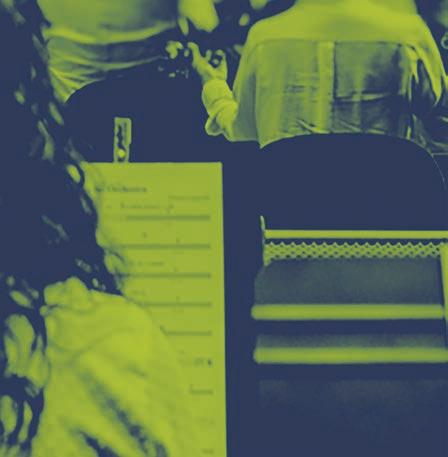
JASON ISBELL AND THE 400 UNIT • ALEJANDRO ESCOVEDO • MUSIC OF THE BAROQUE • DAME JANE GLOVER • ANTHONY MCGILL • CROWDED HOUSE AZNAVOORIAN DUO • JOFFREY BALLET • QUEEN! DJs FROM METRO AND SMARTBAR • JULIETA VENEGAS • LA SANTA CECILIA



2024













































































































 Author Arionne Nettles AJAH JOLLY
Author Arionne Nettles AJAH JOLLY
























































































































































































































